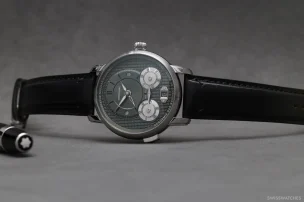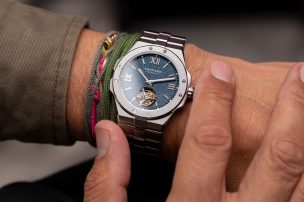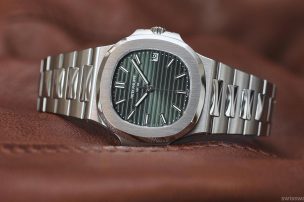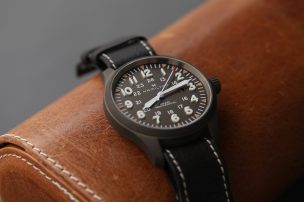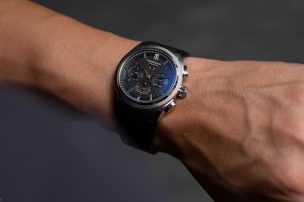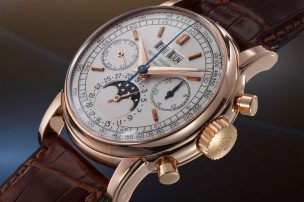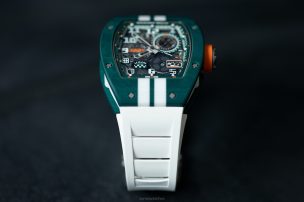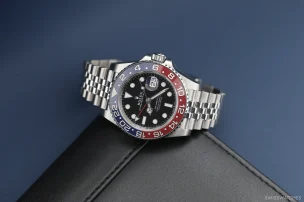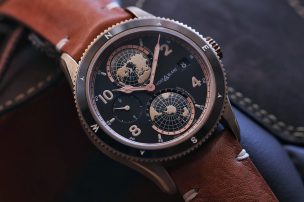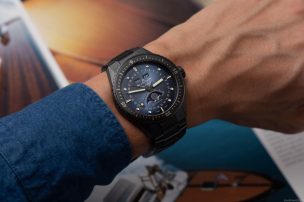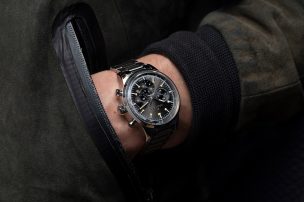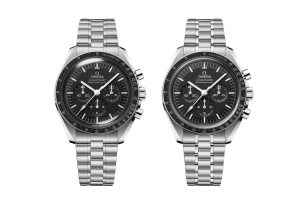
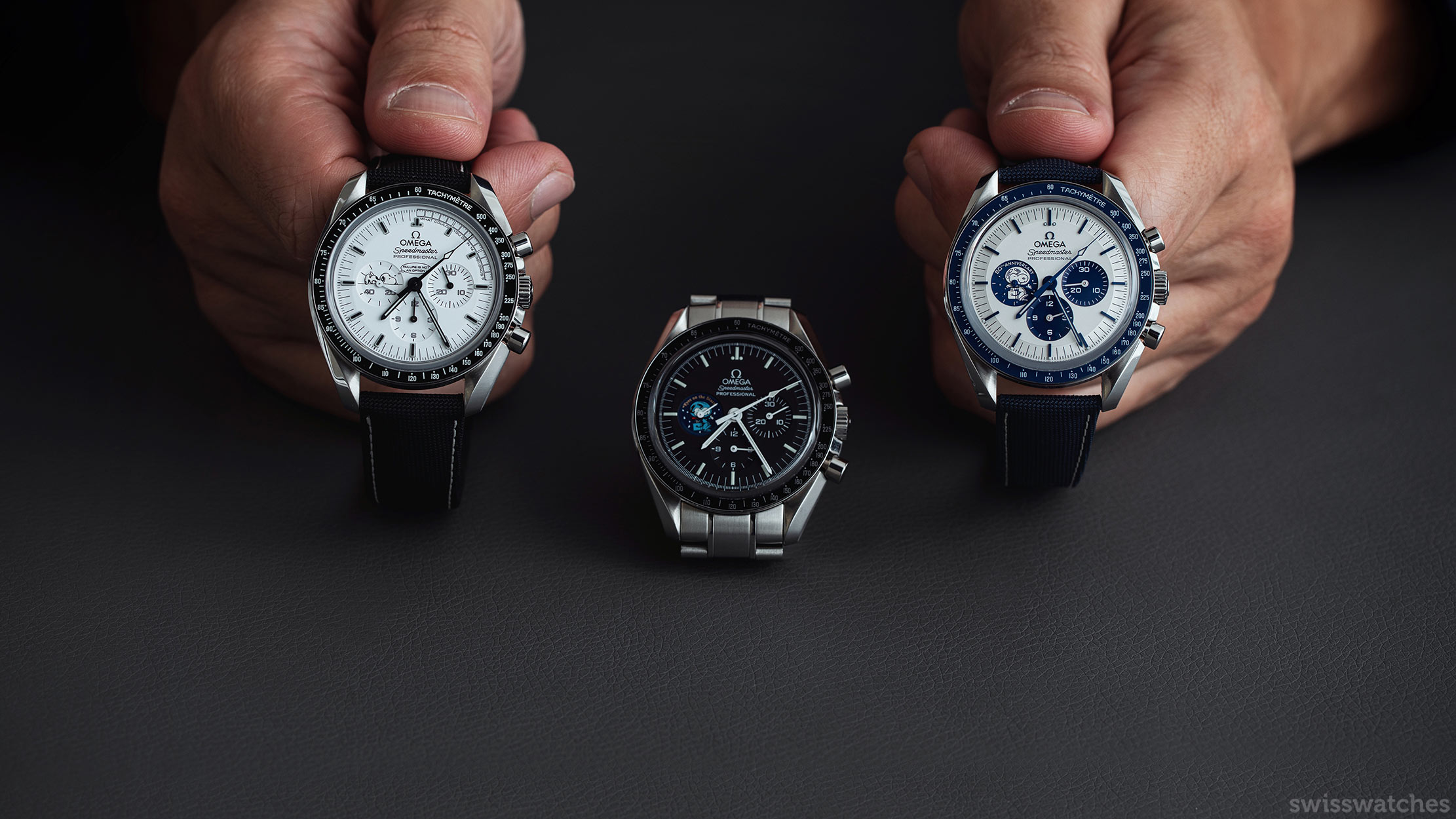
In The Metal: All Three OMEGA Snoopy Speedmaster Watches
In a feat almost as impressive as Apollo 13, we were able to gather all three legendary OMEGA Snoopy watches together in the same room. We decided to size them up in the metal, from aesthetics and functionality, to the story behind each watch. It’s time to focus on three extraordinary things: Space, Snoopy, and Speedmasters.
This article takes an in-depth look at the 2003 OMEGA Speedmaster “Snoopy”, the 2015 Speedmaster “Silver Snoopy Award”, and the 2020 Speedmaster Co-Axial Master Chronometer Chronograph 42 mm “Silver Snoopy Award” 50th Anniversary. But firstly, let’s start by taking a look at the story behind the watches.
A Friendly Beagle and NASA: Why?
Snoopy is a cartoon dog. NASA is the U.S. government agency responsible for science and technology related to air and space. What on earth is the connection?
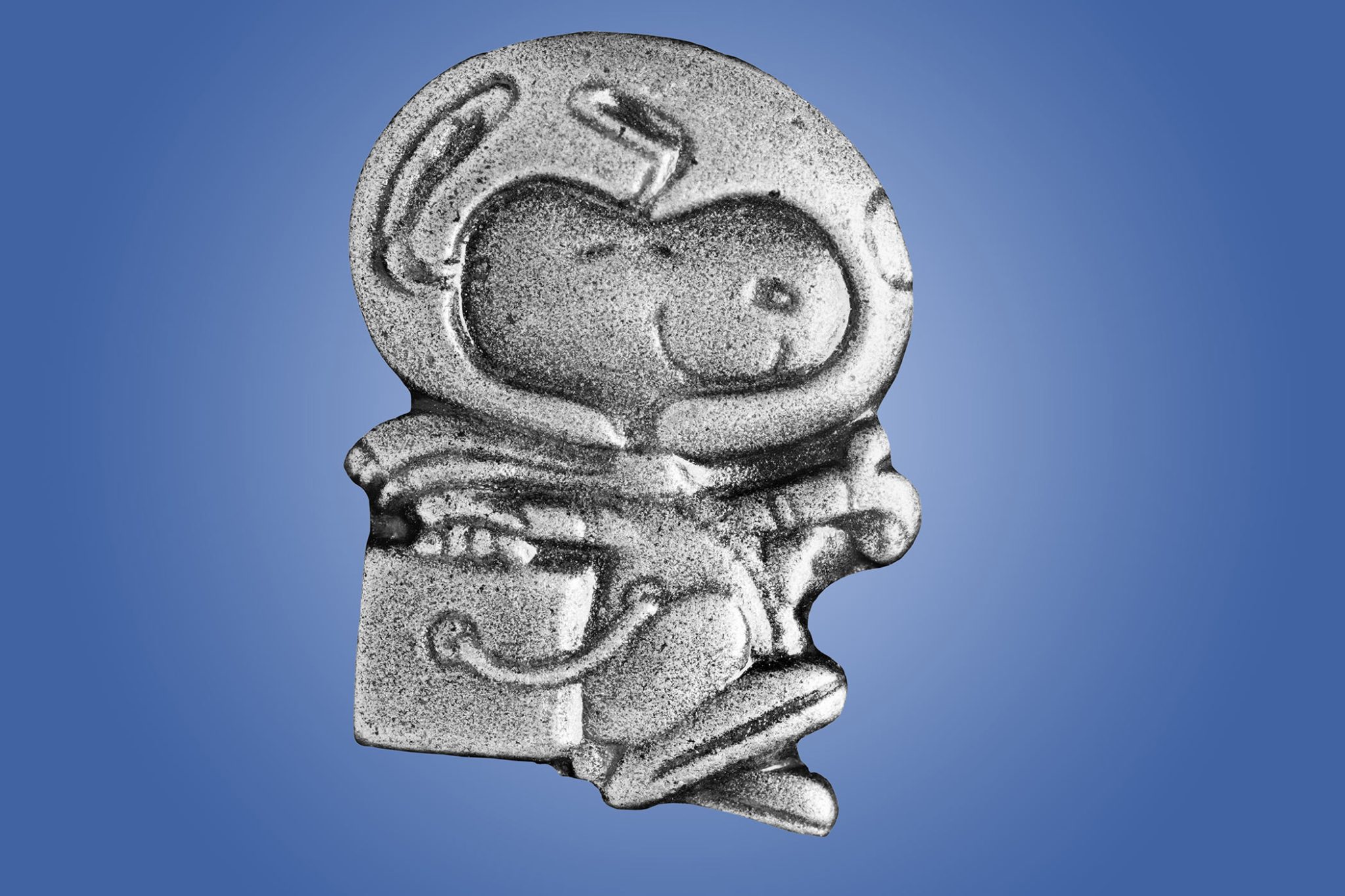

Silver Snoopy Pin © Photo Credit: NASA/Marvin-Smith (left)
NASA Headquarters in Florida © Photo Credit: NASA/Cory Huston (right)
Reason 1: Snoopy is a master aviator
We all know the loveable Peanuts character, inspired by Charles M. Schulz’s own dog Spiky, who, according to the cartoonist, was “the brightest dog [he] ever met.” It is no wonder, then, that Snoopy is equally skilful, not least when it comes to flying. Snoopy frequently took on the role of World War I Flying Ace, with his hat, goggles, and red scarf flying in the wind.

Snoopy Drawing
© Photo Credit: Peanuts Worldwide
Another example is “Snoopy vs. the Red Baron” (later a well-known song in the late 60s), referring to airman-Snoopy engaging in an imagined combat with the well-known WW1 German fighter pilot. Last but not least, there is NASA’s famous relationship to Snoopy.
Reason 2: To serve as a symbol
NASA has had its fair share of setbacks; the 50s and 60s were shaped by a bitter struggle between the USA and USSR, with both vying to be on top in the fields of nuclear weapons and space technology.
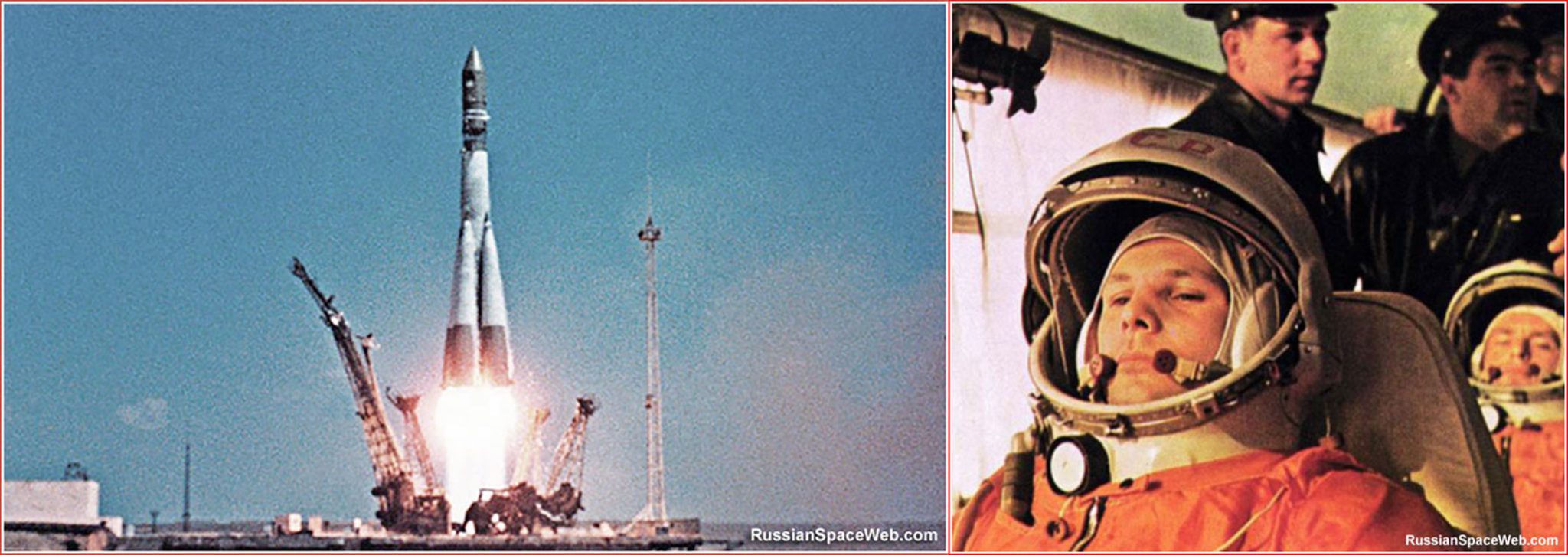
Vostok lifts off on April 12, 1961 (links). Yuri Gagarin on his way to the launch pad (rechts).
© Photo Credit: Russian Space Web, Anatoly Zak
By 1957, the USSR – and thus communism – was undoubtedly in the lead, sending Sputnik 1, the first telecommunications satellite, into space. In the same year, it also sent Sputnik 2, carrying an ill-fated dog named Laika – the first living animal to go into orbit – into space. In 1959, the USSR’s Luna 1 became the first man-made object to orbit the sun. This was shortly followed by the USA’s Pioneer 4‘s Moon flypast – to which the USSR responded by launching Luna 2 at the Moon. A year later, the USA’s Discovery XIV became the first satellite equipped with a spy camera. Again, this was trumped by the USSR in 1961, as they sent the first man ever into space. The USA continued to lag behind, sending Alan Shepard into space later that year.
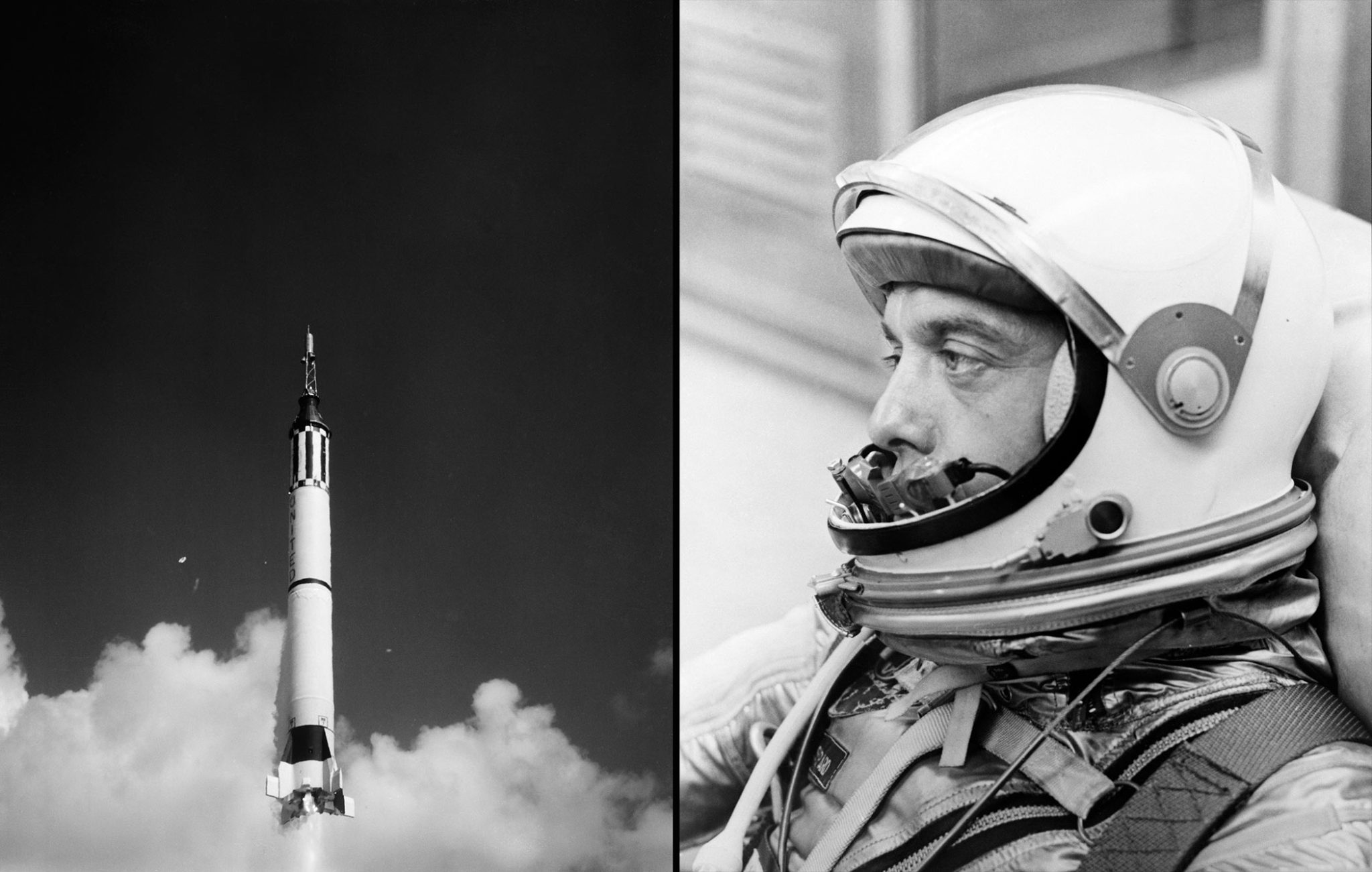
May 5, 1961 – Mission: Mercury-Redstone 3 (MR-3), Spacecraft: Freedom 7, Alan B. Shepard
© Photo Credit: NASA
By 1962, the USSR remained in the lead. However, the real winner would naturally be the first one to get a man on the Moon. Therefore, in his famous so-called “Moon Shot” speech, President John F Kennedy challenged America to put a man on the moon by the end of the decade. This would become the most expensive civilian technological program in American history. Both sides poured money into their respective projects.
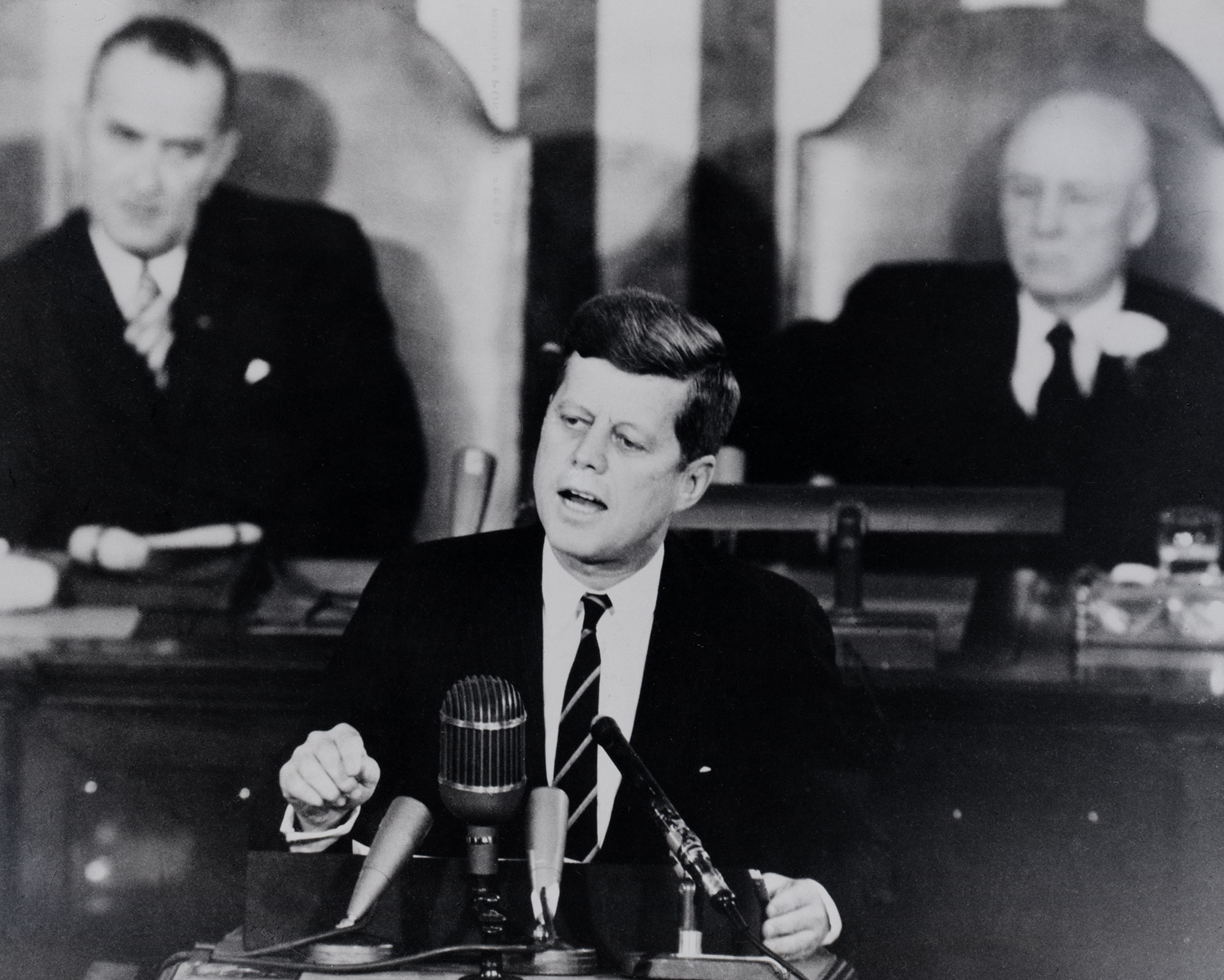
May 25, 1961 – President John F. Kennedy, with Vice-President Lyndon B. Johnson. and Speaker of the House Sam Rayburn behind him – Source
NASA had their work cut out; according to German-American aerospace engineer Wernher von Braun, they needed to improve their rockets ten-fold in order to have a shot. Roughly 400,000 researchers, engineers and mathematicians were working to find radical solutions at the project’s peak. Throughout the decade, 2.5% of the USA’s annual gross domestic product (GDP) went towards the project every year. That amounted to approximately $25 billion per year – equating to $100 billion today.
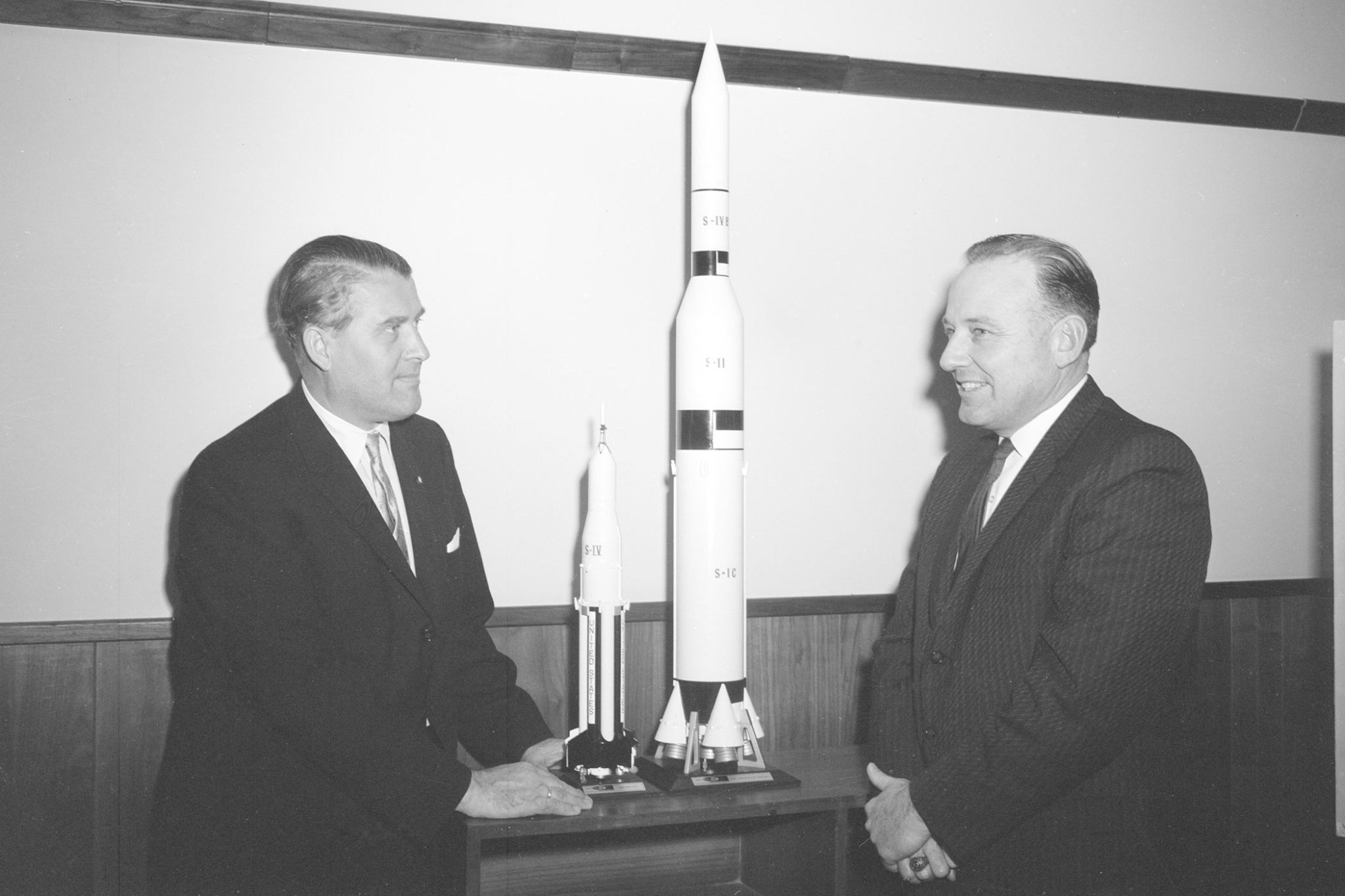
MSFC Director, Dr. Wernher von Braun and Joe Waggoner, Democratic representative of Louisiana, discuss Apollo models. – Source
Fortunately, however, it eventually paid off. In July 1969, Apollo 11 launched with Neil Armstrong, Buzz Aldrin and Michael Collins on board. Days later, Armstrong became the first man on the Moon; America –and thus capitalism – had won. The legacy of this achievement is more than a symbolic triumph for capitalism and the West; rather, the technological advancements that came about as a result of the project continue to touch our lives today.

Apollo 11 Mission – The lunar landing, Astronauts: Edwin E. Aldrin Jr., Neil-Armstrong, Michael Collins.
© Photo Credit: NASA
The road to success was by no means easy. Money aside, the programme had got off to a devastating start. In 1967 – a mere two years before the Moon landing – during a launch rehearsal test, a flash fire in the Apollo 1 command module led to the death of all three crew members. It was following this disaster that NASA contacted Charles Schulz, asking to make Snoopy its safety mascot; a symbol of much-needed good fortune and success. Against this backdrop of death, colossal amounts of money, and high levels of pressure, the symbolism of Snoopy is far more poignant than one might expect.
Reason 3: To drum up support
There was also a second motive for Snoopy becoming the agency’s mascot. NASA wanted to find a mascot that would be accepted – and moreover, popular – with the public. The choice of Snoopy partly took inspiration from the US’ Forest Service’s Smokey Bear, whose persona was used throughout the war to teach citizens how to extinguish forest fires.
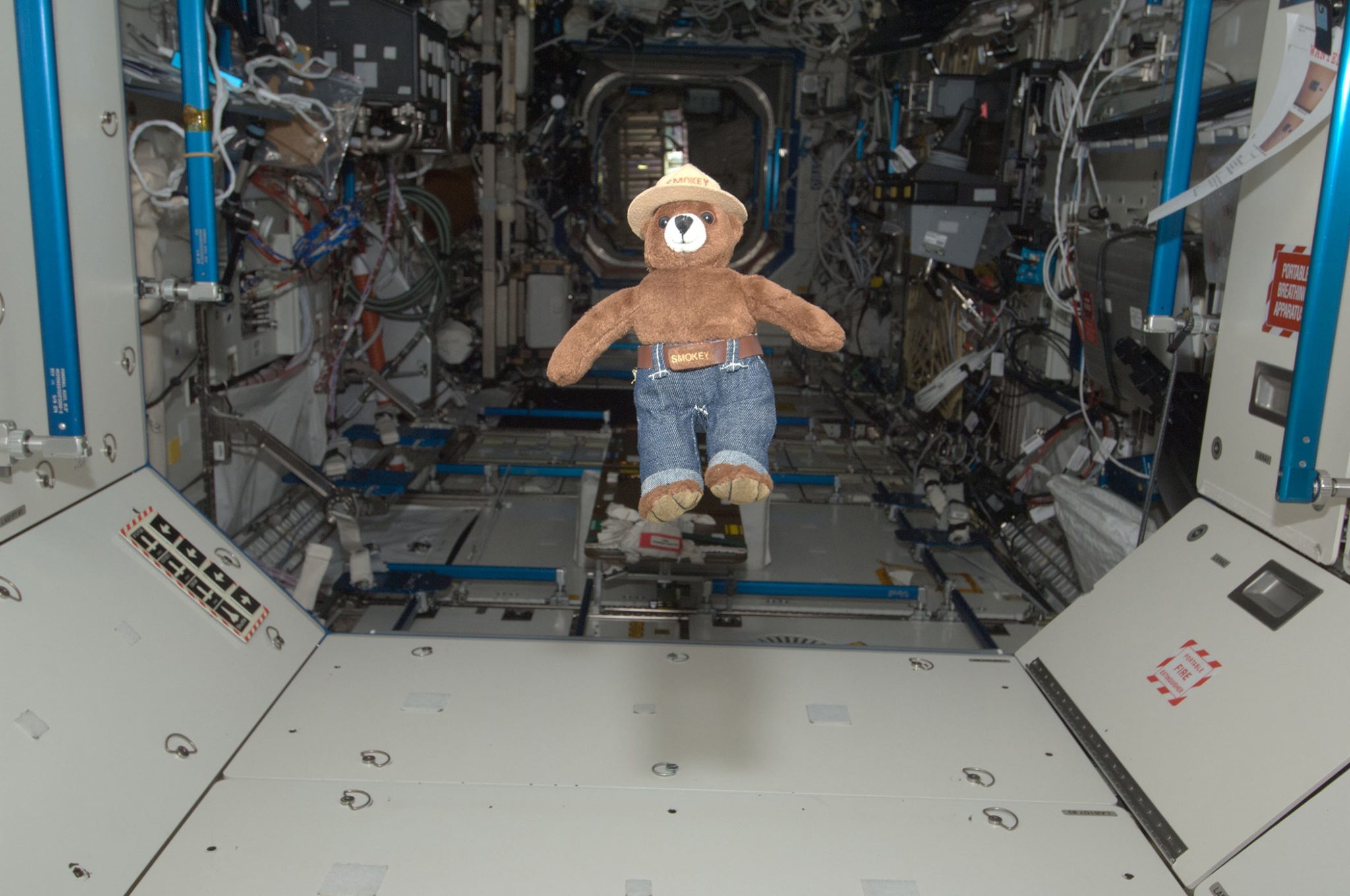
Smokey the Bear Toy © Photo Credit: NASA
A well-known character since the 40s, Smokey Bear was a mascot who very successfully got the American public on board; exactly what NASA also needed to do. After all, as mentioned, the struggle to reach the Moon was seriously costly, in ways more than one. A friendly mascot was in this sense a clever and much-needed manoeuvre to win over the masses.
Reason 4: To honour employees and contractors
Schulz went on to help design a pin for the “Silver Snoopy award”. This was an award for NASA staff or contractors who had made outstanding contributions in ensuring safer spaceflight operations. Snoopy began to make more frequent appearances, for example during the Apollo 10 mission.
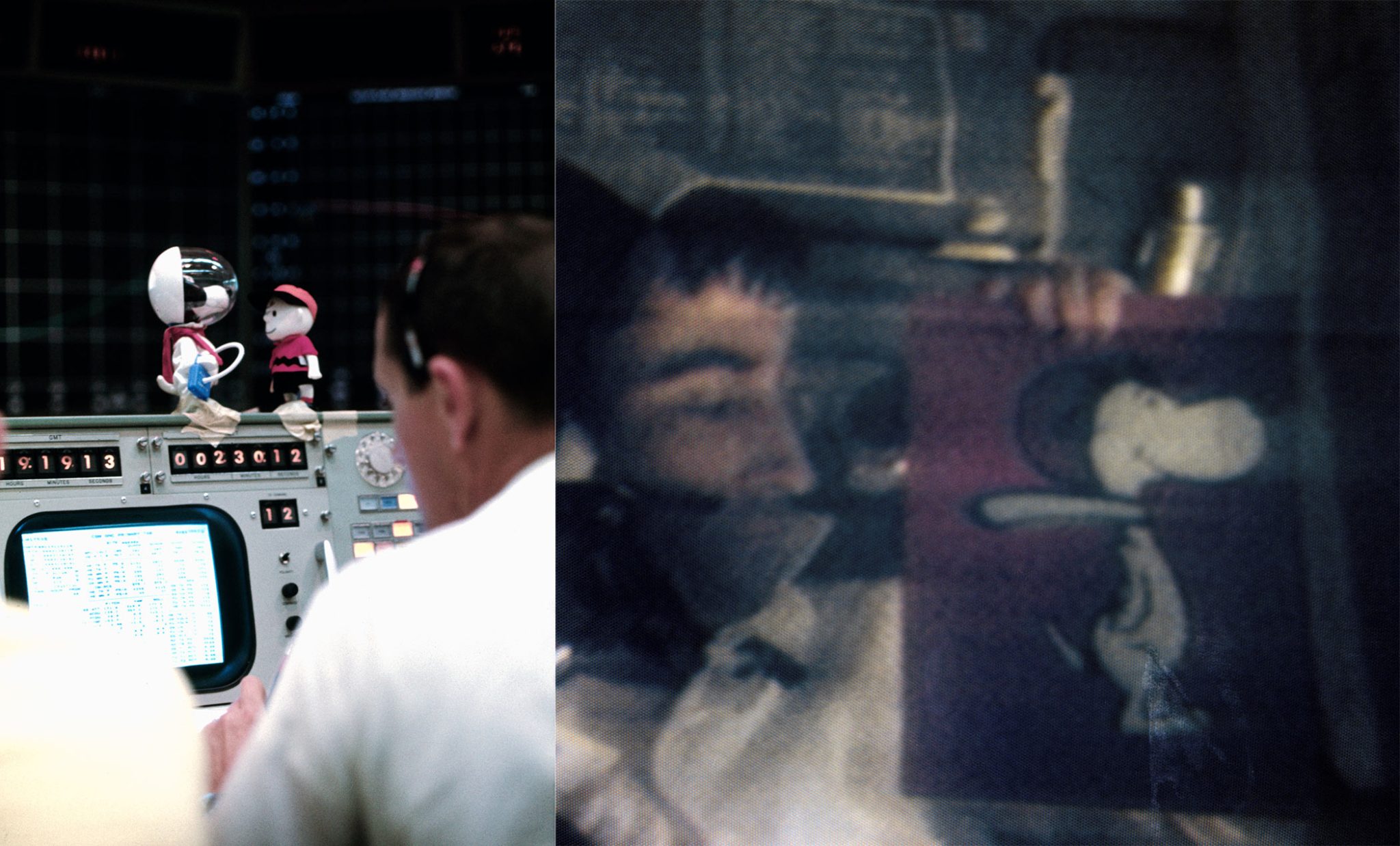
During lunar orbit operations, the Lunar Module will be called “Snoopy” when it is separated from the Command and Service Modules. © Photo Credit: NASA
In this pre-run to the Moon landing, NASA nicknamed the lunar module “Snoopy” – not least because its job was to “snoop” around. Meanwhile, the command module’s nickname was “Charlie Brown”.
NASA and OMEGA: An unlikely friendship?
So, we’ve joined the dots between NASA and Snoopy. But why such a close relationship between OMEGA and NASA?
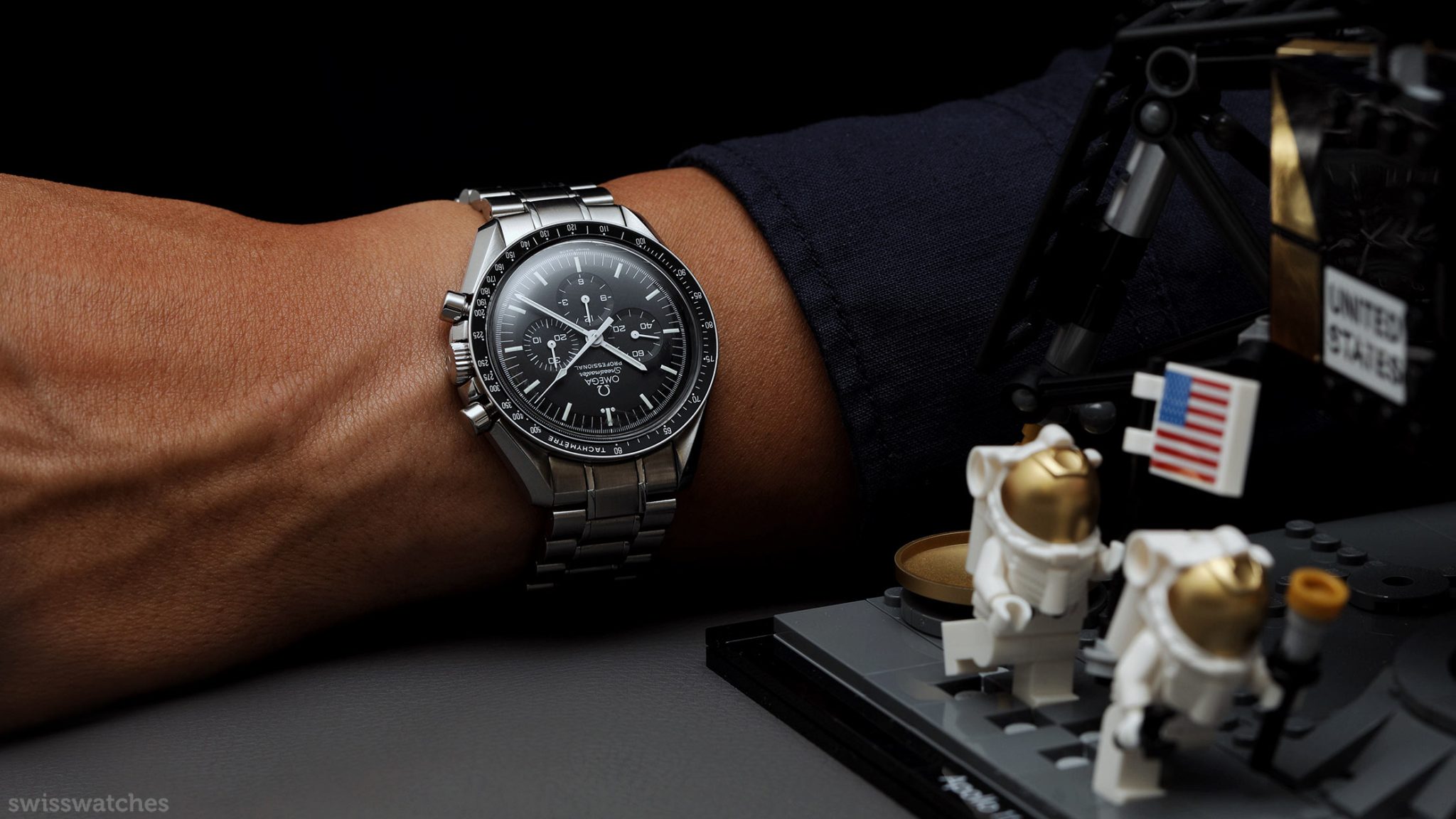
Reason 1: Both the astronauts and NASA itself were OMEGA fans
Most famously, the OMEGA Speedmaster Professional 42 mm was the first watch on the Moon, on the wrist of Buzz Aldrin in 1969. However, some astronauts were well ahead of the game even before then. For example, Walter “Wally” Schirra and Leroy Gordon “Gordo” Cooper had already privately purchased their second-generation Speedmaster models (Ref. CK 2998) by 1962. Then, following extremely stringent testing (on the Ref. ST 105.003, to be precise), NASA declared the OMEGA chronograph to be the official watch for its space missions on March 1, 1965.
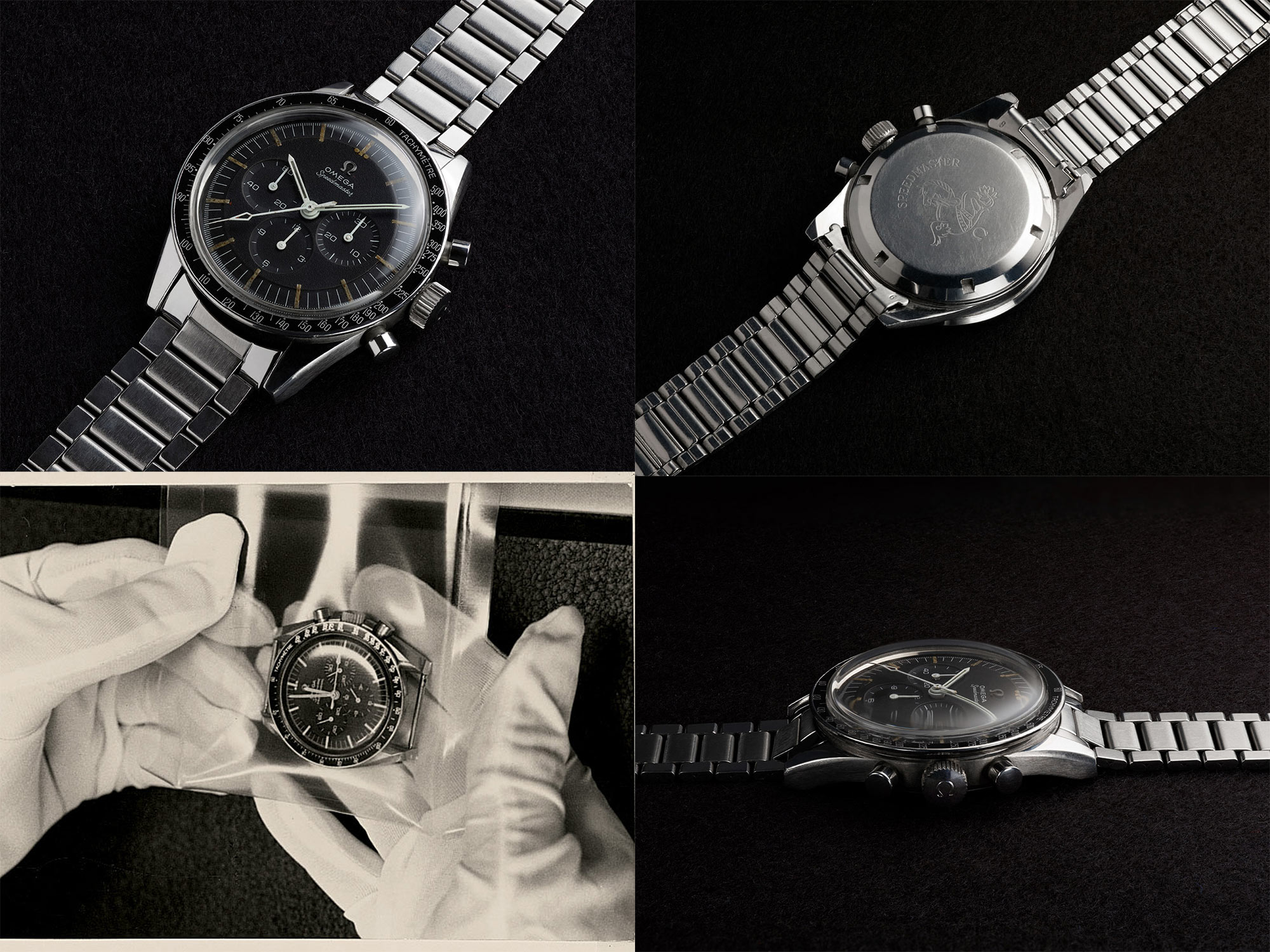
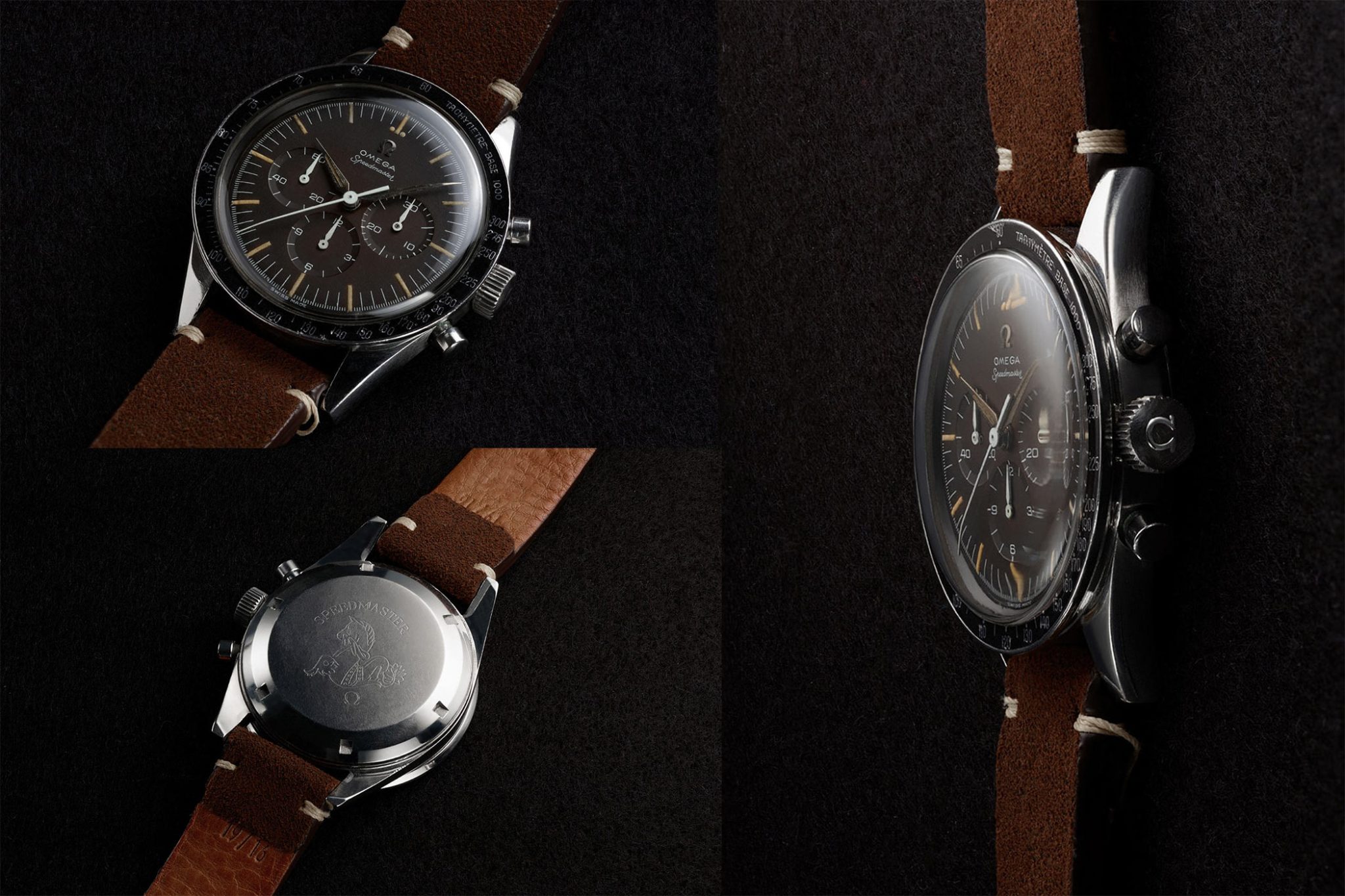
Ref. ST 105.003 (L) and Ref. CK2998 (R) © Photo Credit: OMEGA
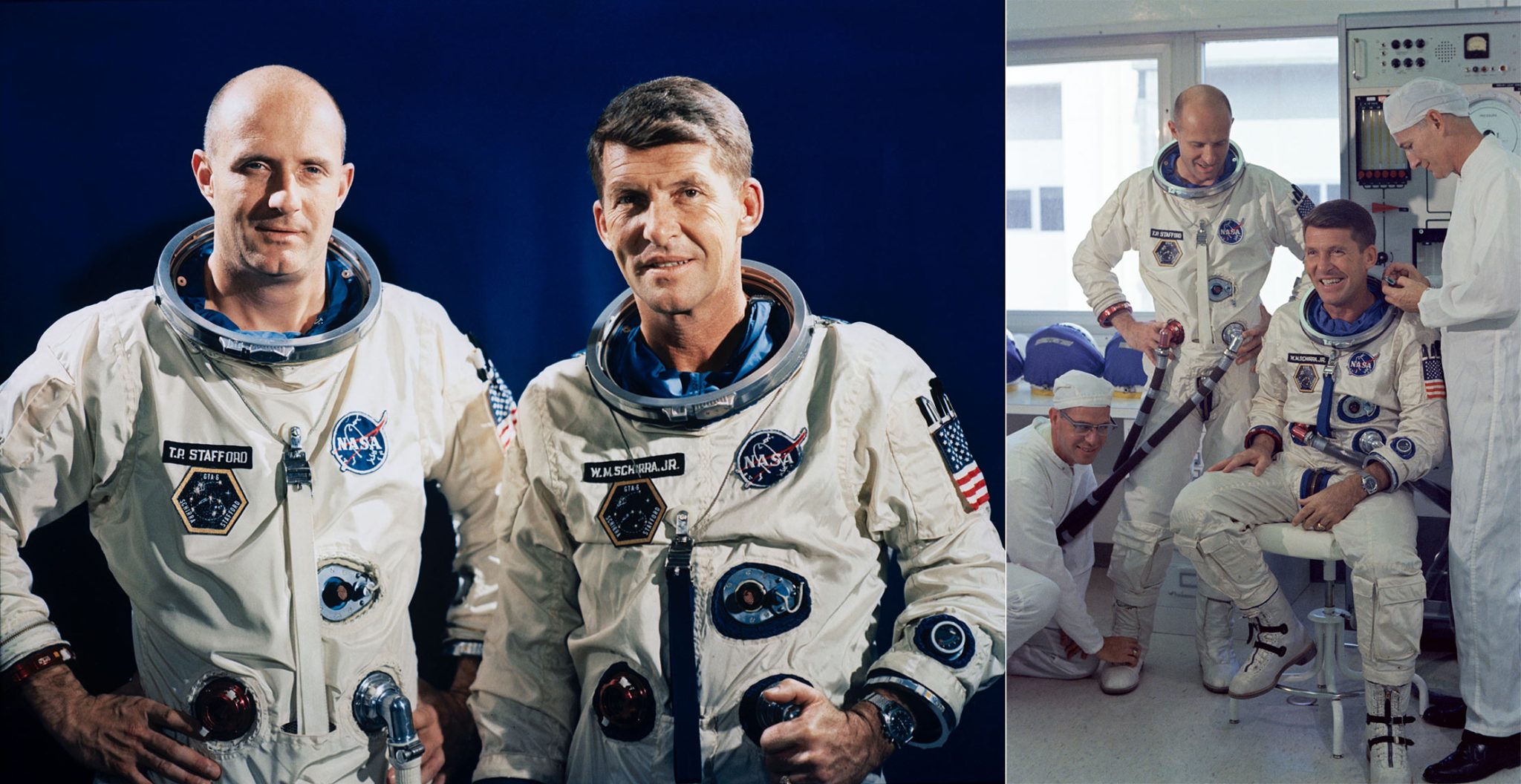
Walter „Wally“ Schirra with the Speedmaster Ref. CK2998 © Photo Credit: NASA
It was first taken into space only a few weeks later by Gemini III astronauts John Young and Virgil “Gus” Grissom. However, the real moment of truth came on June 3, 1965, when Edward White took a space walk on the Gemini IV Mission wearing an OMEGA Speedmaster. In 1965, for the first time, OMEGA printed the word Professional on the dial. It was Ref. ST 105.012. Thus, the first advertising campaigns with the Speedmaster began to be created.
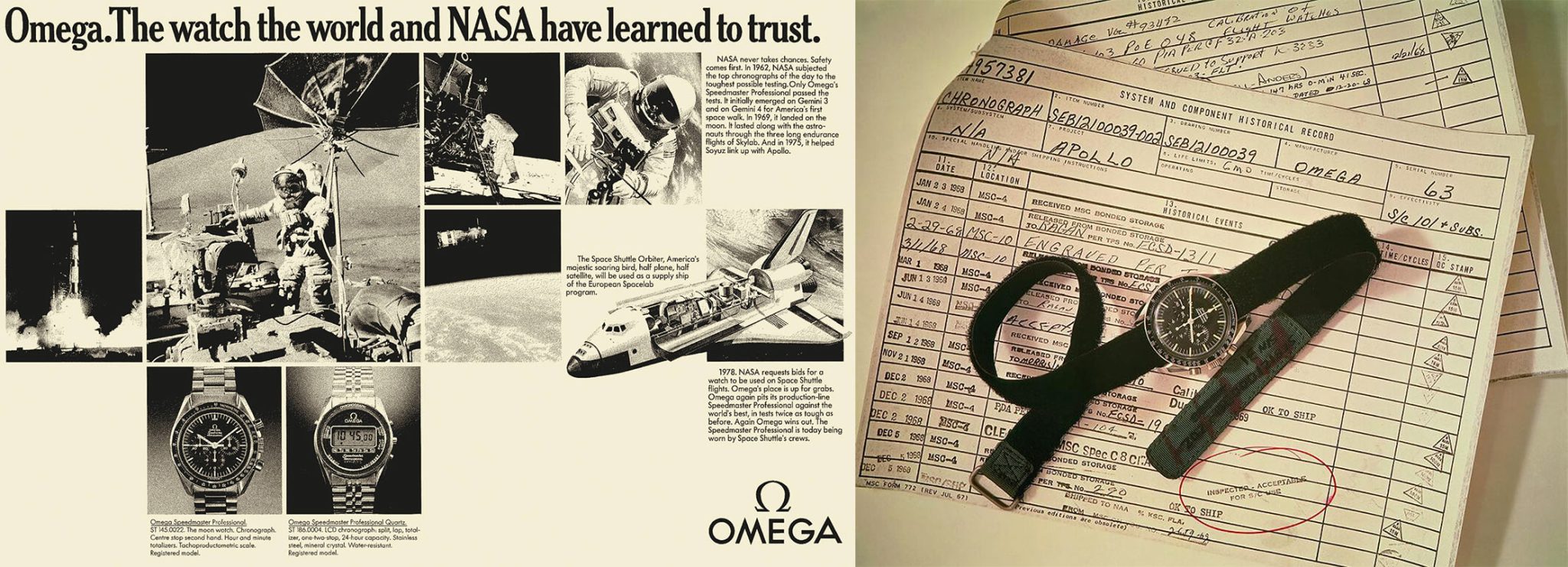
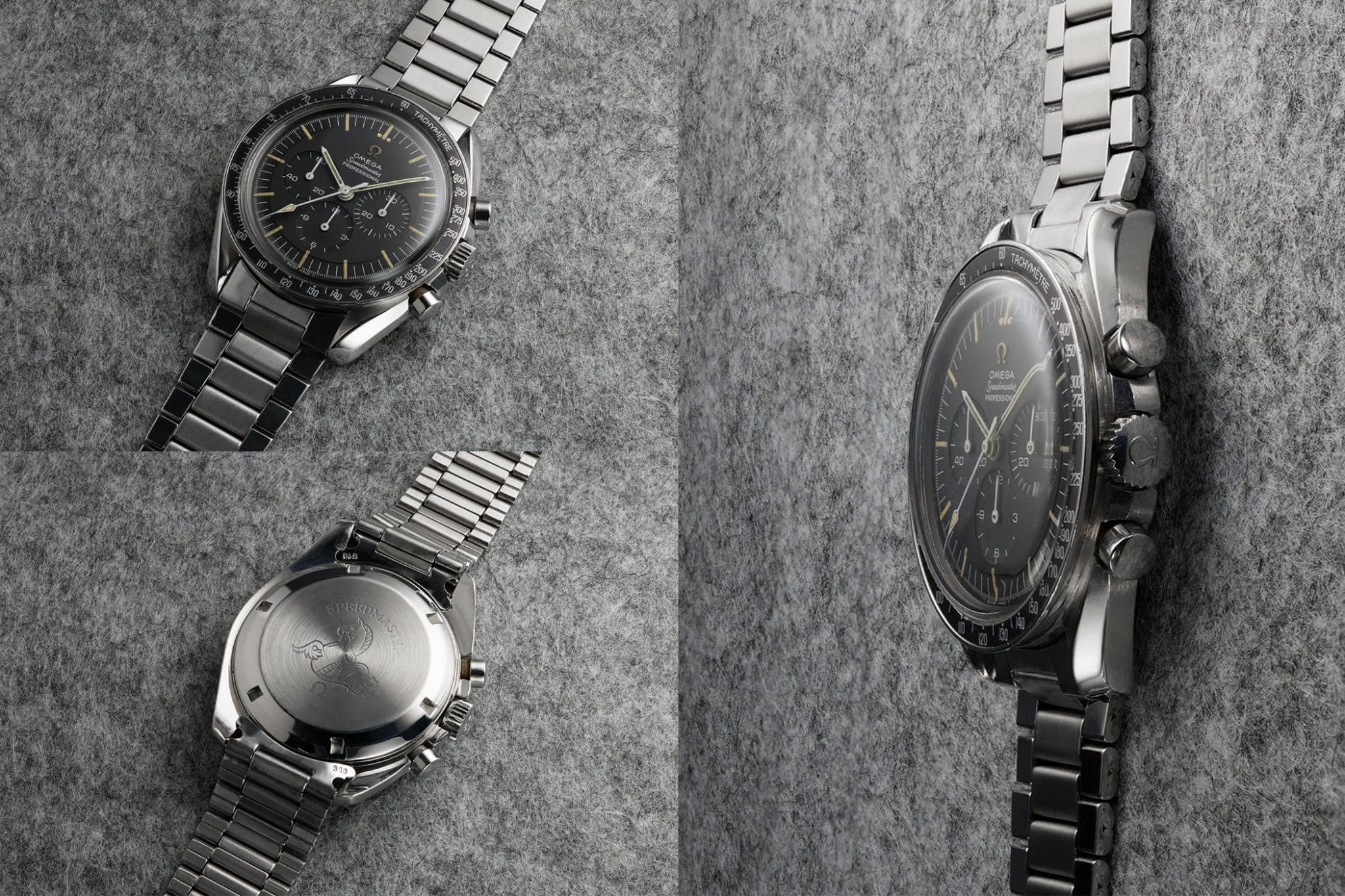
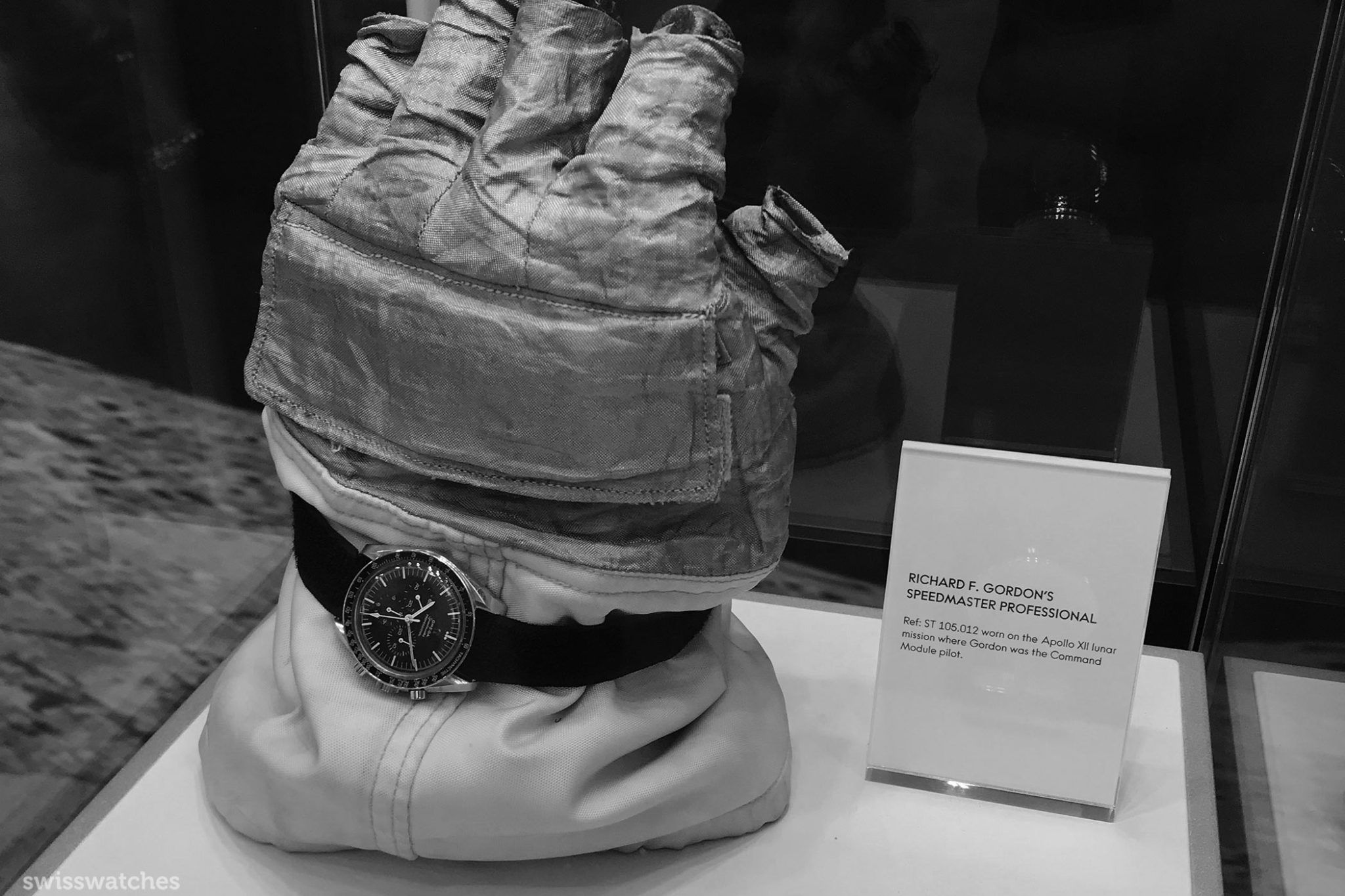
ST 105.012 (left) / ST 105.012 (right)
© Photo Credit: OMEGA
Reason 2: OMEGA helped to save NASA lives
It was a few years later, in 1970, that the watch played a genuinely vital role in ensuring astronauts’ safety during a mission. That mission was Apollo 13. In case you haven’t seen the film (you should), here’s what happened. Following the explosion of an oxygen tank, the crew needed to return to Earth. However, they had drifted 60 nautical miles from where they should have been. In order to reenter the Earth’s atmosphere at the right angle, the crew needed the rocket motors’ burn time to last exactly 14 seconds.
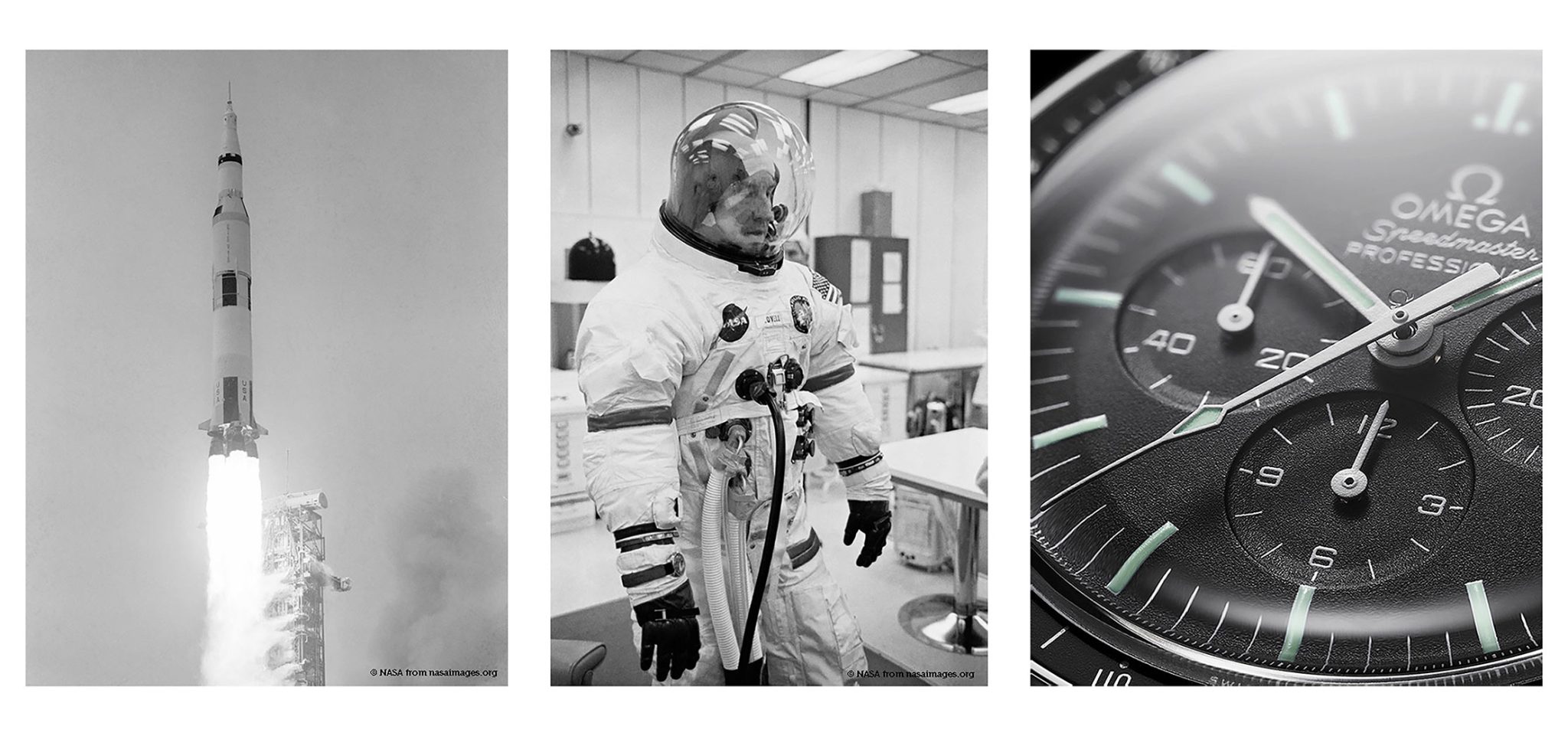
Apollo 13 Mission © Photo Credit: NASA
They had one chance: if the angle was too steep, the rocket would burn up, or bounce off the atmosphere and disappear into space. This left zero space for errors. In what would become known as a “successful failure”, Jack Swigert used a OMEGA Speedmaster chronograph to perfectly time these manoeuvres, thus conserving vital energy. As a result, the crew returned safely to Earth.
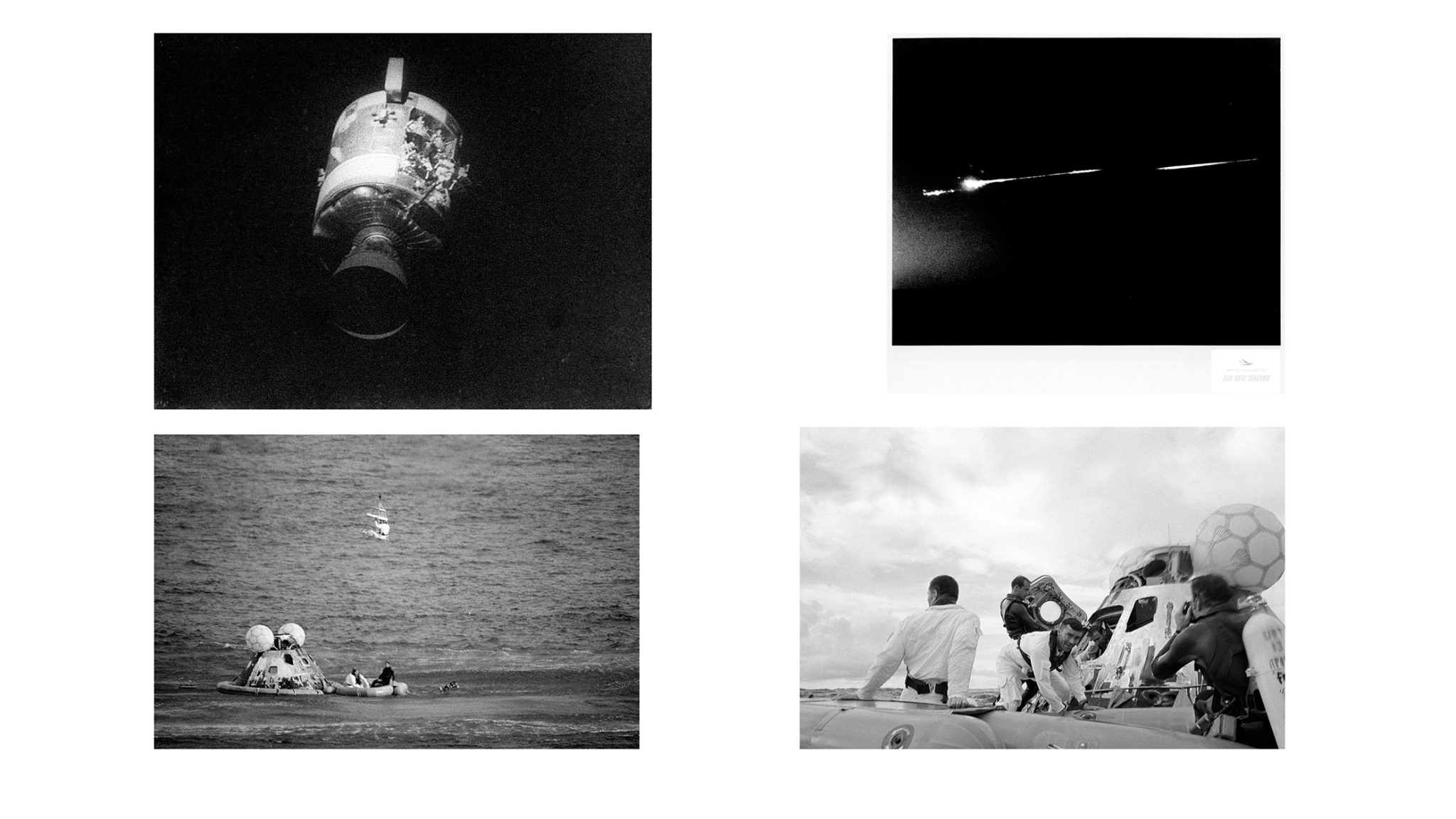
Apollo 13 Mission © Photo Credit: NASA
It was this event that led to a whole new level in OMEGA and NASA’s relationship, with NASA awarding the horology house the Silver Snoopy award on 5 October, 1970. This award is in recognition of “professionalism, dedication and outstanding support that greatly enhanced space flight safety and mission success”.
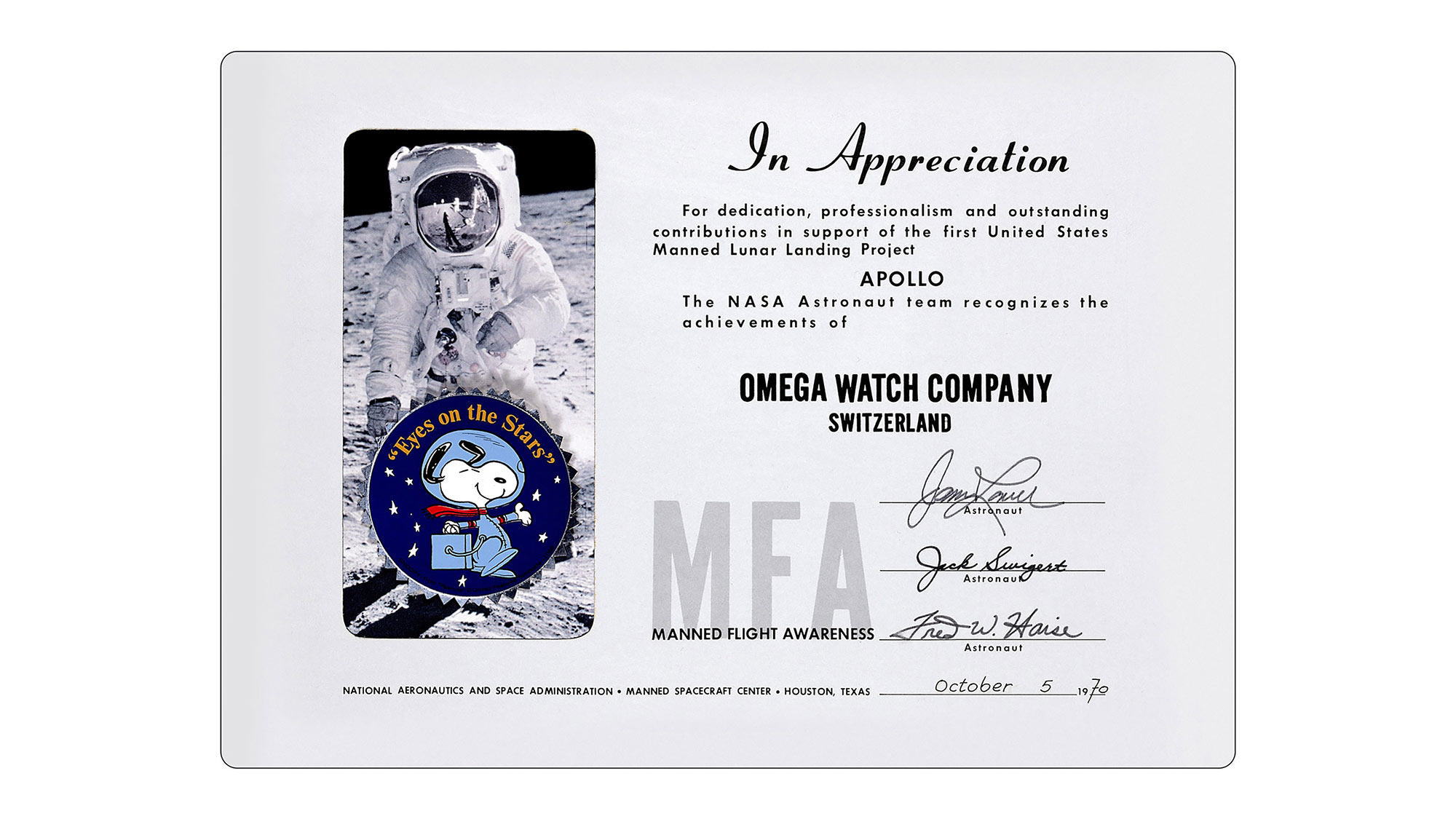
© Photo Credit: NASA
As well as a commendation letter, the award includes a certificate featuring an illustration of Snoopy in his astronaut gear, alongside a silver lapel pin depicting the same thing. The Silver Snoopy award was presented to OMEGA’s technical manager, Hans Widmer, by astronaut Thomas Stafford – one of the 24 people to have flown to the Moon (while a mere 12 have actually walked on the lunar surface).
2003: The first OMEGA Snoopy Speedmaster
NASA awarding OMEGA with the Silver Snoopy Award was the last we heard of the matter for a long while. Then, in 2003 – completely unexpectedly – the Speedmaster “Snoopy” (Ref. 3578.51.00) appeared. Despite not being released on a specific date or anniversary, it was the first watch to commemorate Apollo 13. As a limited edition of 5,441 pieces, it represents the length of the Apollo 13 mission (142 hours, 54 minutes, 41 seconds).
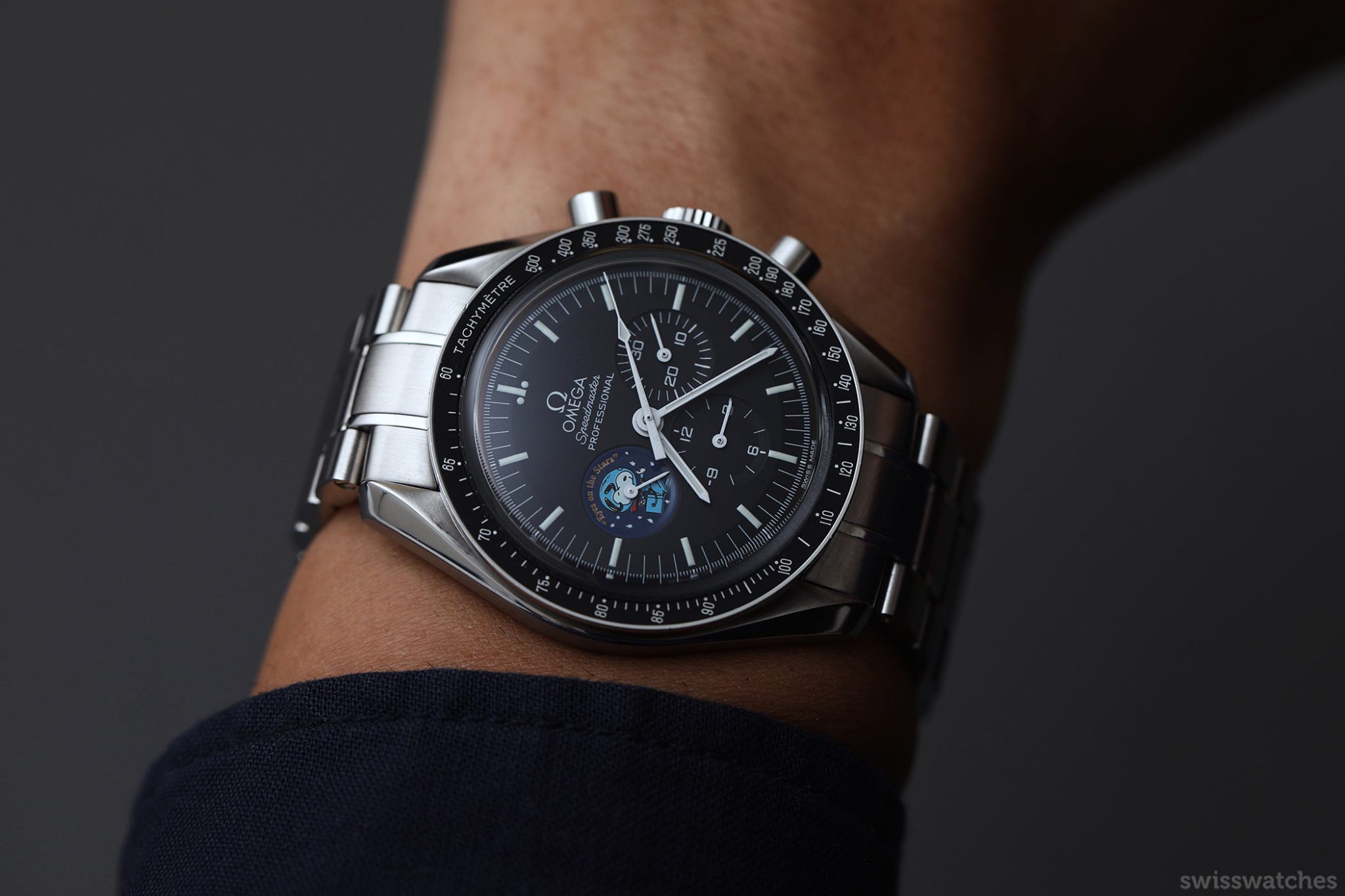
2003 OMEGA Speedmaster “Snoopy” (Ref. 3578.51.00)
Facts and Figures
The first Snoopy Speedmaster features a steel case with twisted lugs, measuring 42 mm x 14 mm. The dial, which is protected with hesalite, is nothing out of the ordinary in terms of the Speedmaster design as we know it; a black dial with white baton hands. The only thing marking it out as a special edition is the painted “Eyes on the stars” small seconds subdial, featuring NASA’s Snoopy badge. Meanwhile, the caseback features the same “Eyes on the stars” badge as the small seconds subdial. The only difference, as true OMEGA aficionados will already know, is that Snoopy’s astronaut helmet on the sapphire crystal caseback’s sticker does not feature the four reflection lines.
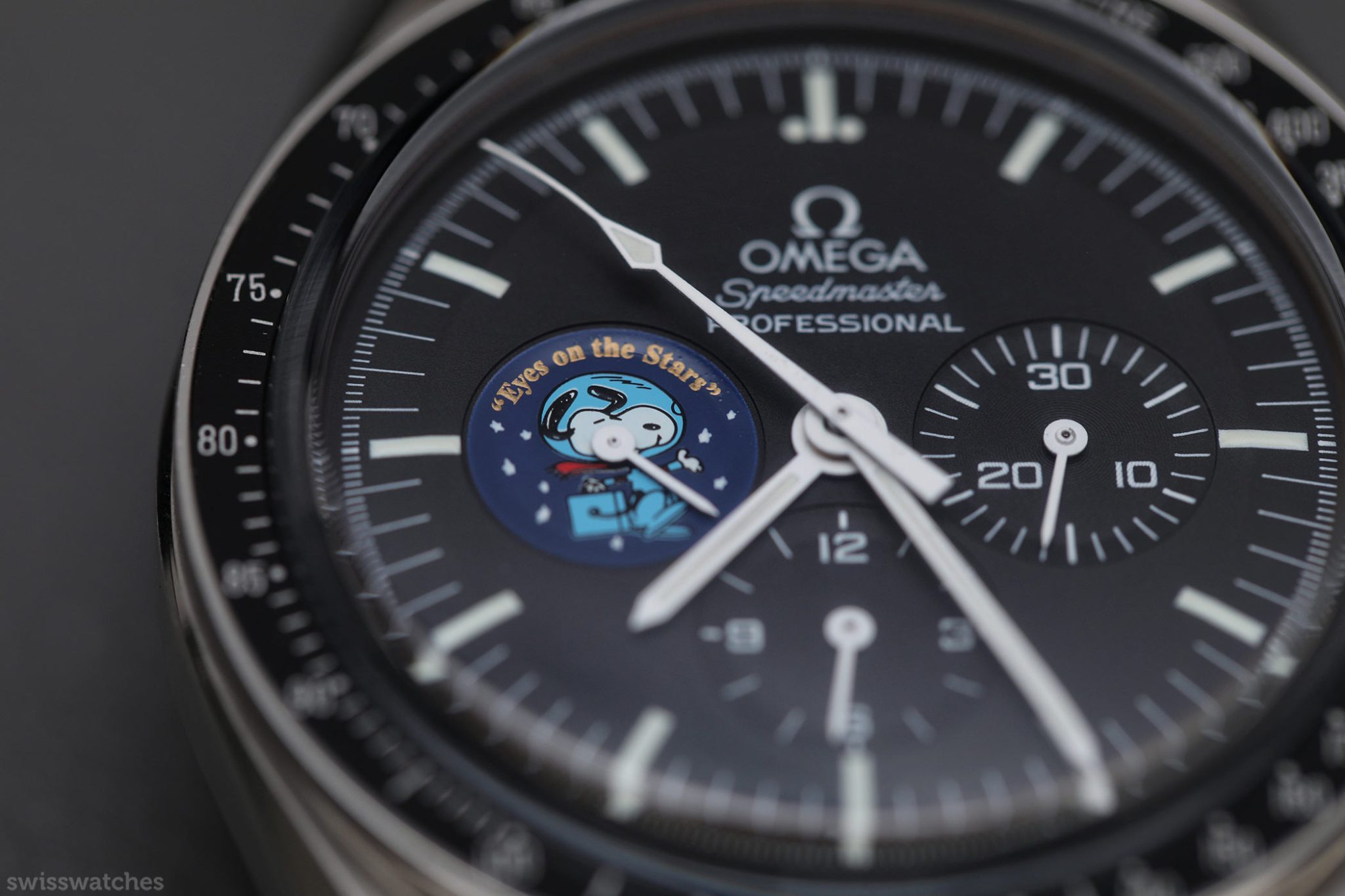
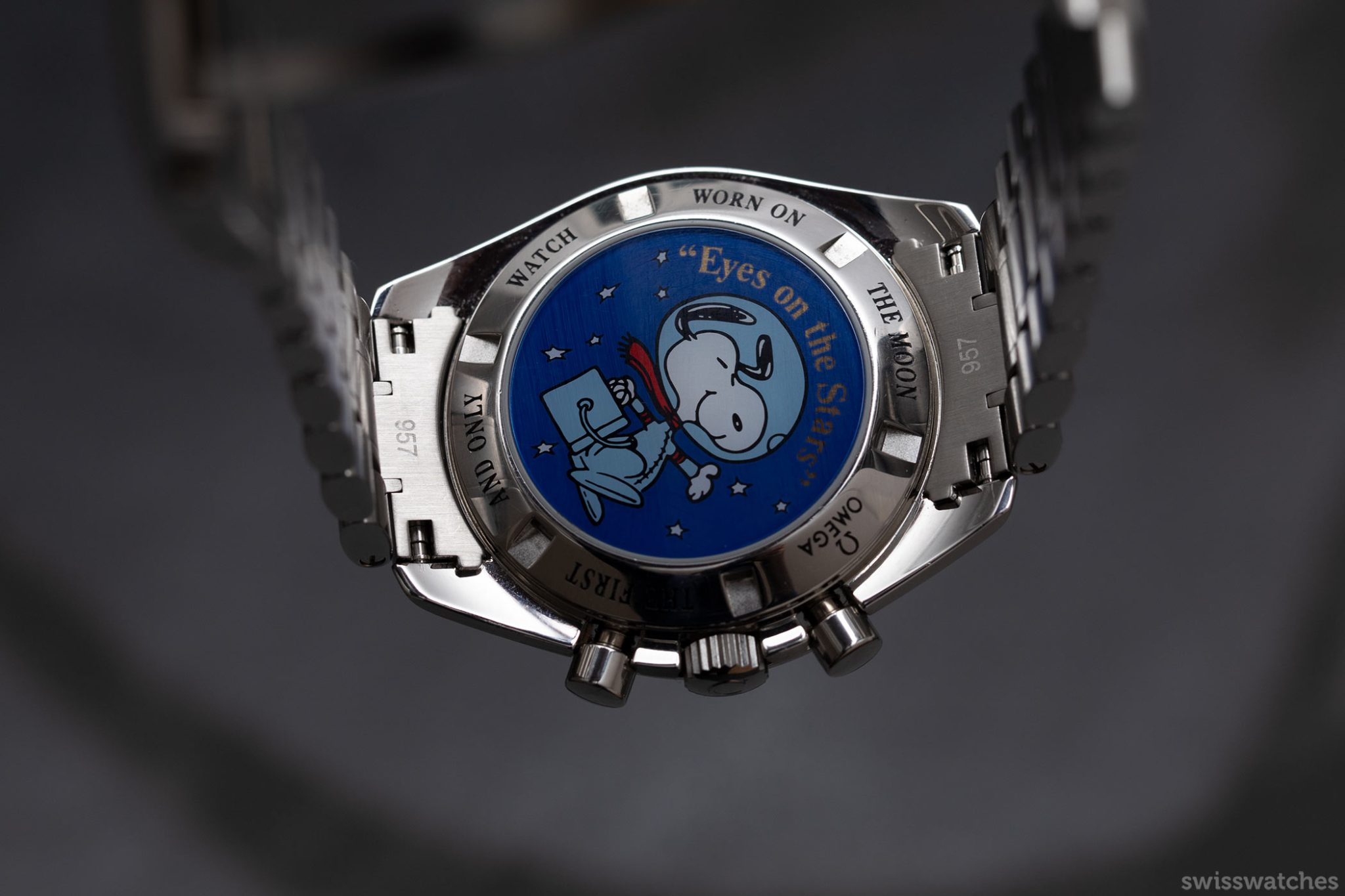
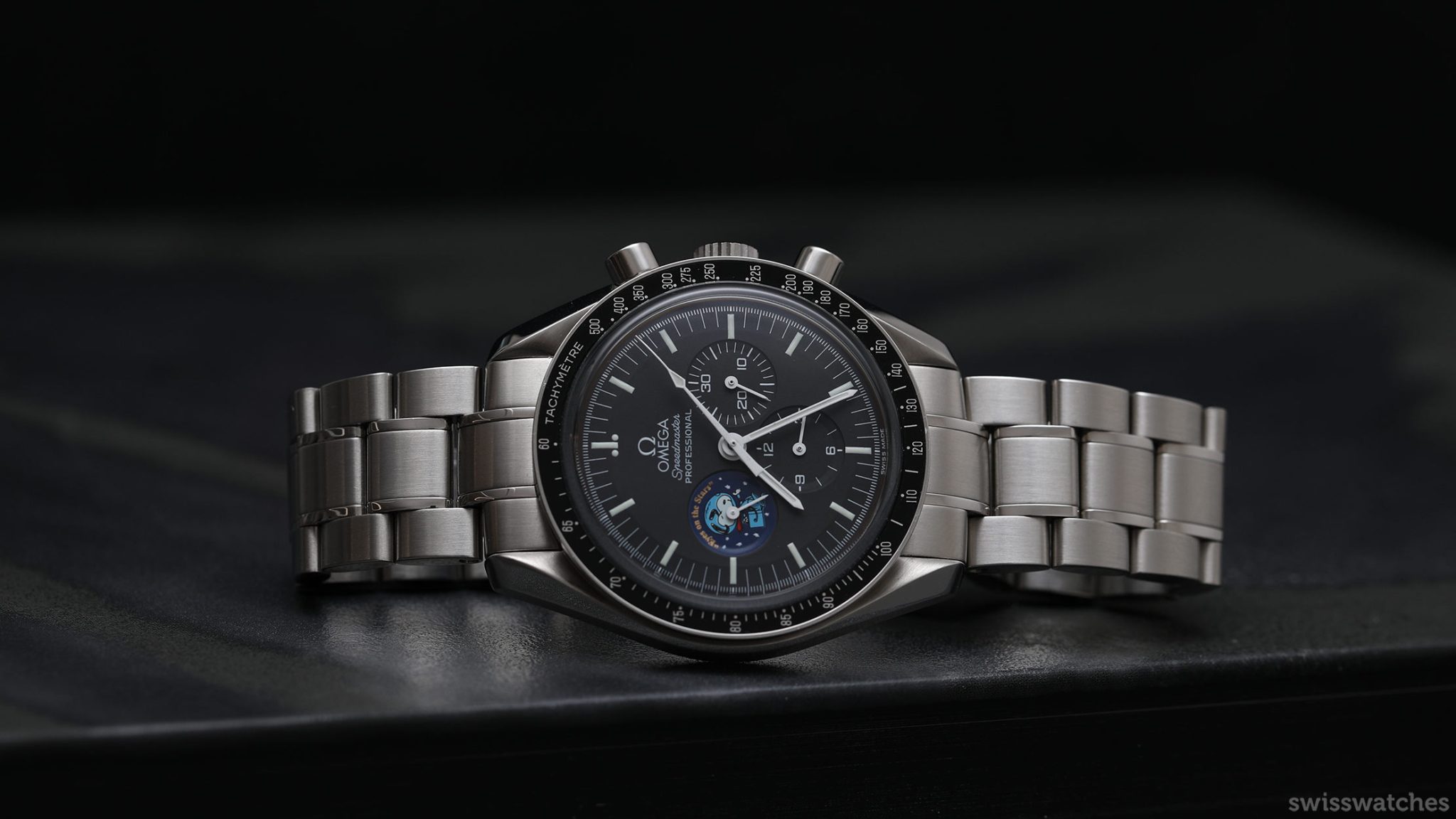
The watch is presented on a matching 1998/849 stainless-steel bracelet, which was discontinued in 2014. Notably, this particular bracelet marked the start of the two side buttons on the clasps, thus improving security. Meanwhile, the pushers are “wide and tall”, a style that was first introduced in 1967, measuring 5 mm x 3.5 mm. A final notable detail is that the tachymeter scale features the first style of “dot below 70”, used between 1995-2004.
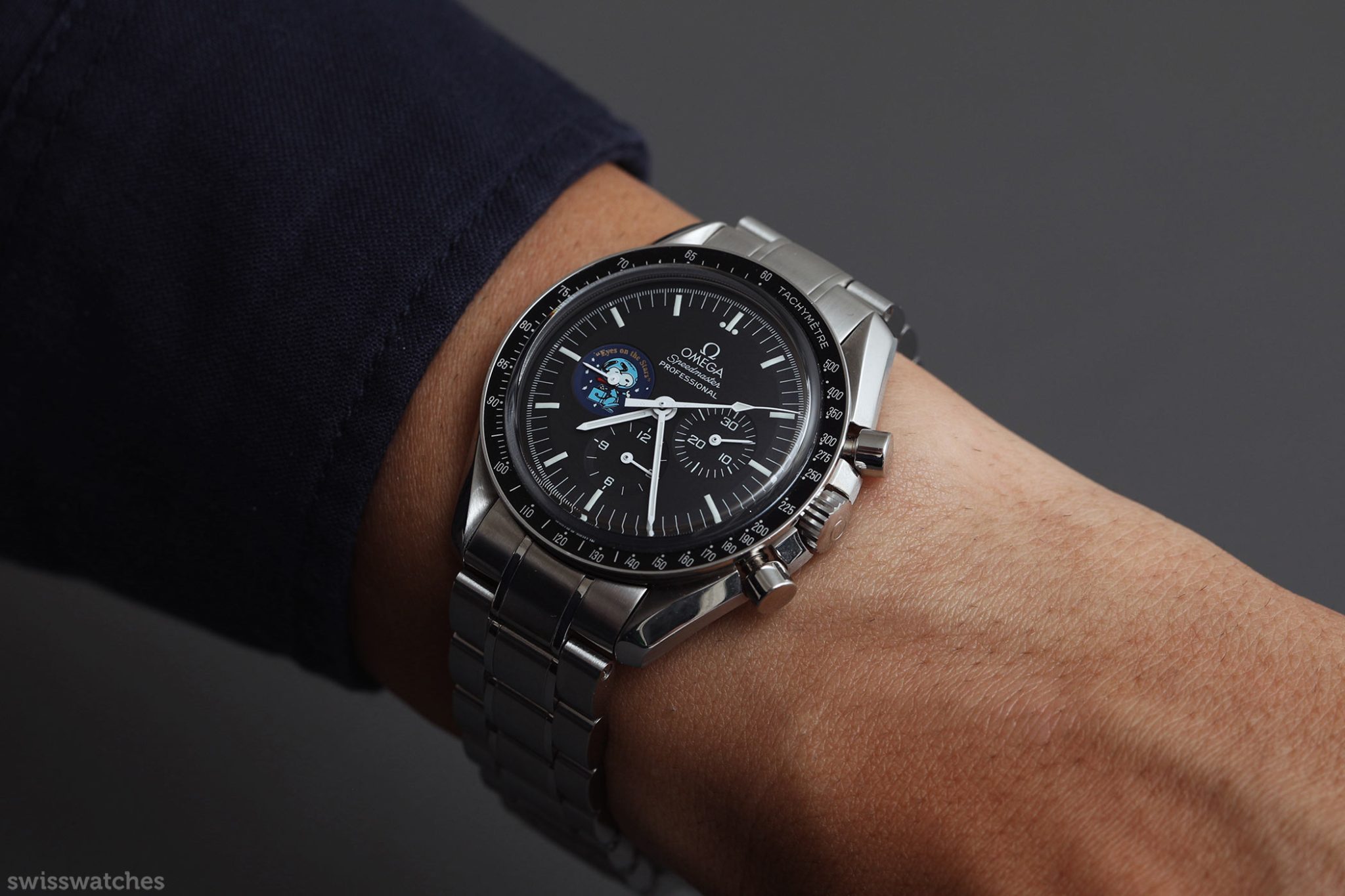
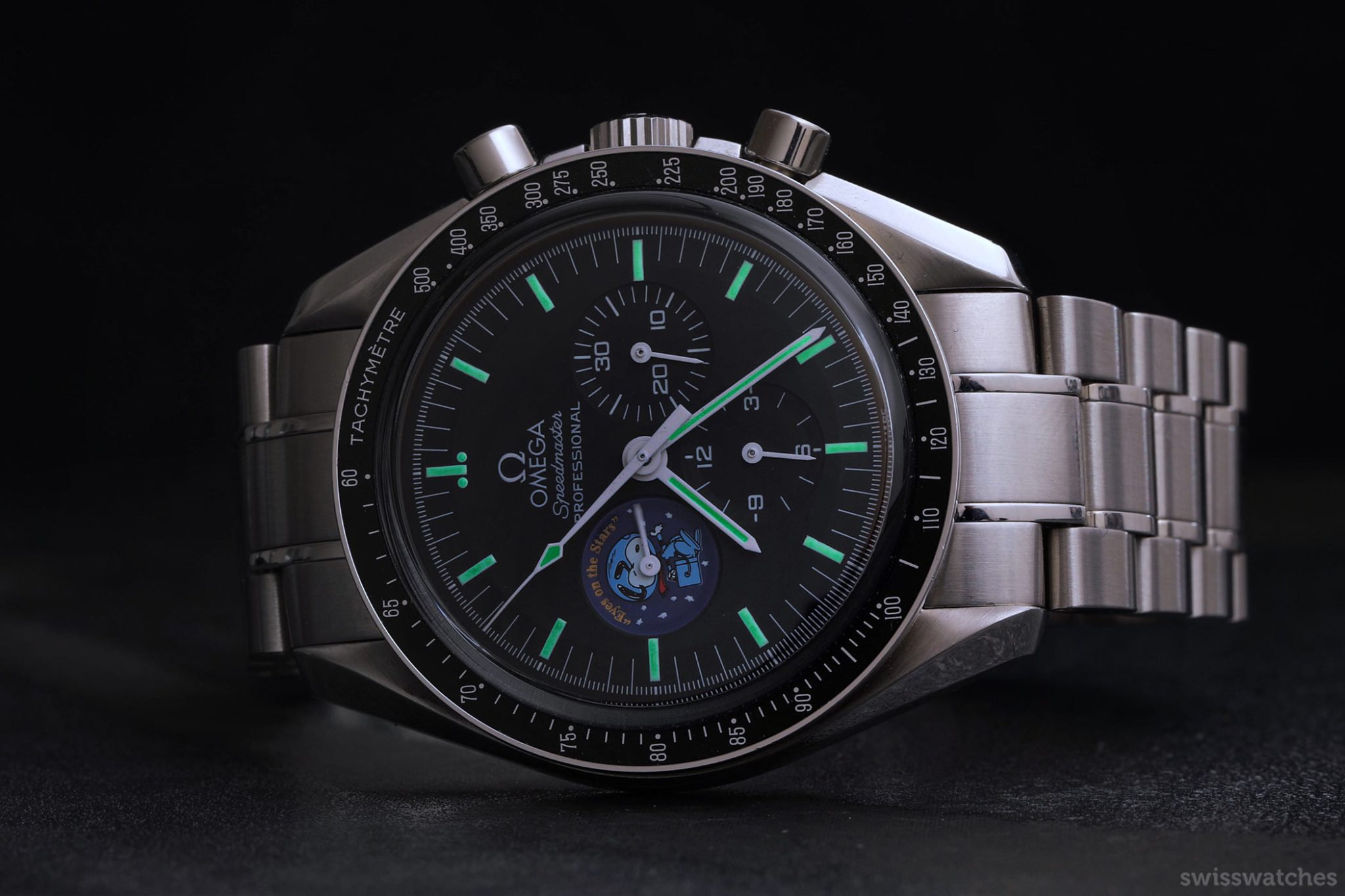
The watch runs using the rhodium-plated calibre 1861, first seen in 1997. As one would expect for a Moonwatch, this calibre is hand-wound. Equally predictably, it’s an updated version of the calibre 861, found in Moonwatch models between 1968 and 1997. The 1861 features the same shuttle cam and Delrin chronograph brake as the 861. These components serve to preserve the teeth of the chronograph seconds wheel, avoiding wear and tear. The calibre has a frequency of 3 Hz and a 48-hour power reserve.
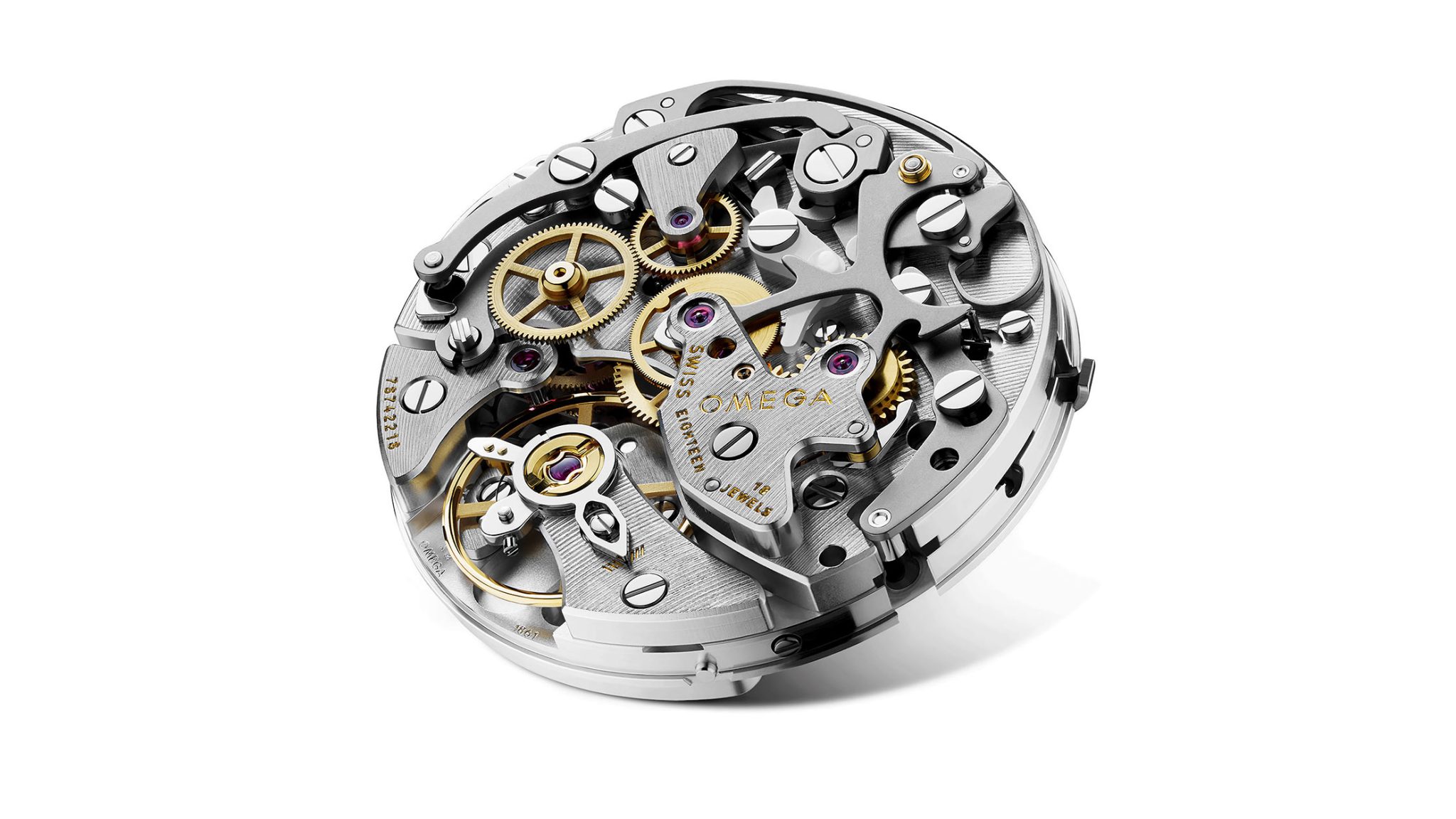
OMEGA Calibre 1861
In The Metal: Speedmaster “Snoopy”
Upon picking up the watch, I immediately sensed it had a pretty vintage feel. For one thing, it’s easy to forget that 2003 was admittedly a while ago now. Also, the old-school hesalite crystal protecting the dial appeals to the nostalgic side of me, not least because it made an appearance on every Speedmaster ever to go to the Moon.

That said, I was surprised to discover that the caseback sticker was on sapphire crystal. Therefore, given this arguably makes it a “Sandwich” model, it loses a fraction of its Moonwatch authentic appeal.
2015: A second, surprising Snoopy Speedmaster
The second OMEGA Snoopy watch appeared at Baselworld in 2015, after a 12 year gap. This time, it was a specific tribute to the 45th anniversary of Apollo 13. Thoughtfully limited to 1,970 pieces, it gave a nod to the year of Apollo 13 (1970).

2015 OMEGA Speedmaster “Silver Snoopy Award” (Ref. 311.32.42.30.04.003)
Facts and Figures
Again, moving to the hard facts: the second Snoopy Speedmaster (Ref. 311.32.42.30.04.003) features a steel case with twisted lugs, measuring 42 mm x 14.80 mm – slightly higher than before. The dial, this time protected with sapphire crystal, is almost inverted from the usual dark Speedmaster design. Using a black and white colour scheme, it mirrors the black and white colouring of the original Peanuts cartoon.
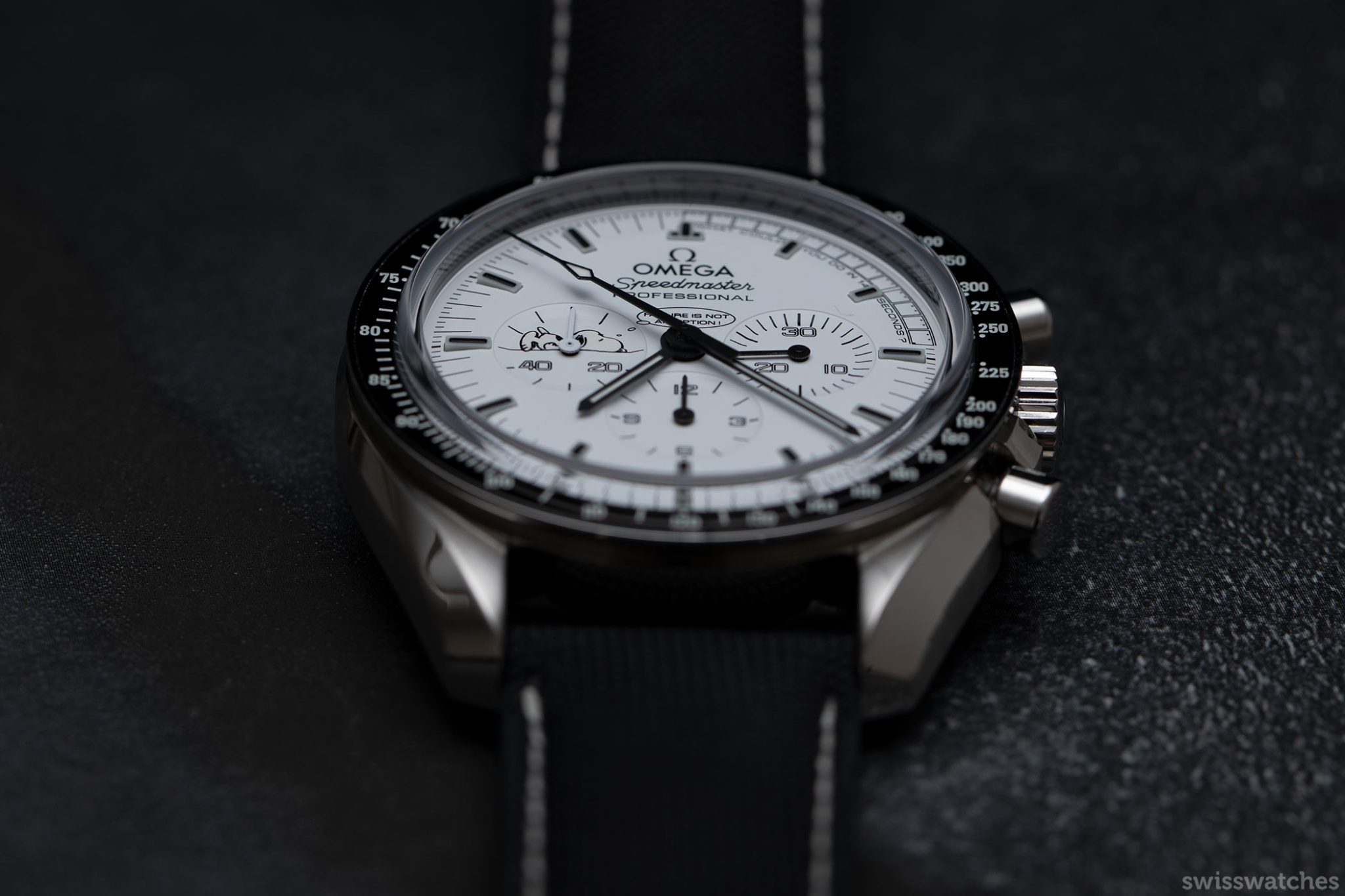
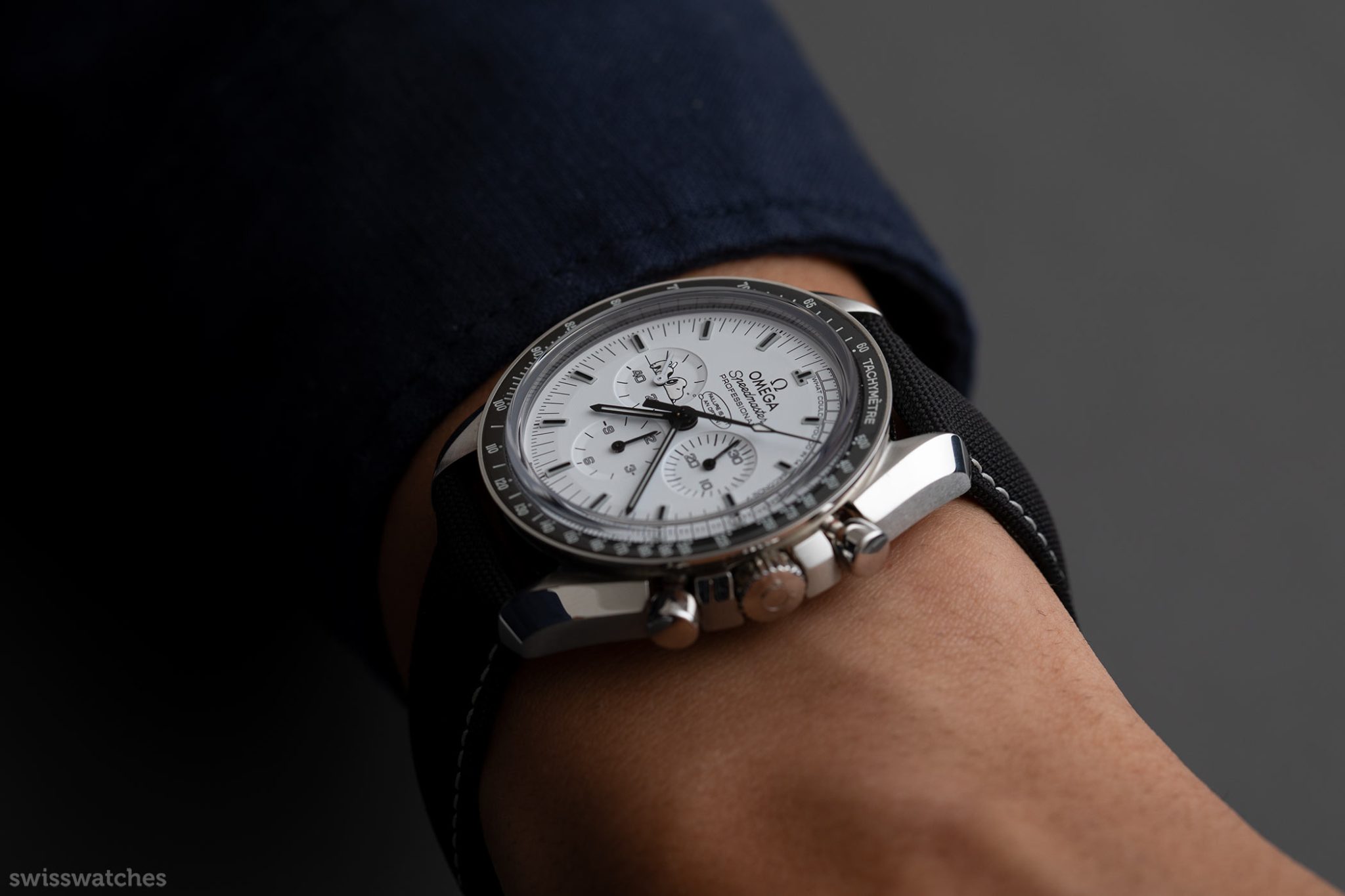
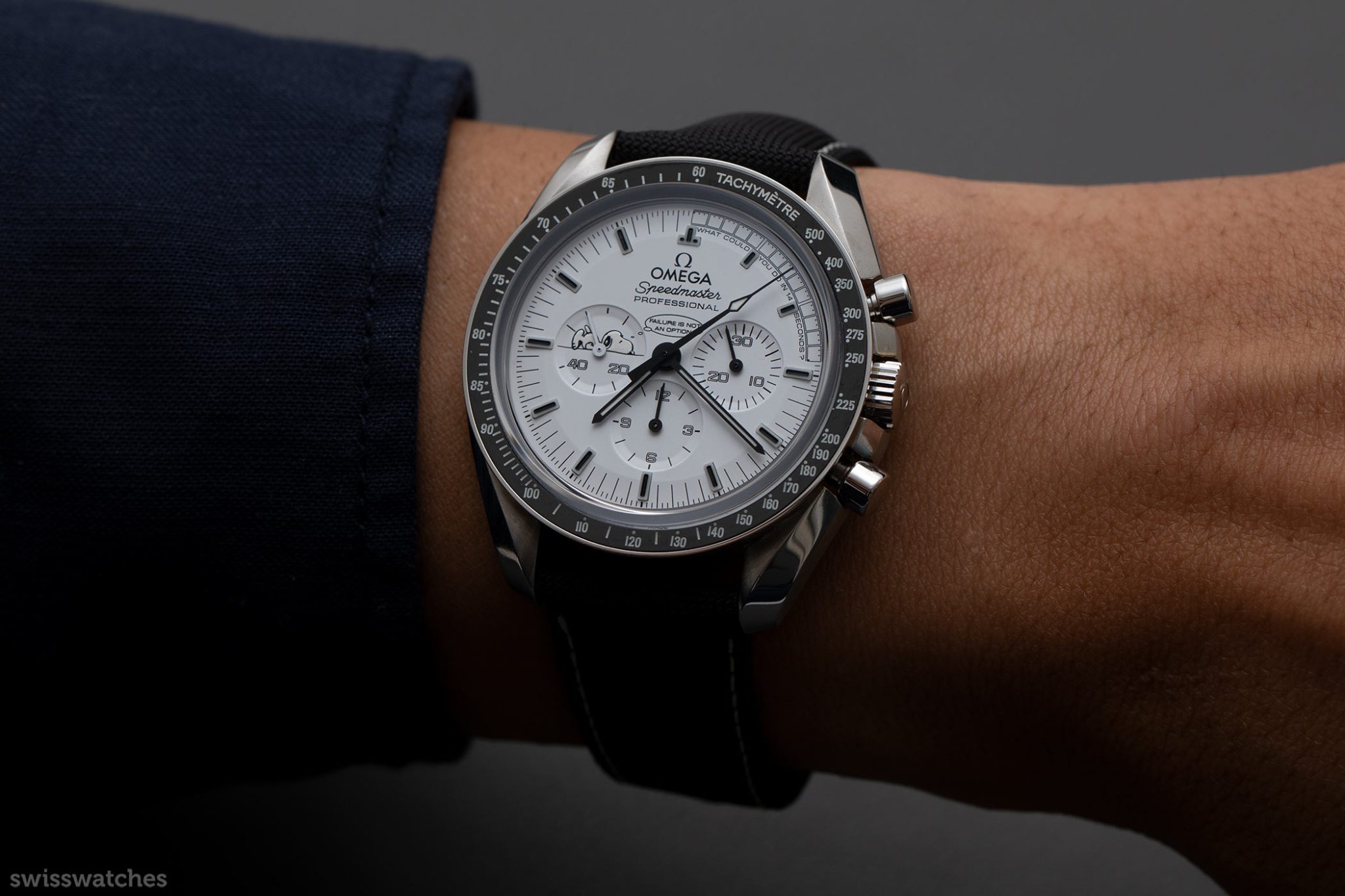
Therefore, it features a white dial with blackened baton hands. Prior to this edition, a white dial Moonwatch such as this was a rarity, usually reserved for special edition white-gold Speedmasters or moonphases. This time, the small seconds subdial featured a fallen-over Snoopy illustration, resolutely thinking “FAILURE IS NOT AN OPTION“, and ready to get back up on his feet.
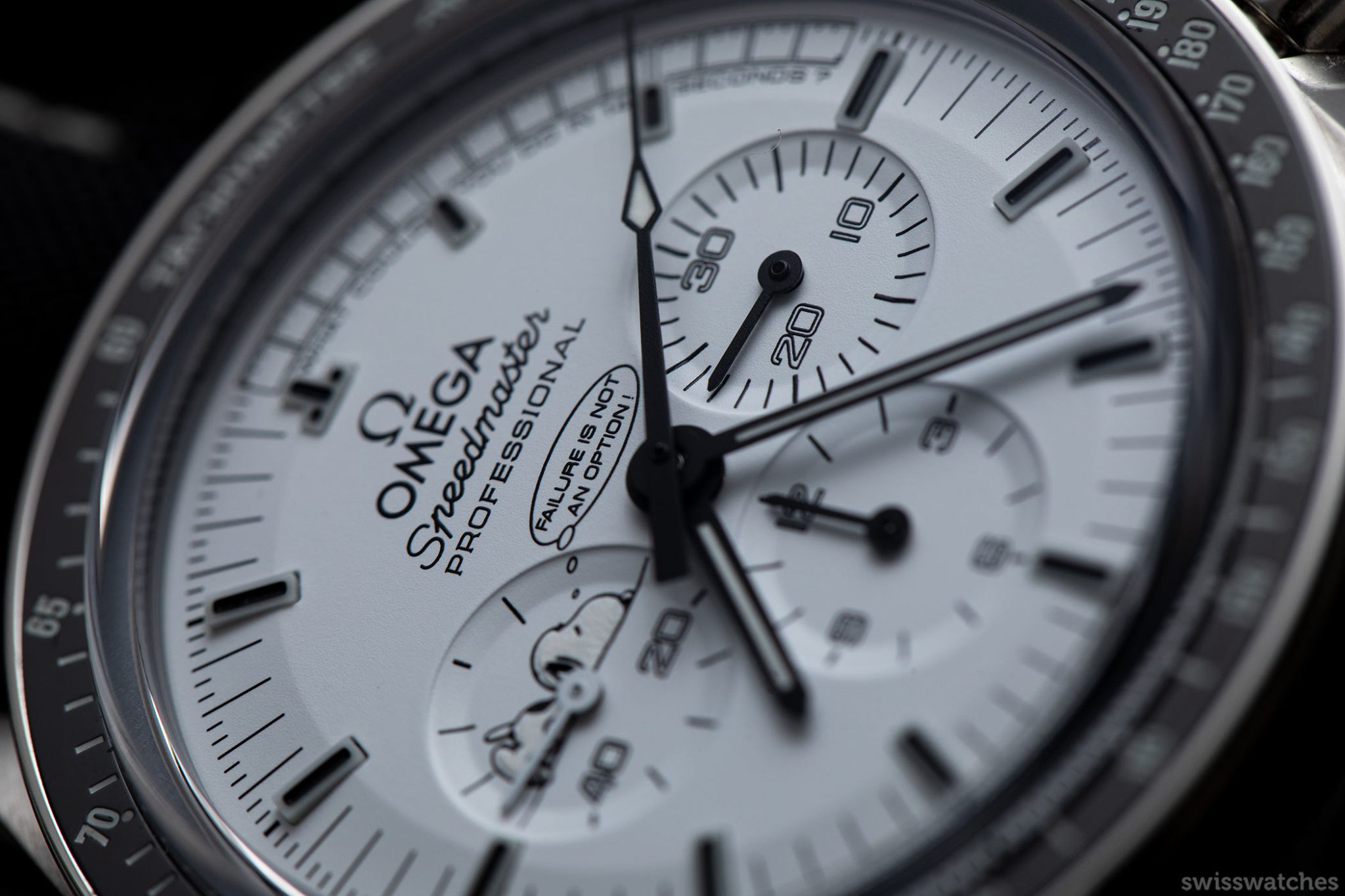
This was the tagline used for the Apollo 13 movie, and isn’t the only motivational quote on the dial. Between 12 and 3 o’clock are the words “WHAT COULD YOU DO IN 14 SECONDS?” – again, enough to get you back to work on a slow day in the office. This of course refers to the Apollo 13 mission. Furthermore, a lesser known fact – its design of 14 frames recalls the Snoopy comic strip.
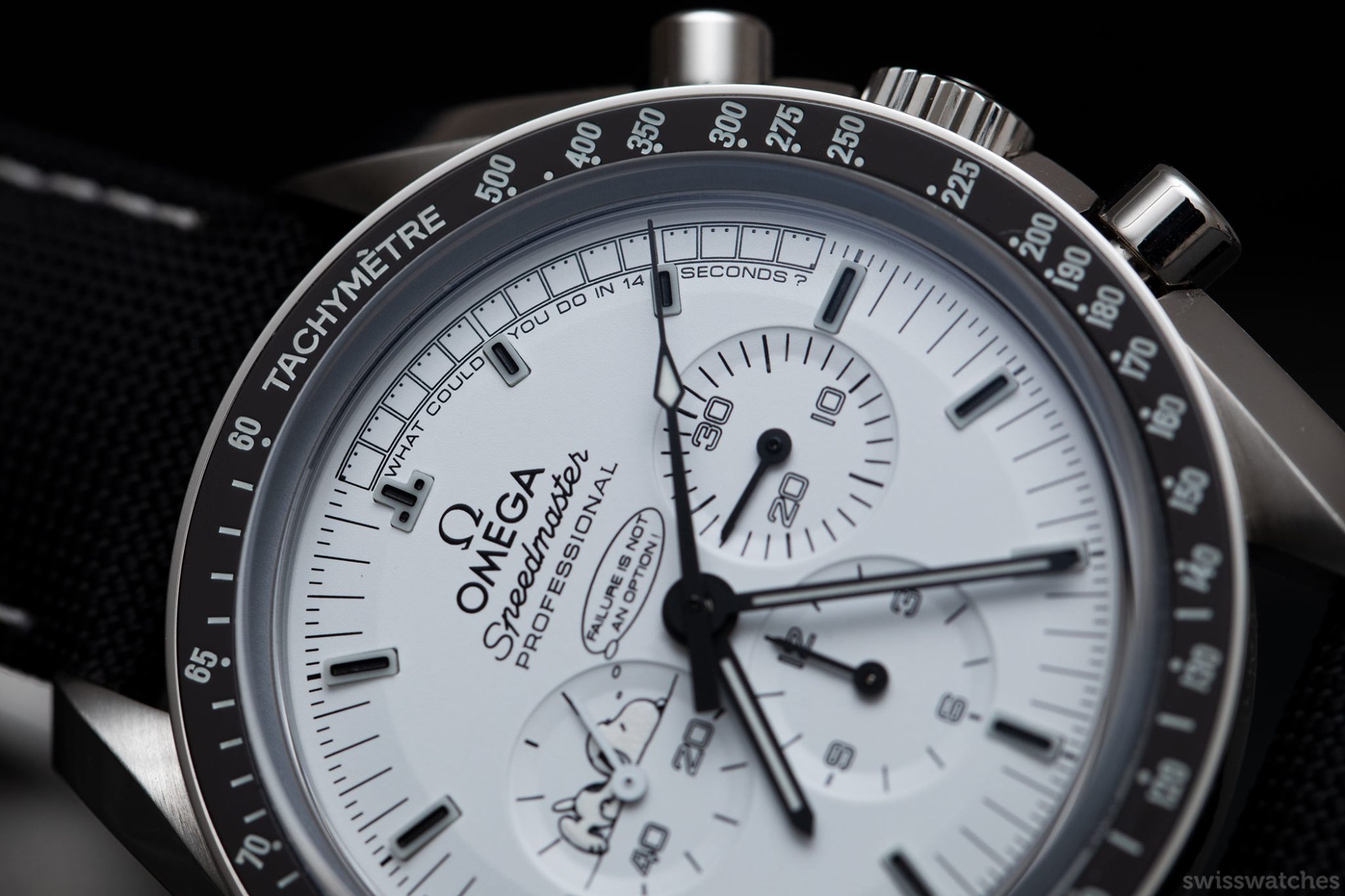
The other incredible thing to mention is the use of Super-LumiNova; the hands, indices, and even the fallen Snoopy glow a brilliant green in the dark. Furthermore, the bezel, again with the dot below 70, marks the first time that OMEGA ever used Super-LumiNova on a ceramic tachymeter scale – excluding the Grey Side of the Moon Speedmaster, which was developed at the same time as this Snoopy watch, but released several months earlier. That said, the Grey Side of the Moon Speedmaster bezel uses ZrC (zirconium carbide), while the Snoopy watch uses ZrO2 (zirconium).

That’s not all that’s special about this watch – on the caseback, we have a 925 silver Snoopy medallion surrounded by dark blue enamel. No caseback is the same due to the silver powder sprinkled on back of each. Furthermore, the hand-engraved Snoopy medallion is strikingly similar to the genuine Silver Snoopy Award lapel pin.
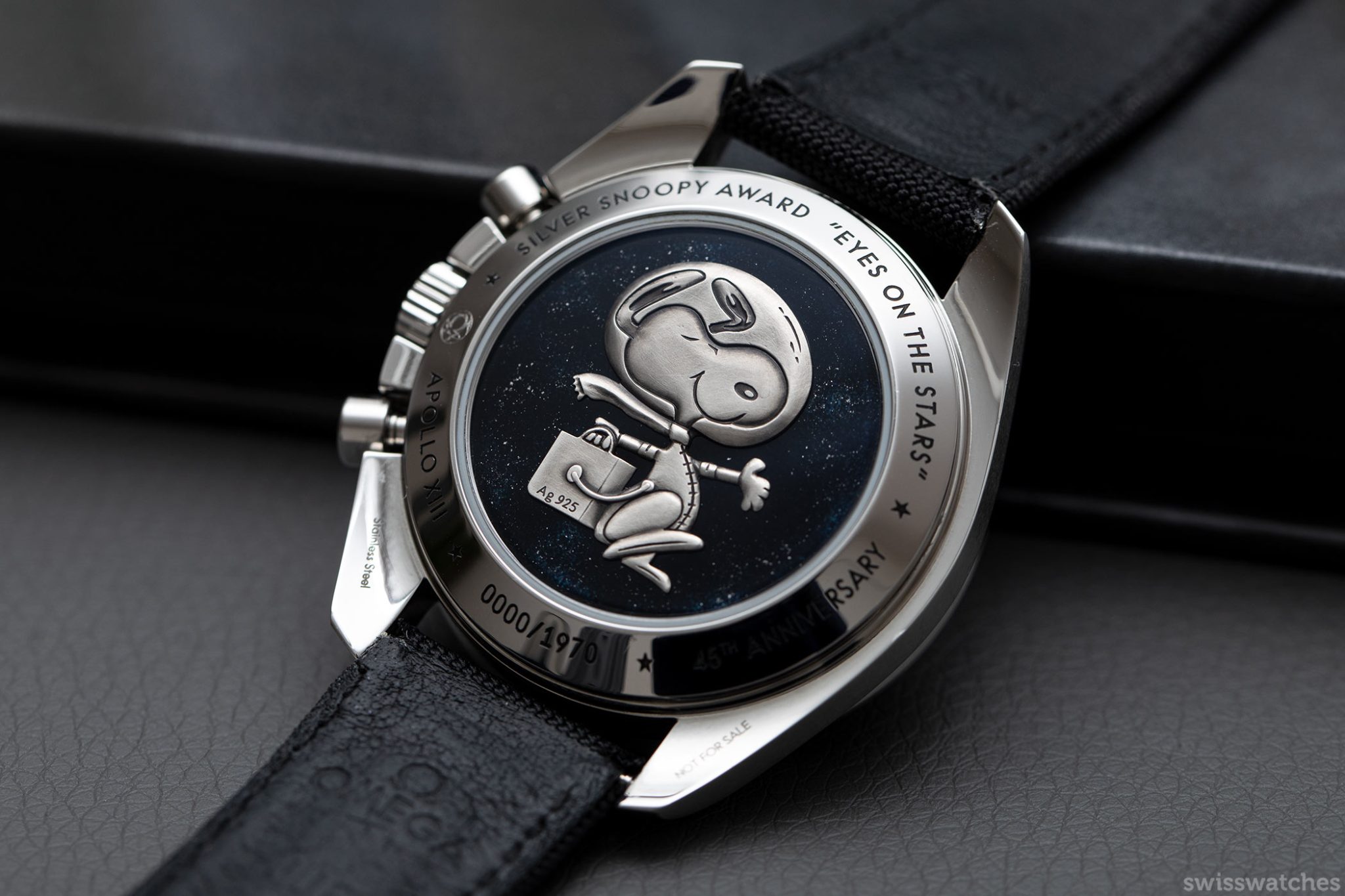
Last but not least, the watch is equipped with the same calibre as its predecessor and comes with a modern-looking yet low-key black coated nylon fabric strap. Notably, the combination of a folding clasp with pin holes makes for satisfyingly easy size adjustment.
In The Metal: Speedmaster “Silver Snoopy Award”
It’s no wonder that this watch is so in demand. For one thing, with its fabric strap and slightly increased case height, it sits incredibly comfortably on the wrist. Secondly, the watch has gone all out with its Snoopy and Apollo 13 references.
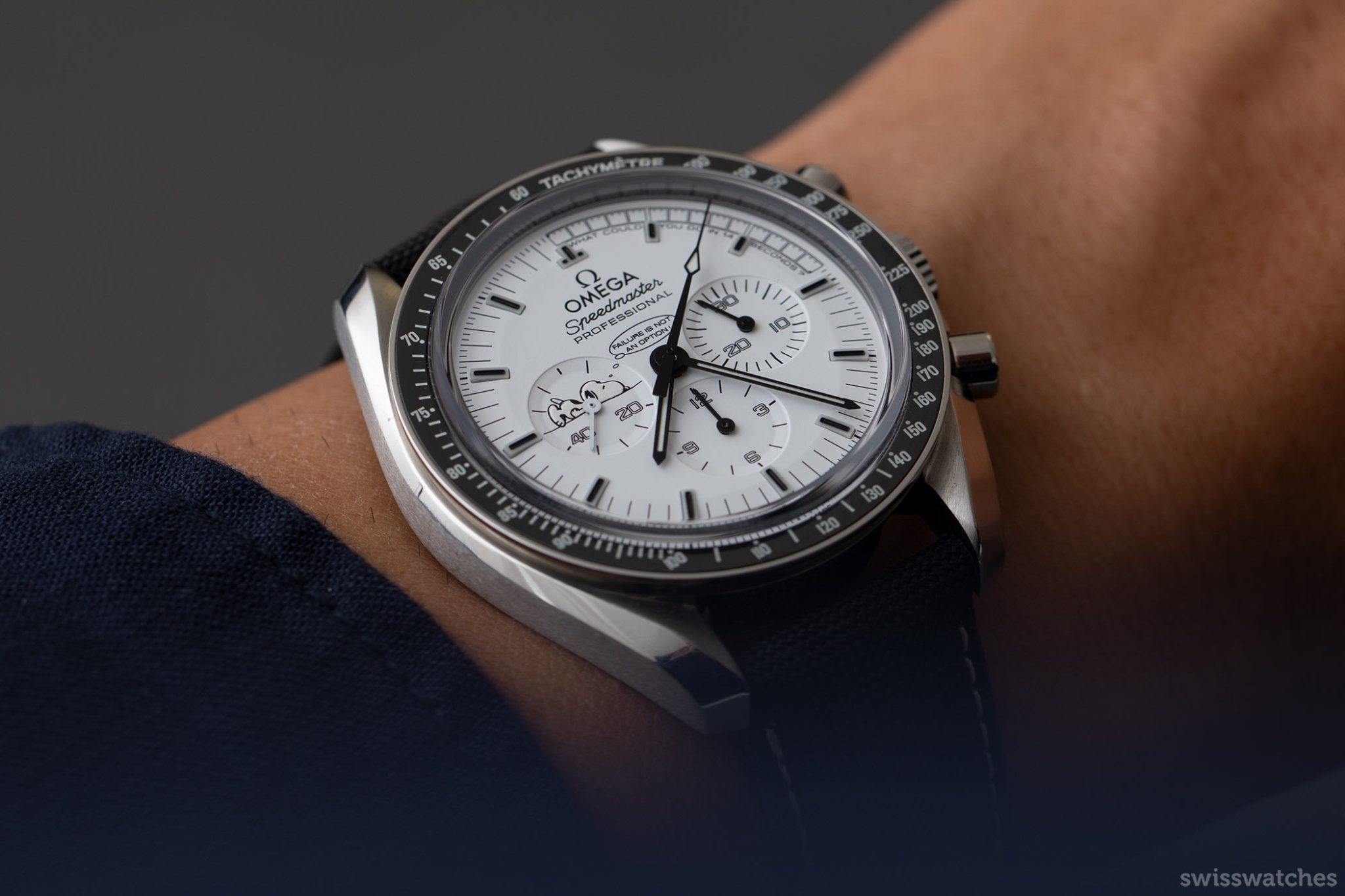
These meaningful quotes genuinely make you think twice about how you want to spend your day and live your life. Aesthetically, the design inverts everything you’d expect from a Speedy. Furthermore, the fact that this watch marked several special moments for OMEGA – from the white dial to the ceramic bezel with Super-LumiNova – make it even more special.
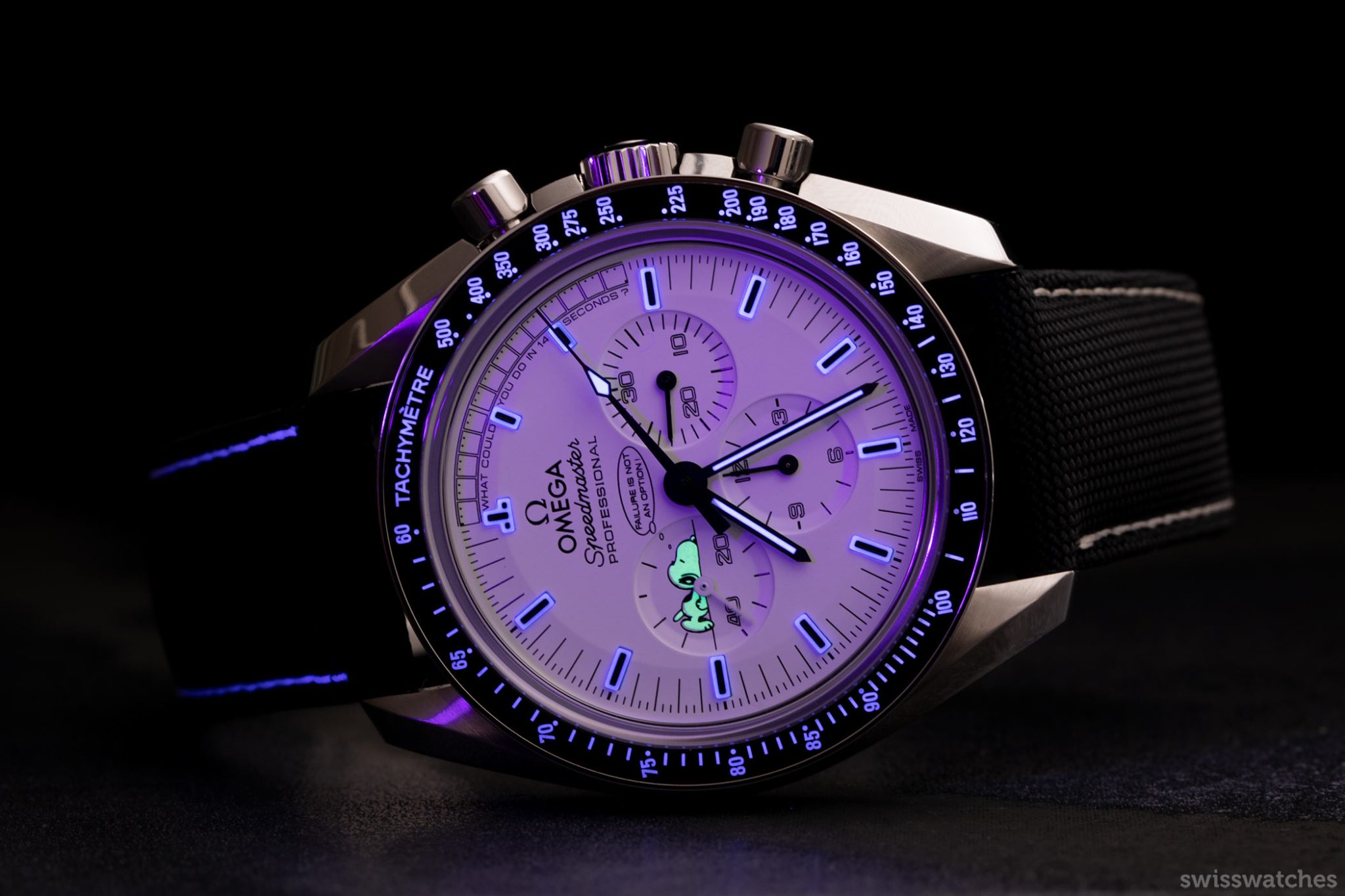
2020: The most recent Snoopy Speedmaster
This brings us to the latest OMEGA Snoopy Speedmaster watch. Unlike the previous two models, OMEGA is not limiting production. As the Golden Anniversary tribute to the “Silver Snoopy Award”, it was always going to be good.
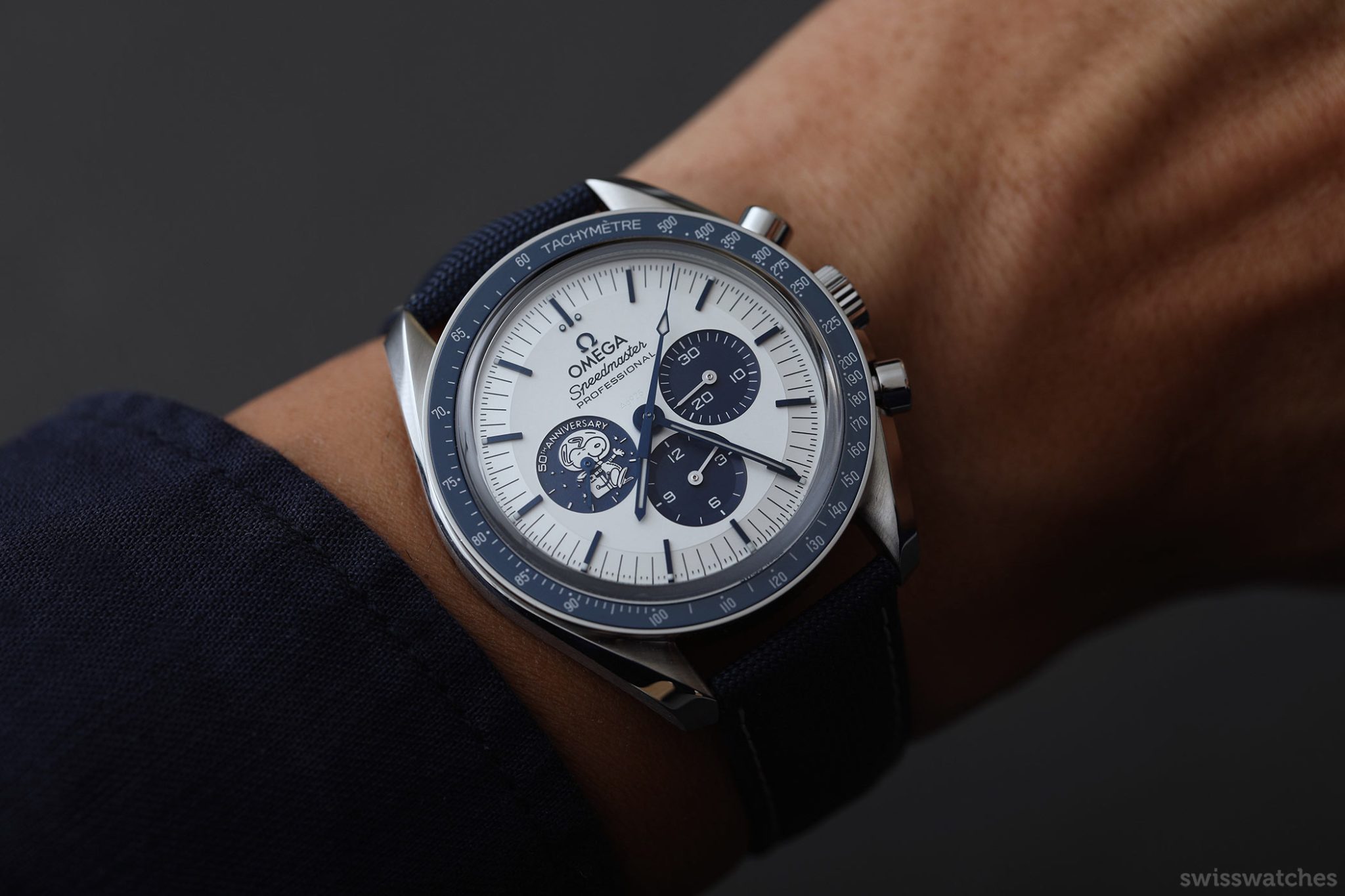
2020 OMEGA Speedmaster “Silver Snoopy Award” 50th Anniversary
Facts and Figures
The 2020 Speedmaster Co-Axial Master Chronometer Chronograph 42 mm “Silver Snoopy Award” 50th Anniversary is housed in a stainless-steel case measuring 42 mm x 14.47 mm. As one would expect on a modern Speedmaster, the timepiece’s dial is protected by a domed scratch-resistant sapphire crystal, with anti-reflective treatment on both sides. Meanwhile, the ceramic [ZrO2] bezel ring with a white enamel tachymeter scale is blue, but this time, it does not use Super-LumiNova. Once again, there is a reason for the colour scheme, with the blue and white representing the colour of the patches first worn by Apollo 13 astronauts.
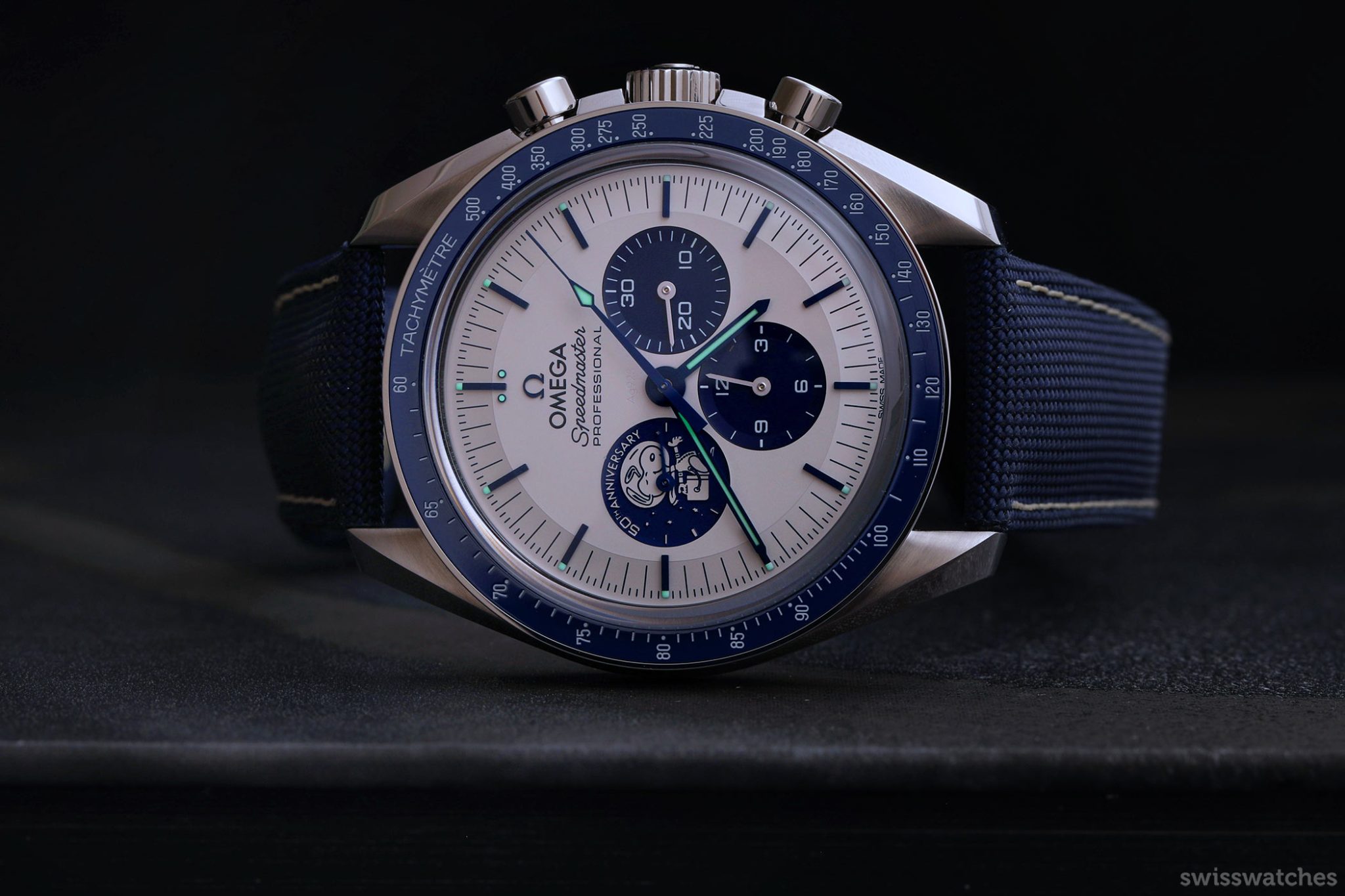
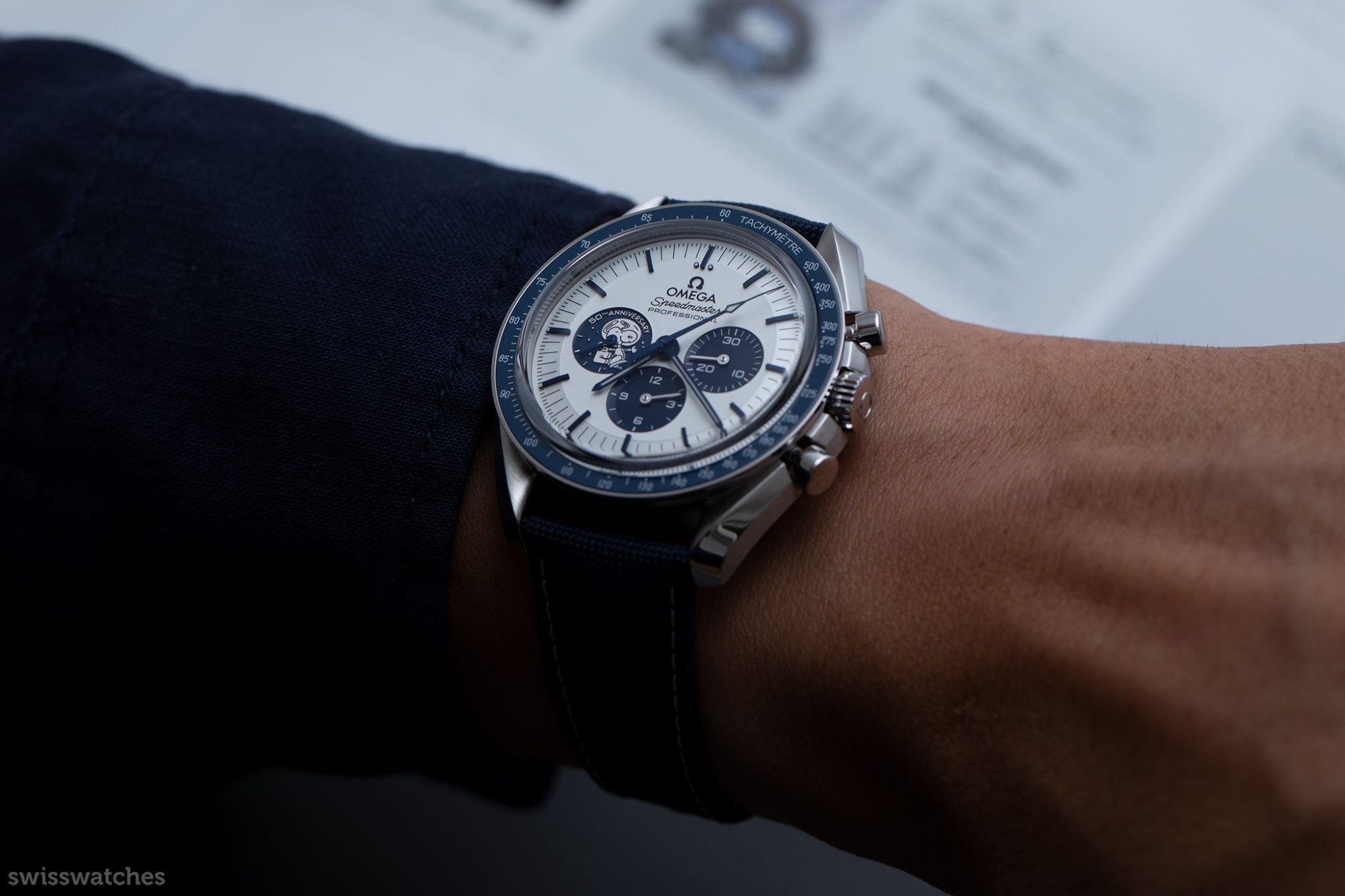
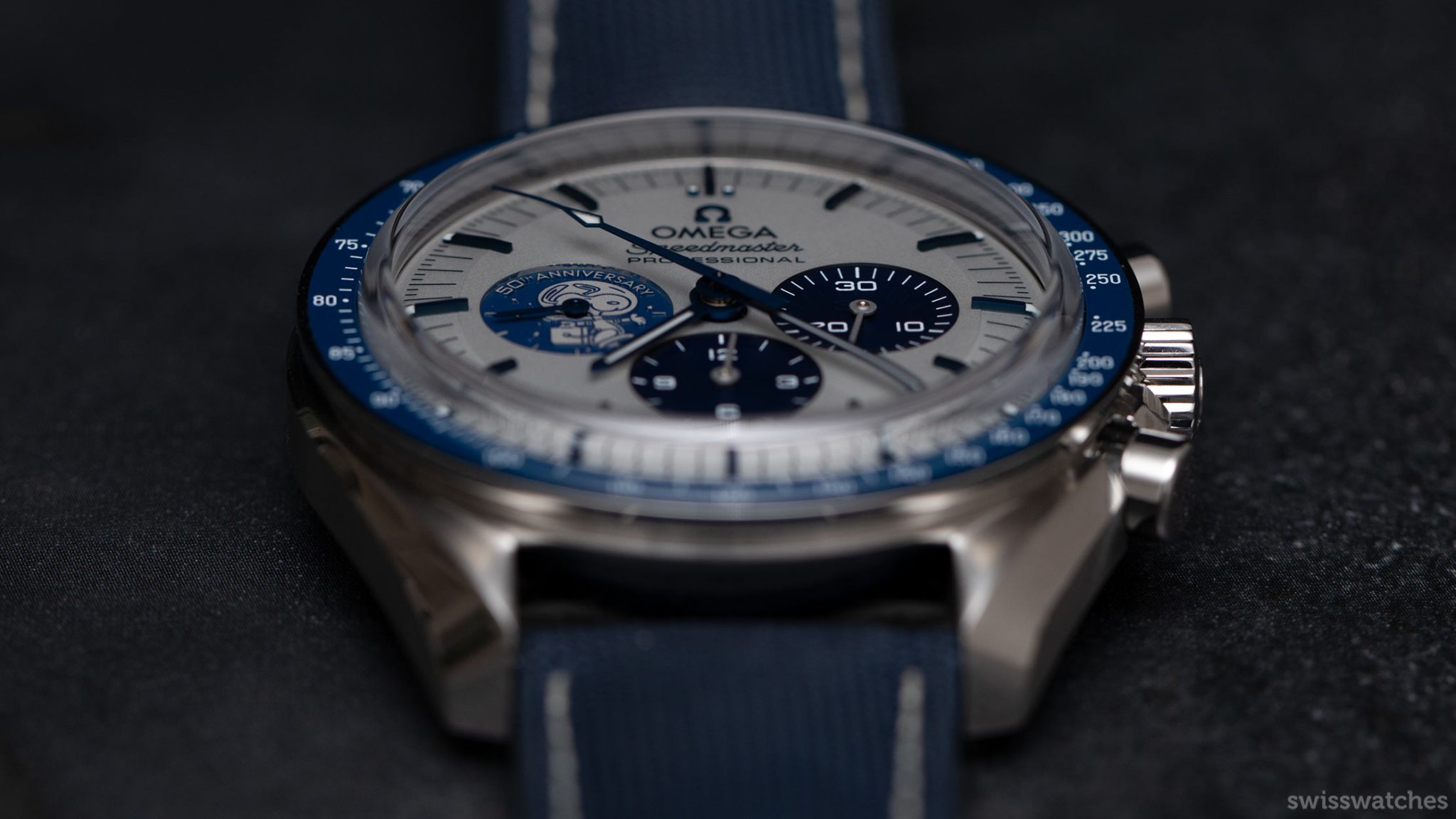
Meanwhile, the solid silver (Ag925) dial has blue PVD angle-shaped hour markers and hands, as well as an embossed Snoopy medallion on the blue subdial at 9 o’clock. As with the 2003 edition, Snoopy is donning his spacesuit with pride.
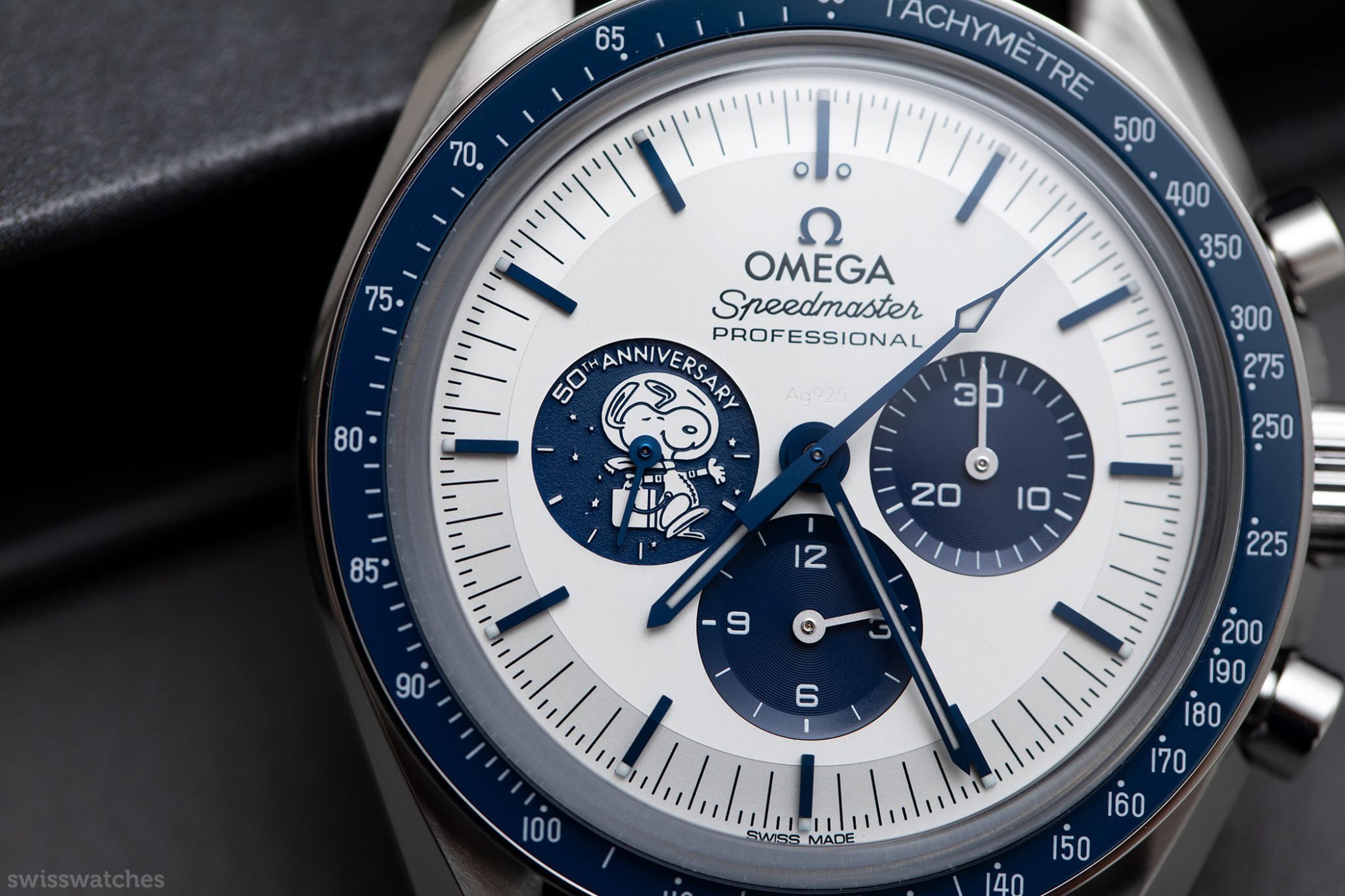
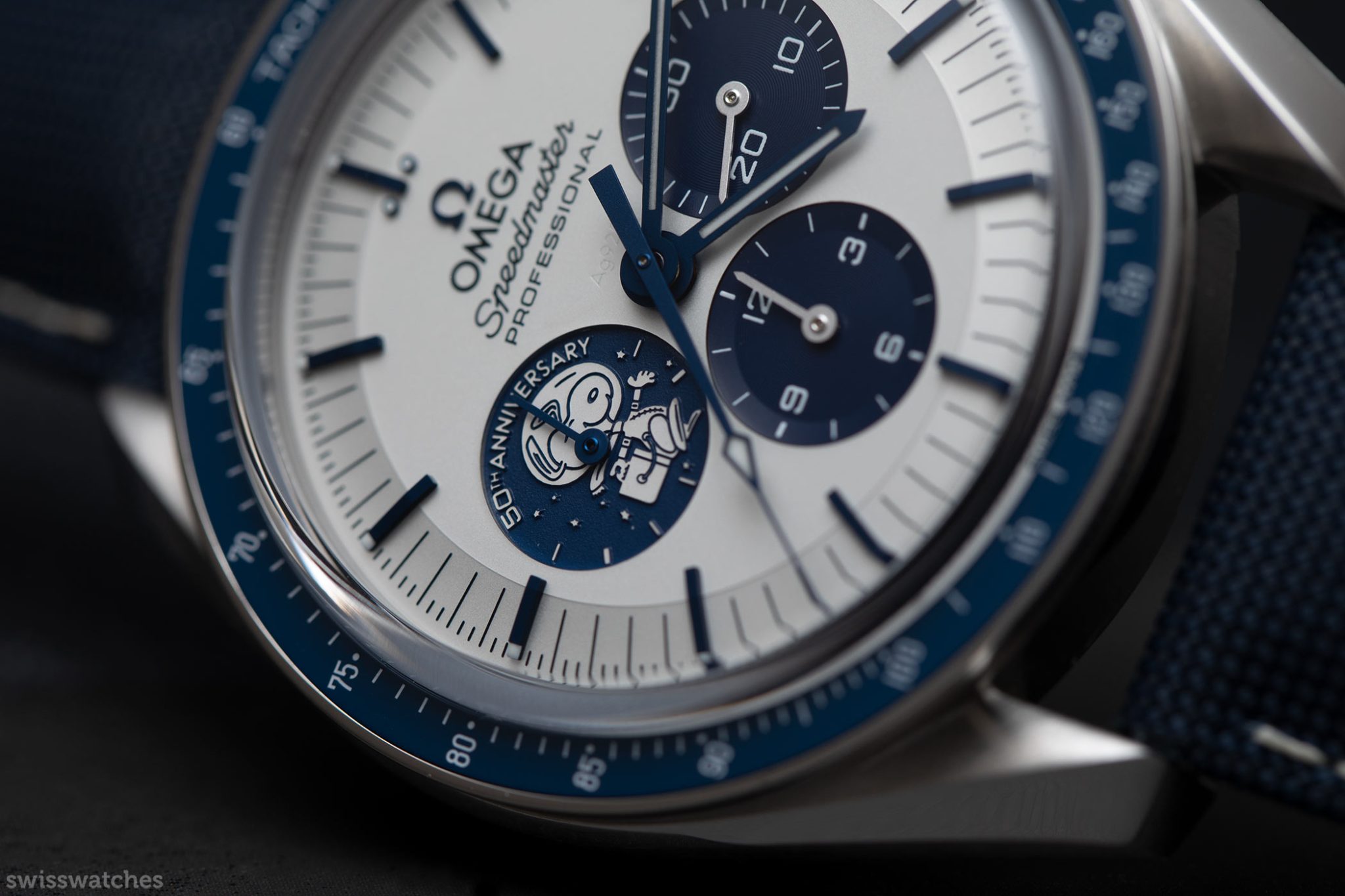
However, it’s the caseback which is the real star of the show, using OMEGA’s NAIAD LOCK system. This patented system ensures all engravings stay in place – something definitely necessary on this complex model.
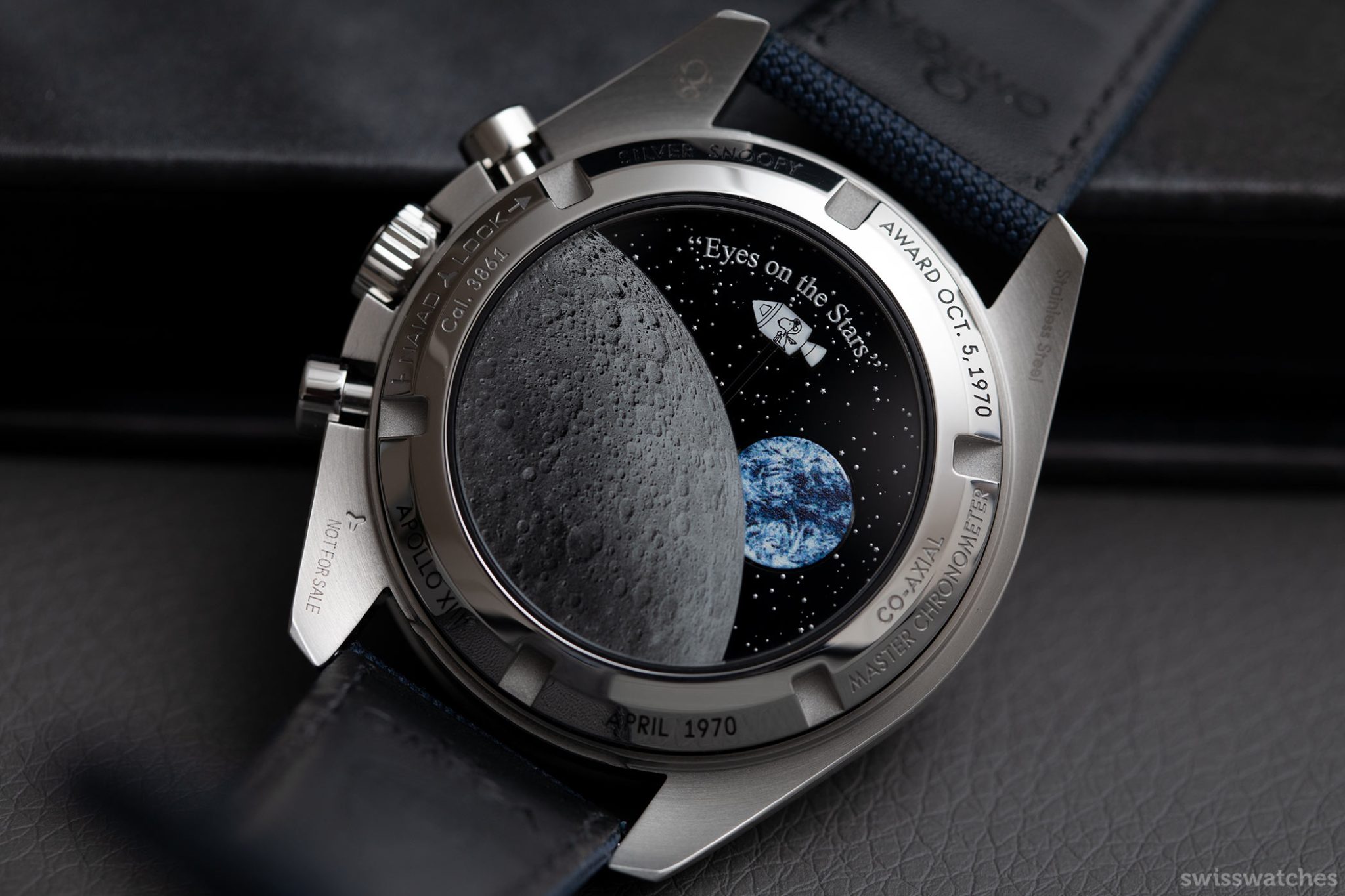
First and foremost, there’s the large moon at the front, decorated onto the sapphire crystal using micro-structured metallisation. Notably, it is decorated from inside, meaning it won’t gradually wear away. Behind the Moon, animated Snoopy in his Command and Service Module pops out whenever the chronograph function is used. Meanwhile, an Earth disc to the right rotates once per minute (in sync with the watch’s small seconds hand). This disc is exceptionally beautiful and particularly realistic.
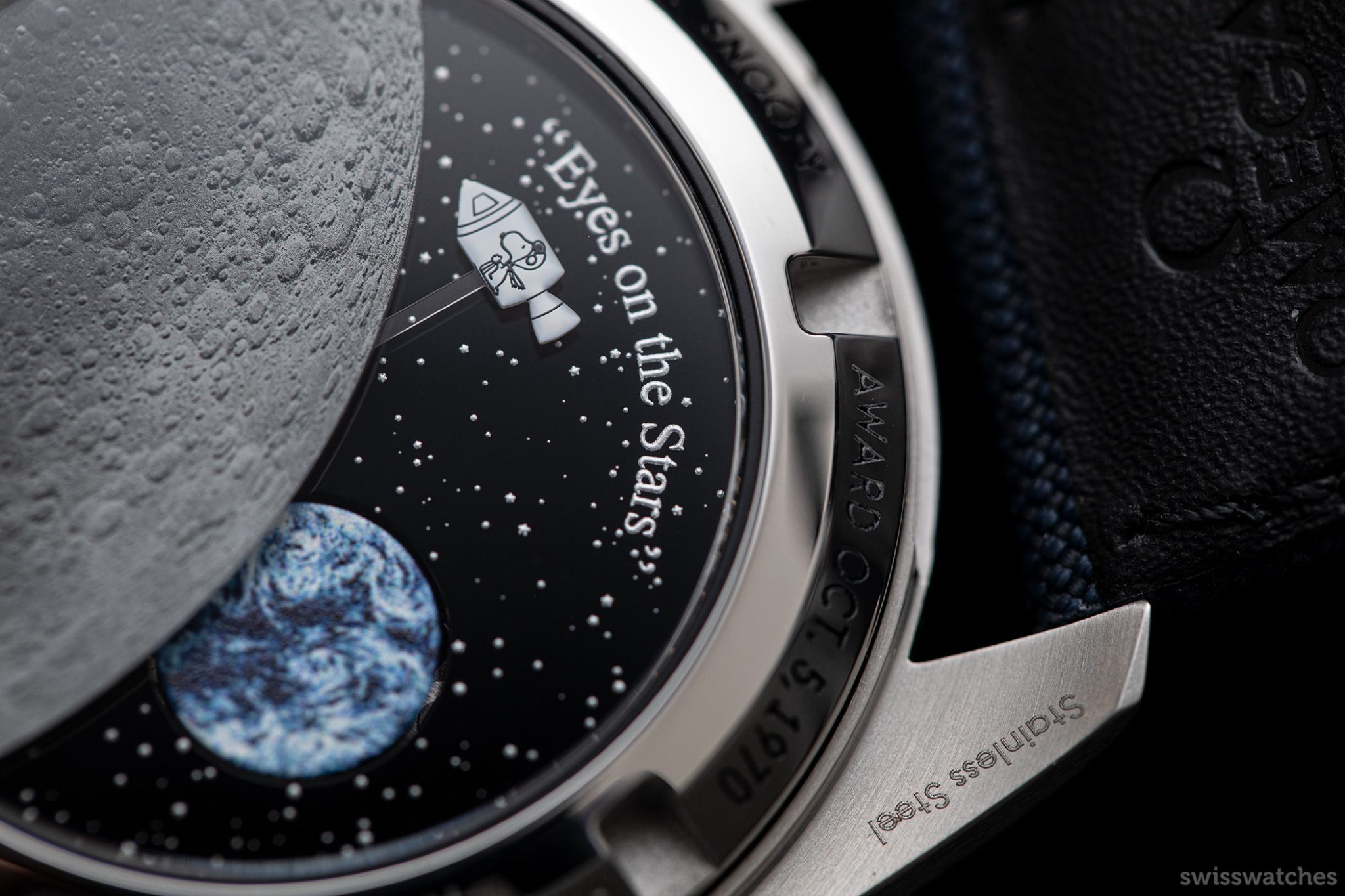
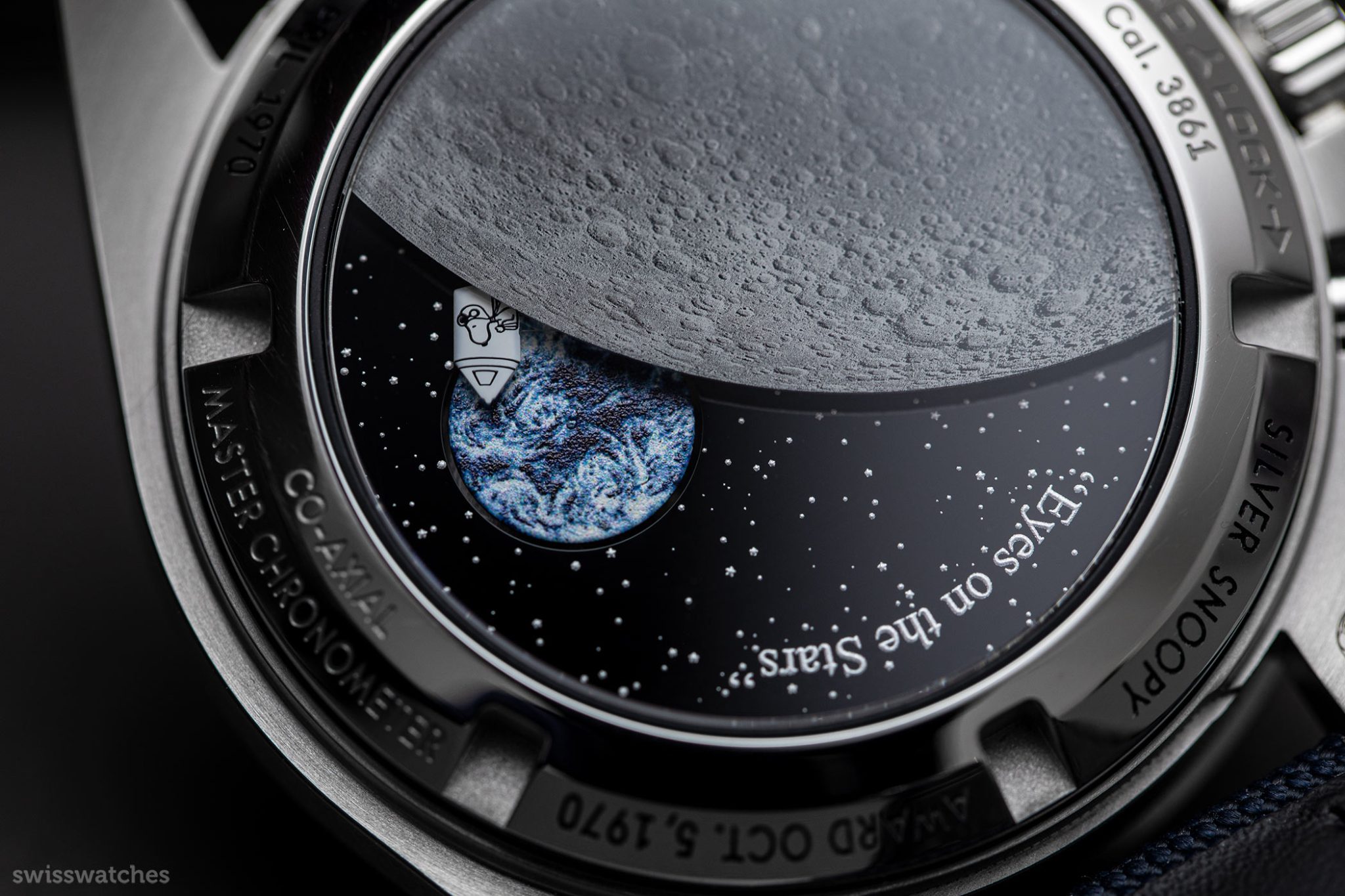
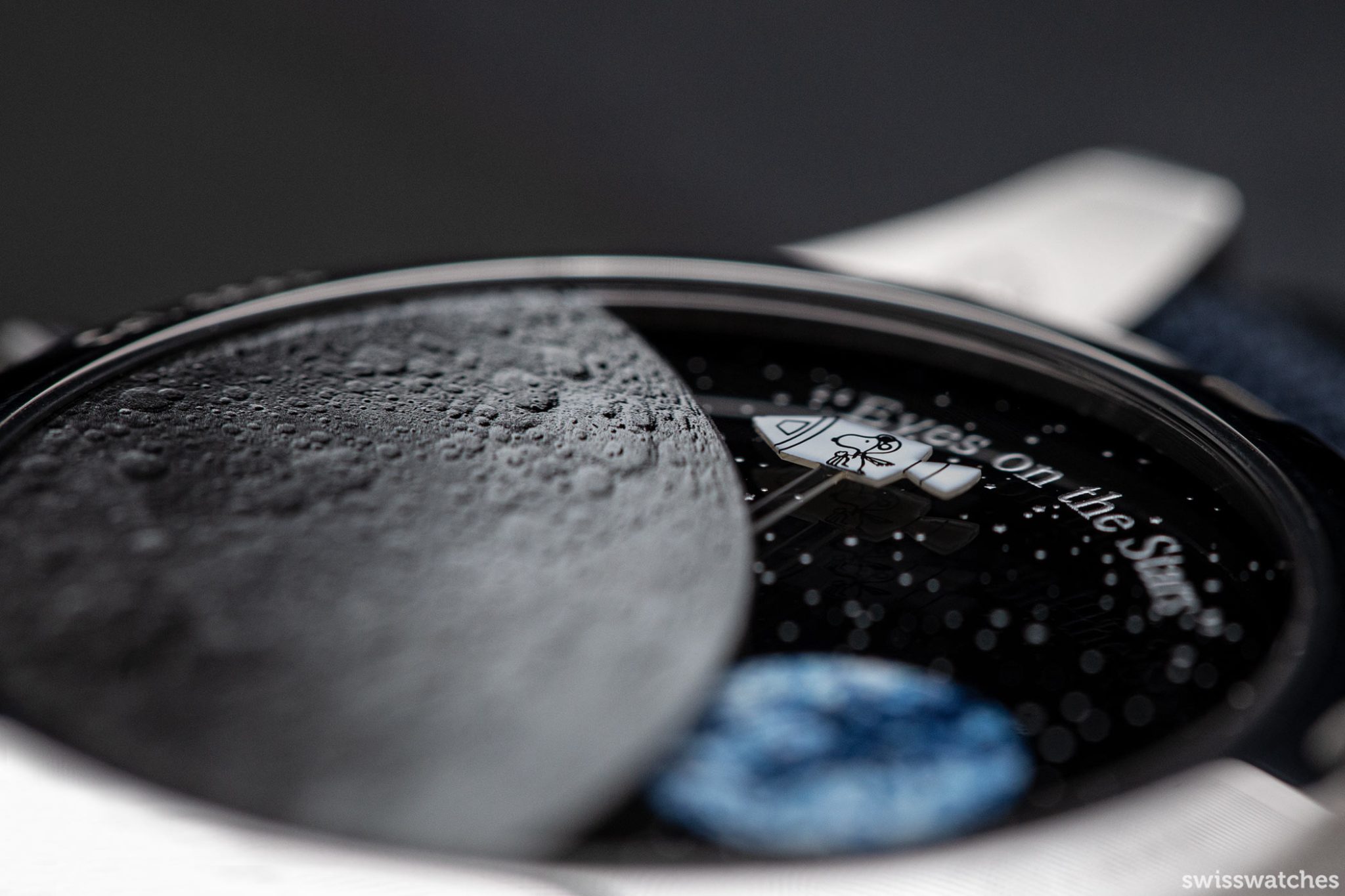
The calibre making all of this magic possible is the OMEGA Co-Axial Master Chronometer Calibre 3861. The manual-winding chronograph movement with a Co-Axial escapement takes the Snoopy watch to a whole new level. As the name suggests, it’s a Certified Master Chronometer approved by METAS. Therefore, the 3861 boasts resistance to magnetic fields reaching 15,000 gauss, partly thanks to the free-sprung balance with a silicon balance spring.
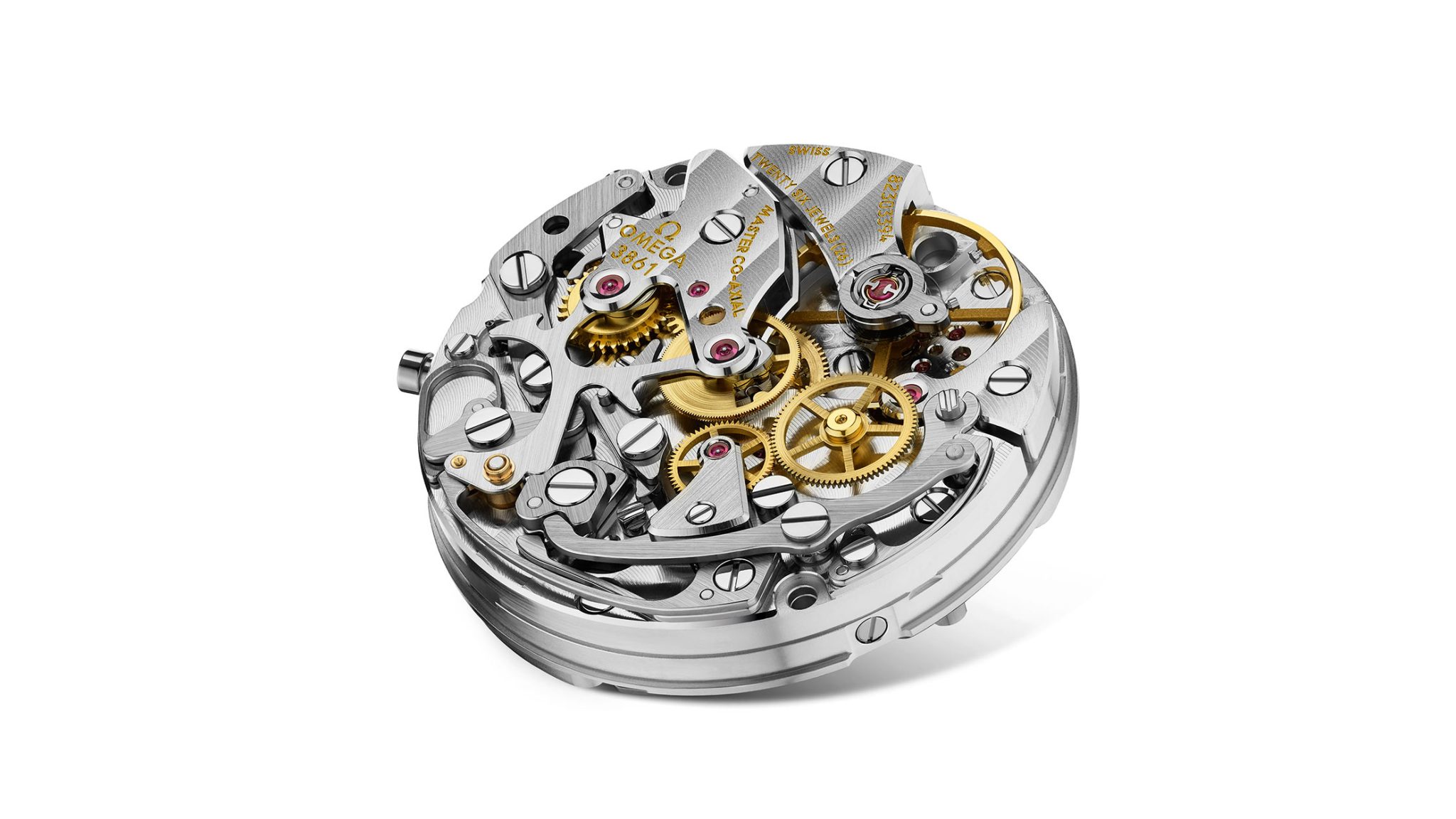
OMEGA Co-Axial Master Chronometer Calibre 3861
The movement features rhodium-plated finishing and bridges with straight Geneva waves – although naturally none of this is visible due to the caseback design. The calibre 3861 has a 50-hour power reserve and a frequency of 3 Hz. The watch comes with a blue strap with a pin buckle, subtly featuring the route taken by the Apollo 13 crew on the inside.
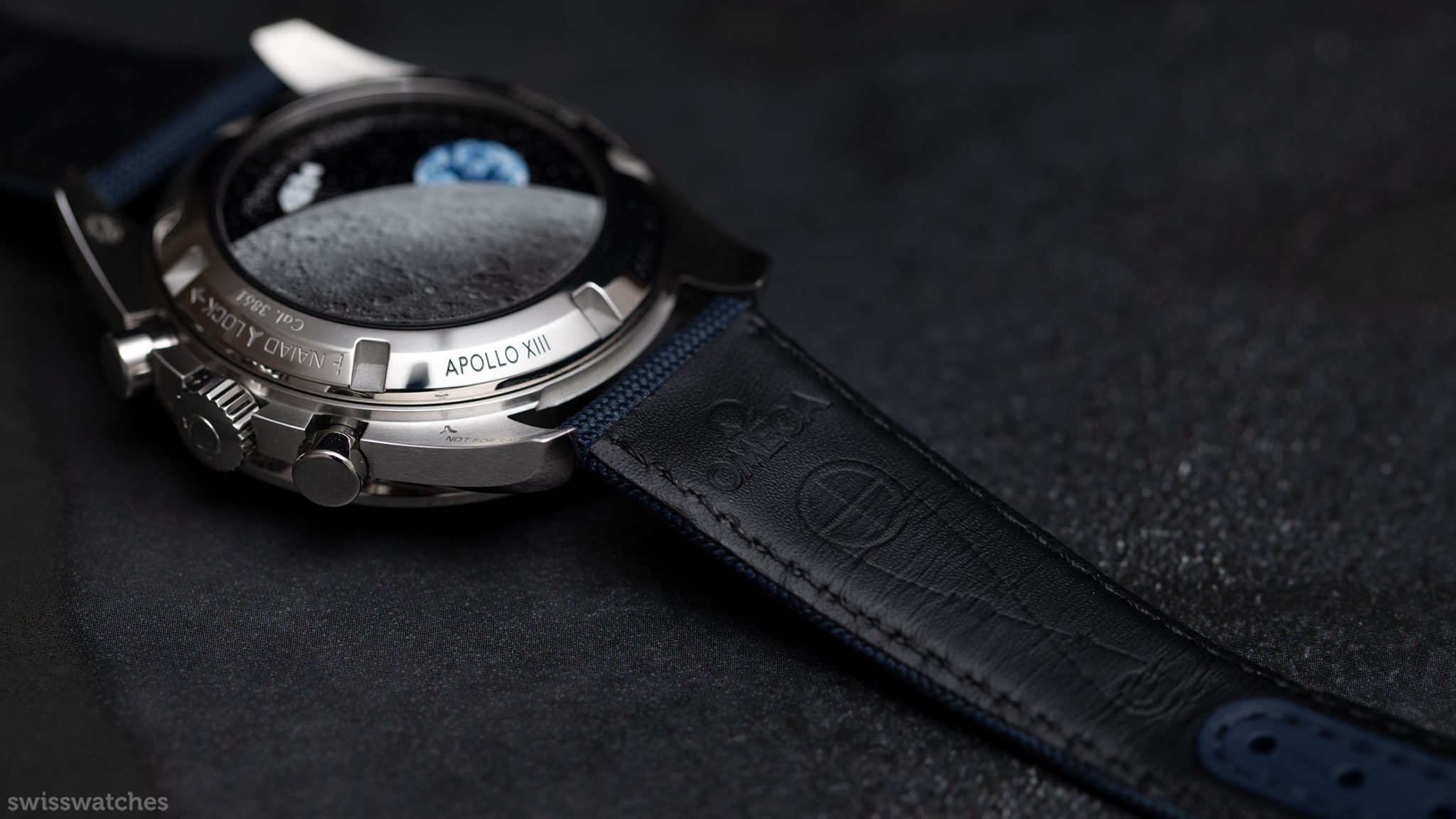
In The Metal: OMEGA Speedmaster “Silver Snoopy Award” 50th Anniversary
This OMEGA Snoopy watch is definitely the most light-hearted in terms of aesthetics, even if it doesn’t feature the fun and poignant quotes seen on the 2015 version. Its blue and white aesthetic rather evokes a trip to the sea than to space, giving it a real sense of character. The unexpected colour scheme here is likely to either delight or dismay fans of the Speedmaster.

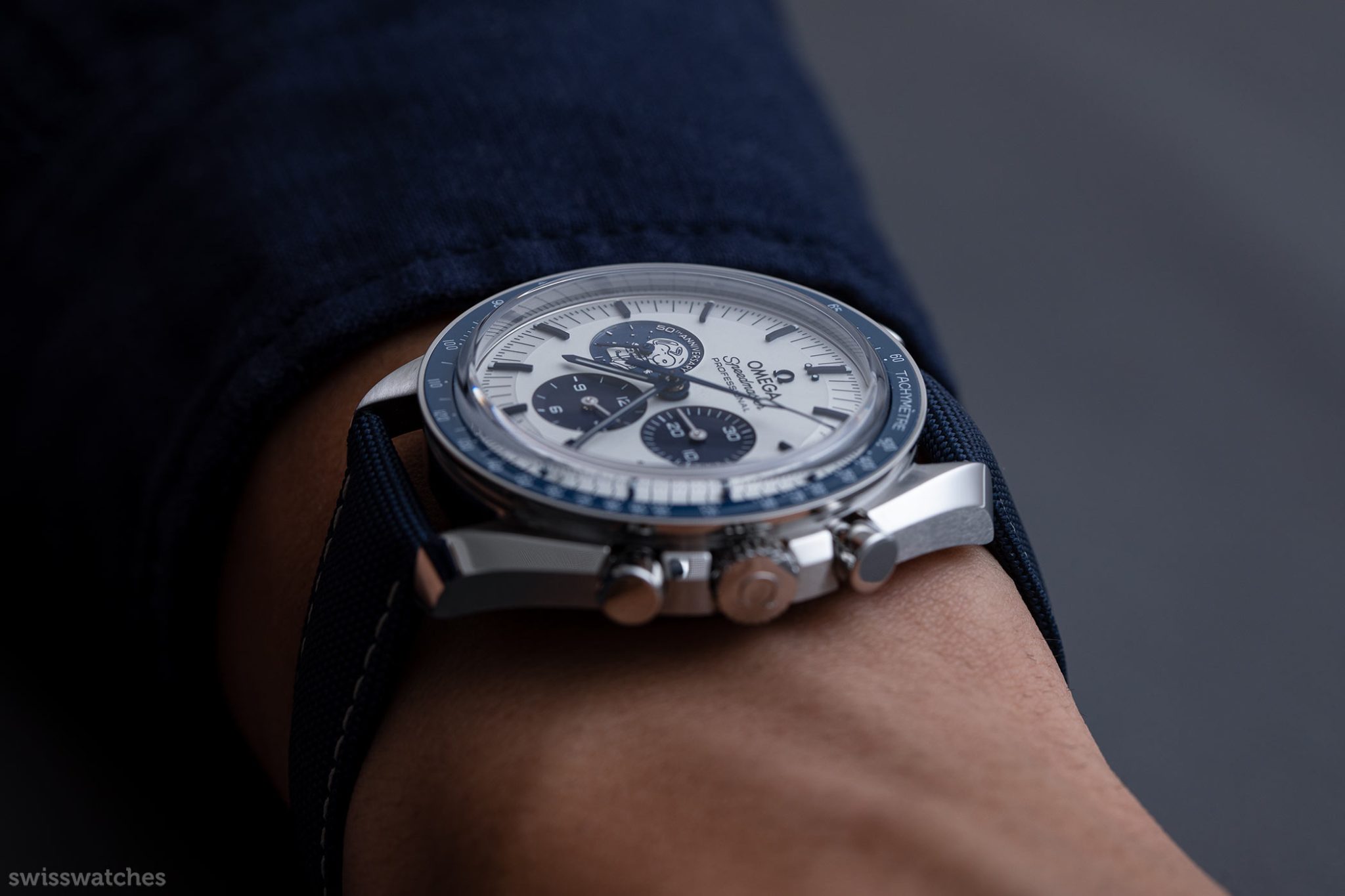
Furthermore, the so-called “magic” Snoopy hand on the caseback is a truly delightful feature. It would undoubtedly even captivate those who haven’t the slightest interest in watches, let alone know what a chronograph is. It’s an impressively bold, entertaining and creative design move by OMEGA.
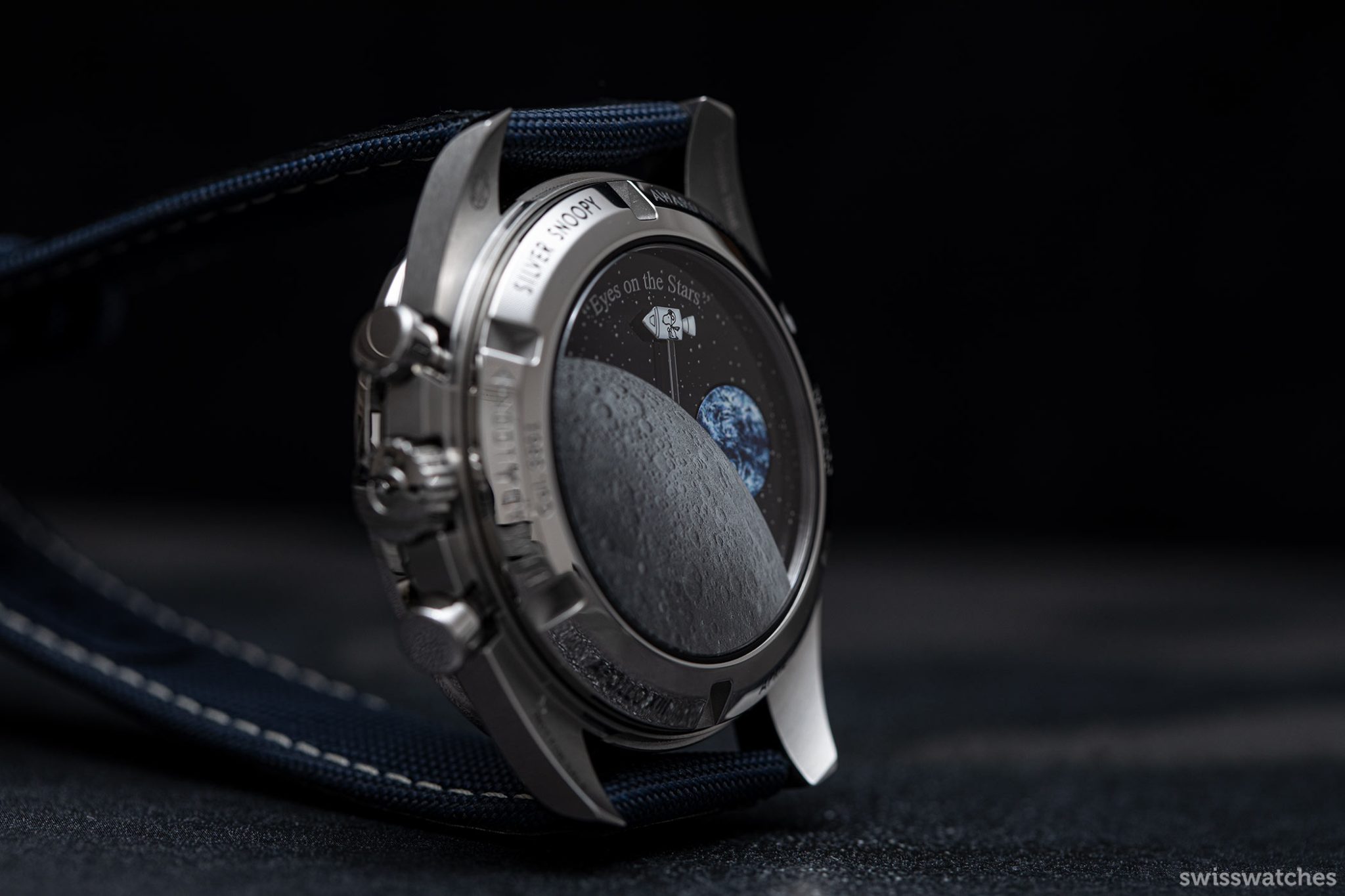
Finally, the watch is a symbol of OMEGA’s exceptional craftsmanship. The horology house proves its watchmaking skills in a variety of ways, from the reassuring NAIAD lock system, to the life-like moon’s position on the inside of the sapphire crystal, to the Co-Axial Master Chronometer movement itself.
The Verdict: How do the Snoopy watches size up?
The 2003 watch is an important and special piece, which marked the start of something new. On the other hand, compared to the two watches that followed it, it’s nothing too out of the ordinary. This is something that will please traditionalists, but leave many wondering if OMEGA was still fairly cautious at this point.
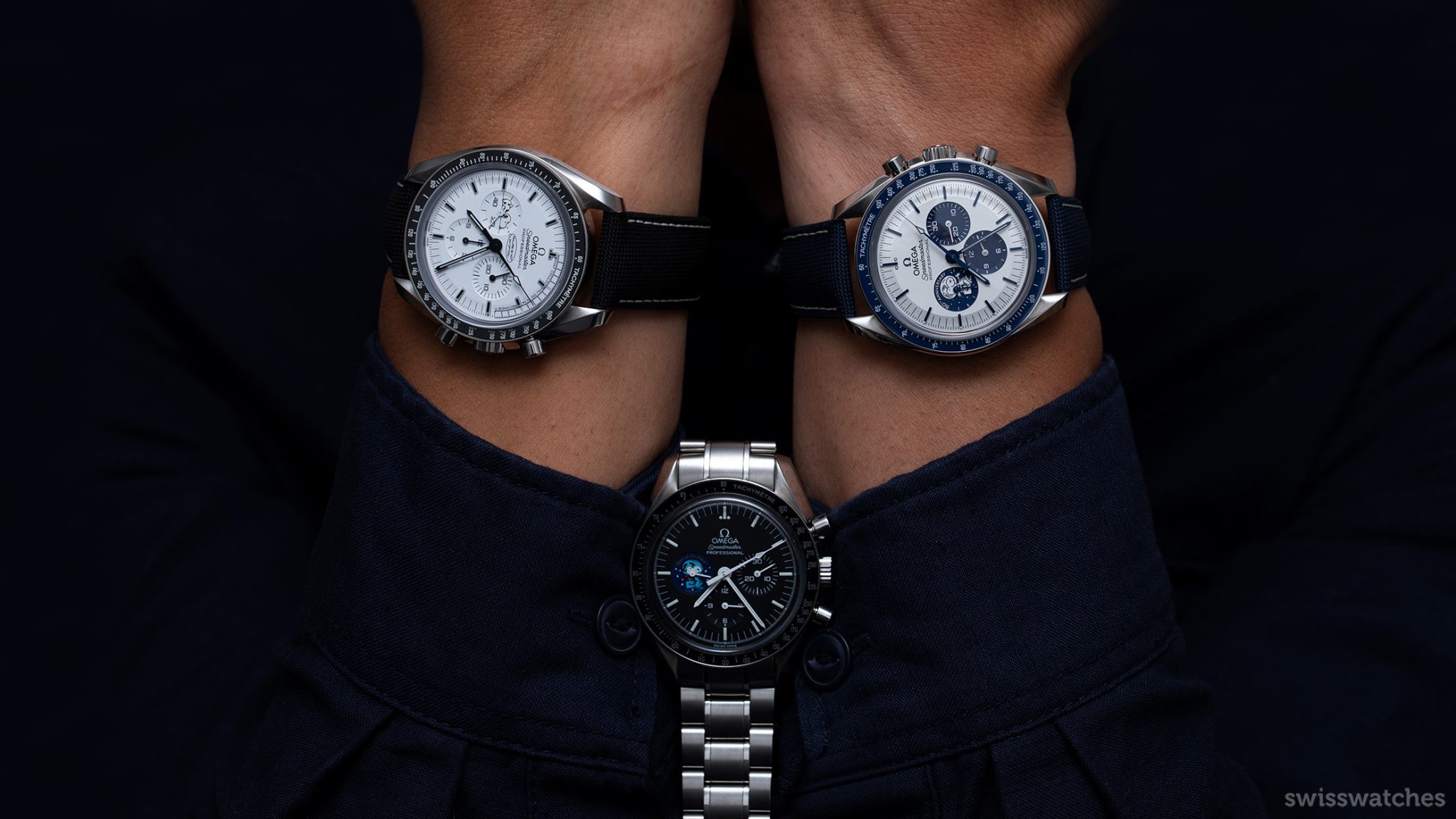
By contrast, the 2015 watch has several thoughtful quotes and quirks. It seamlessly combines amusing and personal elements with a clean and chic colour scheme. Additionally, the fact that it was the first OMEGA Speedmaster with a ceramic bezel and Super-LumiNova is an extra-special element to what is already an excellent and unusual watch.
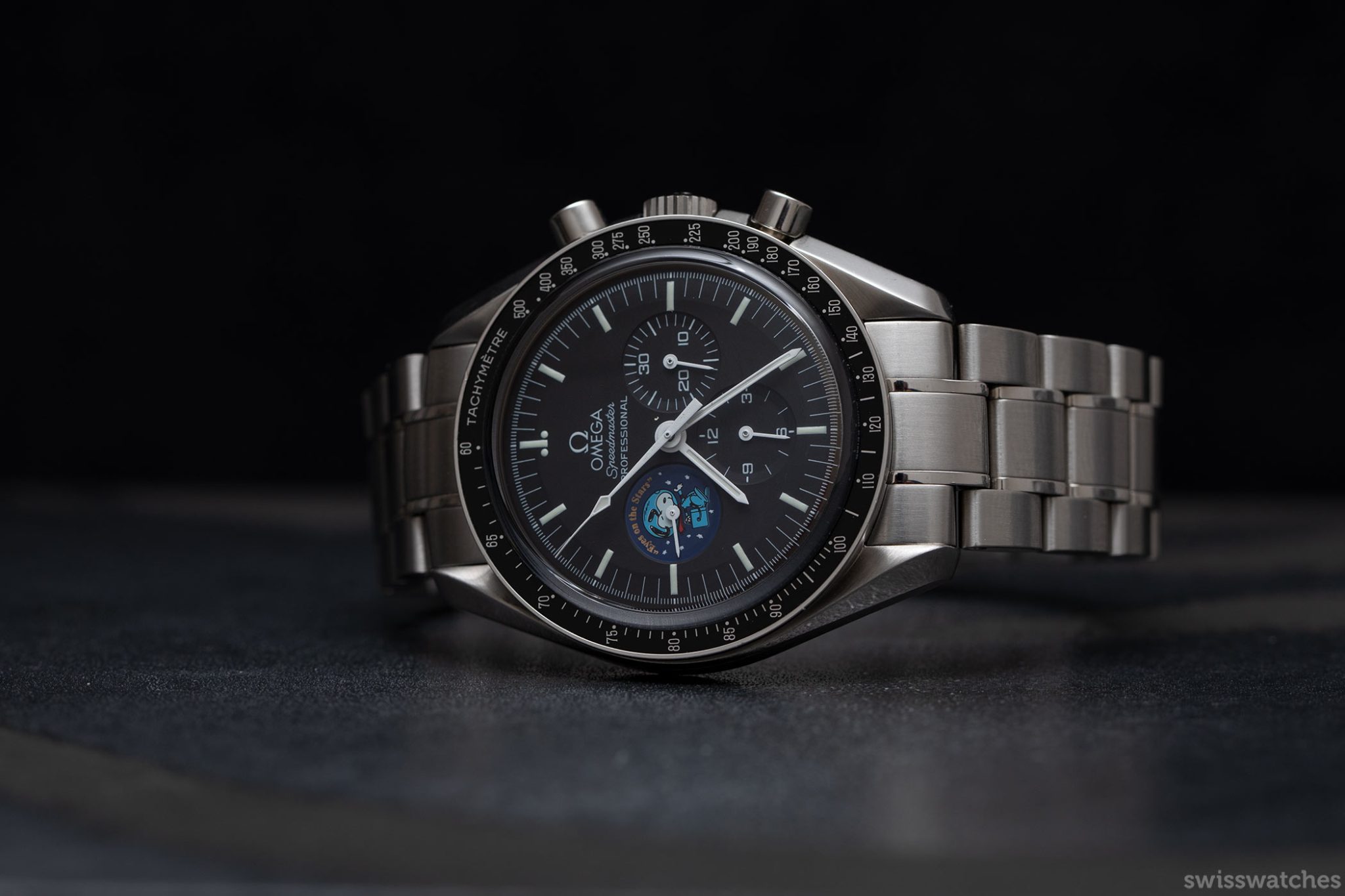
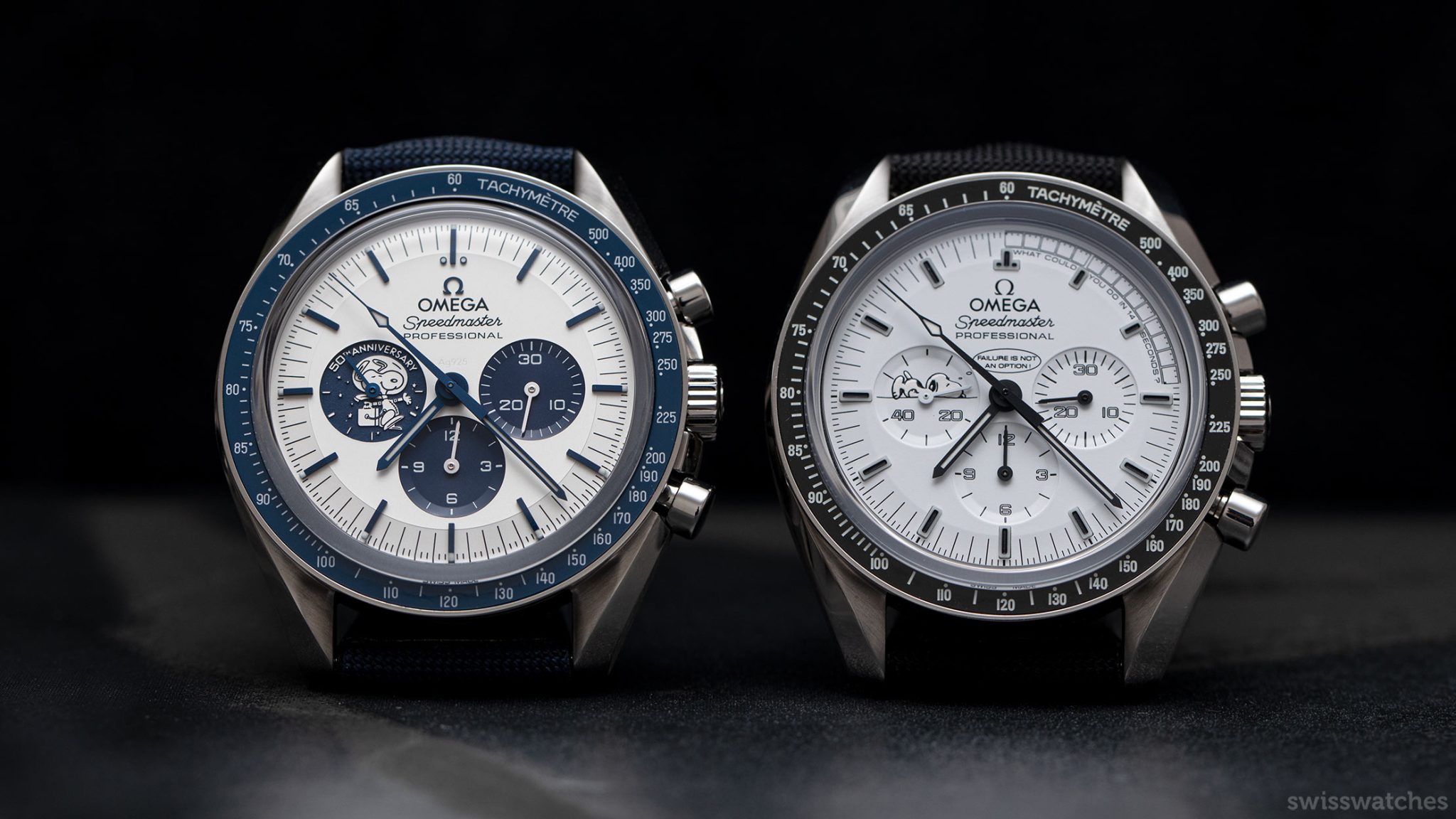
Finally, the 2020 version, in particular the caseback, is a promising sign of an emerging trend. It seems that Snoopy watches are almost going to serve as a vehicle upon which OMEGA can experiment and have some fun. Likewise, the watches allow fans to enjoy something close to their hearts – whether it be the incredible craftsmanship, or their favourite childhood cartoon.
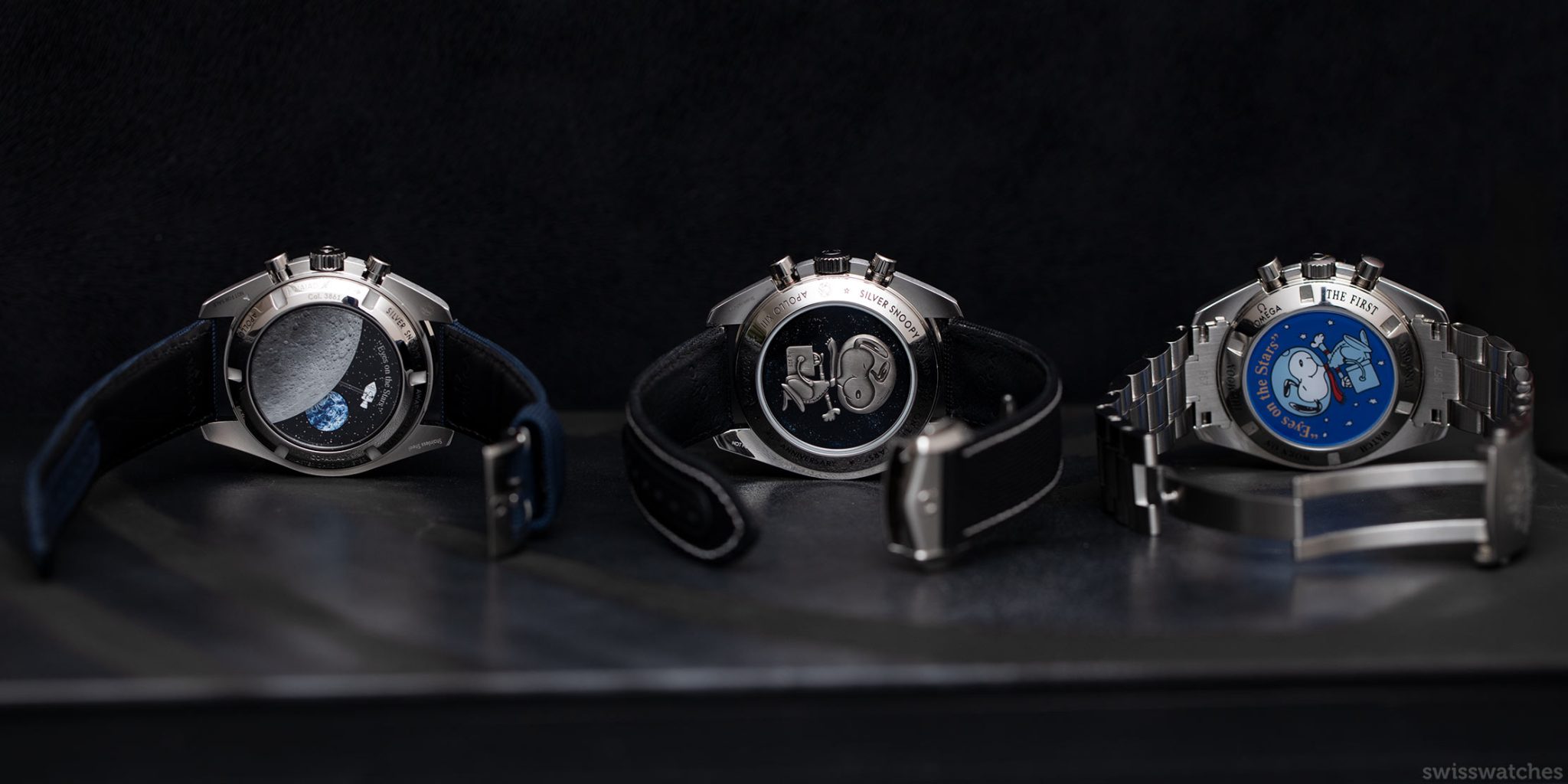
Of course, the latter two versions look less like Moonwatches, partly due to the lack of bracelet. That said, buyers of the Speedmaster were offered leather straps ever since the start of commercial production. Furthermore, the details on the 2015 and 2020 versions are poignant and creative, making them feel – if not look – like a Moonwatch.
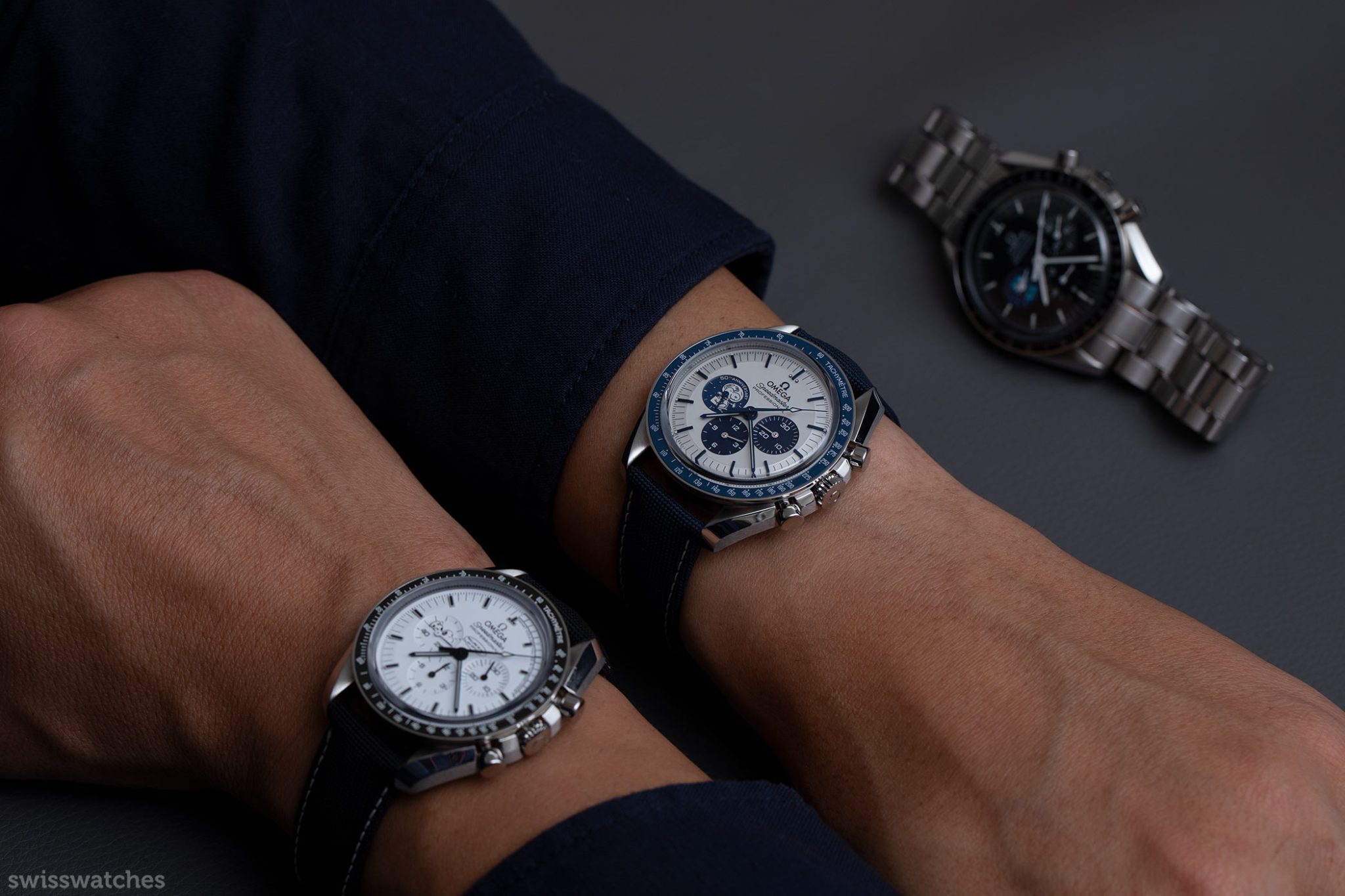
The Prices
This brings me to the prices of these timepieces. The 2020 version is significantly more than the previous two watch’s original selling prices. However, it does offer a lot for its 9,400 euro price tag. There’s not only the stunning caseback but also the Master Chronometer status of the calibre.
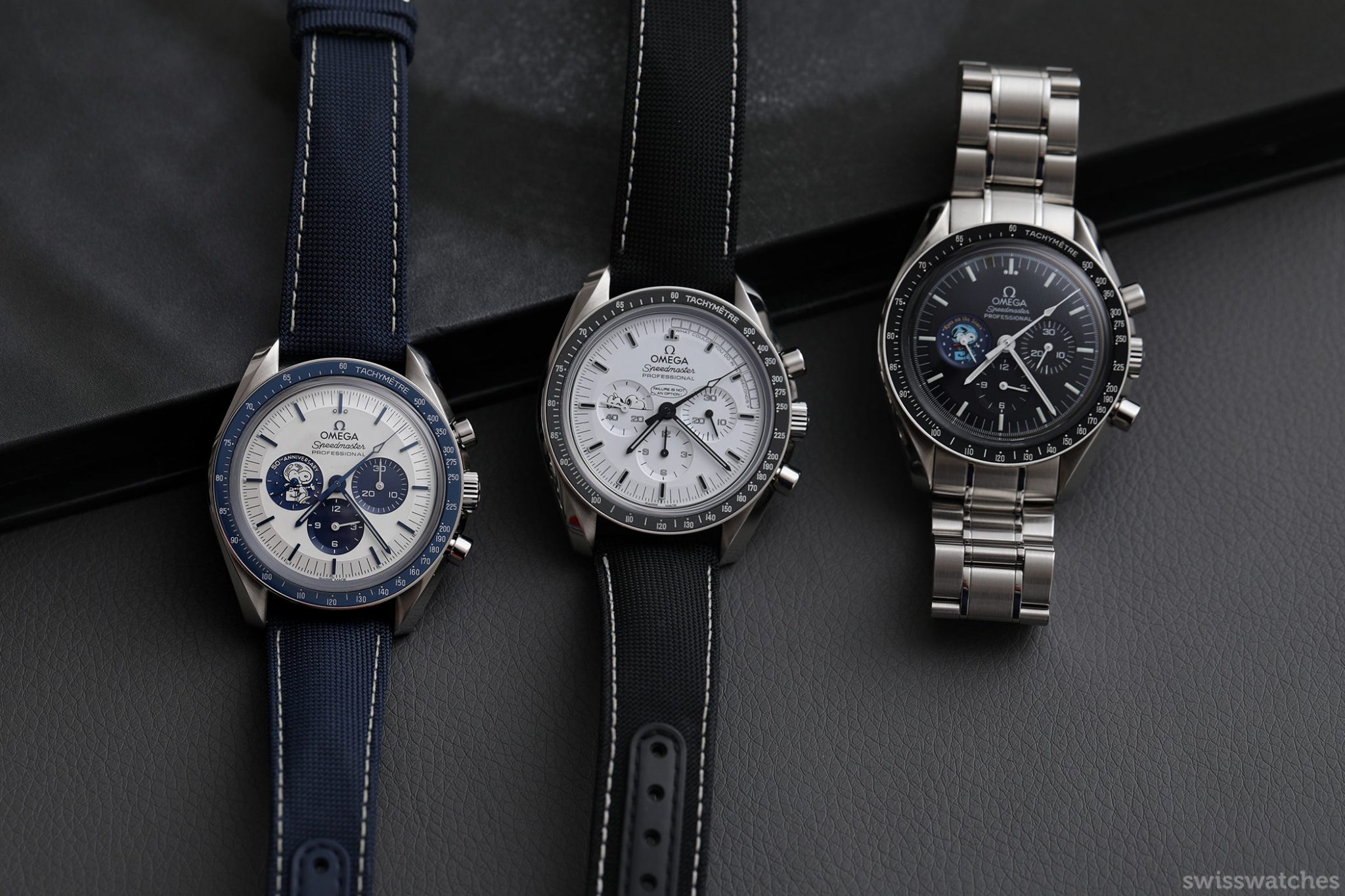
Furthermore, think about how the prices of the previous two limited edition models increased. We can assume that the 2020 Snoopy watch will peak on the pre-owned market in coming months, before slowly climbing down as the watch becomes more readily available. That said, we’ll have to wait and see how OMEGA handles the matter of availability for what will likely be a coveted timepiece – despite not being a limited edition.
The Winner
Having spent time with all three watches, it seems my opinion still matches the general consensus. The first time I picked up the OMEGA Snoopy watches, one after the other, I immediately knew which was my favourite – the 2015 Silver Snoopy Award.
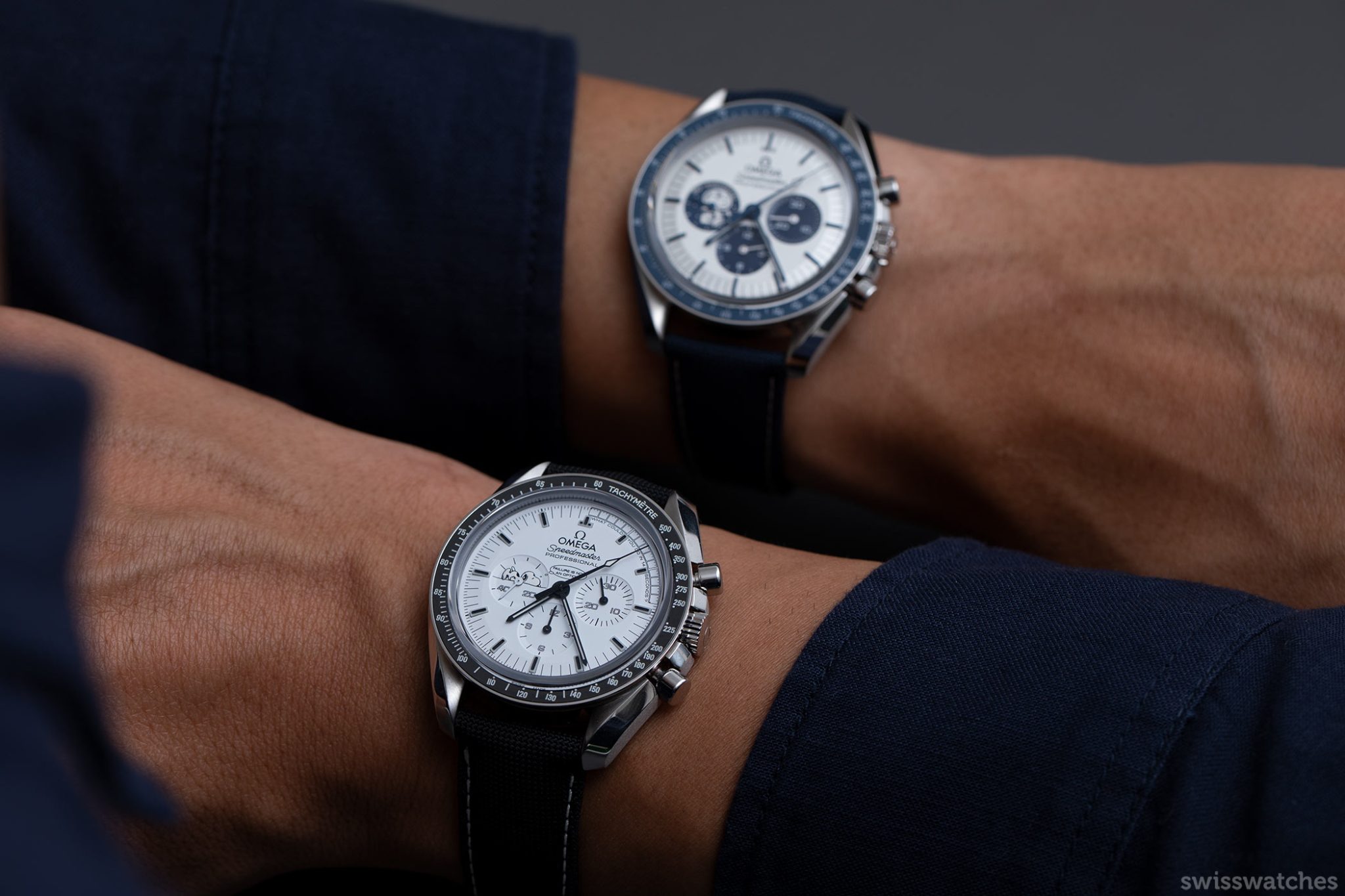
Its minimalist aesthetic is impressive, successfully incorporating expressive and even emotional design elements without becoming tacky. Given that this is essentially a product for the likes of avid horology, astronomy, or even Snoopy geeks, the watch has an insanely cool vibe.
Sources:
Charles M. Schulz Museum. n.d. Charles M. Schulz Museum | Official Website. [online] Available at: <https://schulzmuseum.org/> [Accessed 27 November 2020].
Thelen, F. and Schorn, M., 2020. 10 X DNA. 1st ed. Frank Thelen Media.
Marquié, A. and Rossier, G., 2017. MOONWATCH ONLY. 1st ed. La Croix/Lutry: Watchprint.com
NASA. n.d. National Aeronautics And Space Administration. [online] Available at: <https://www.nasa.gov/> [Accessed 27 November 2020].
